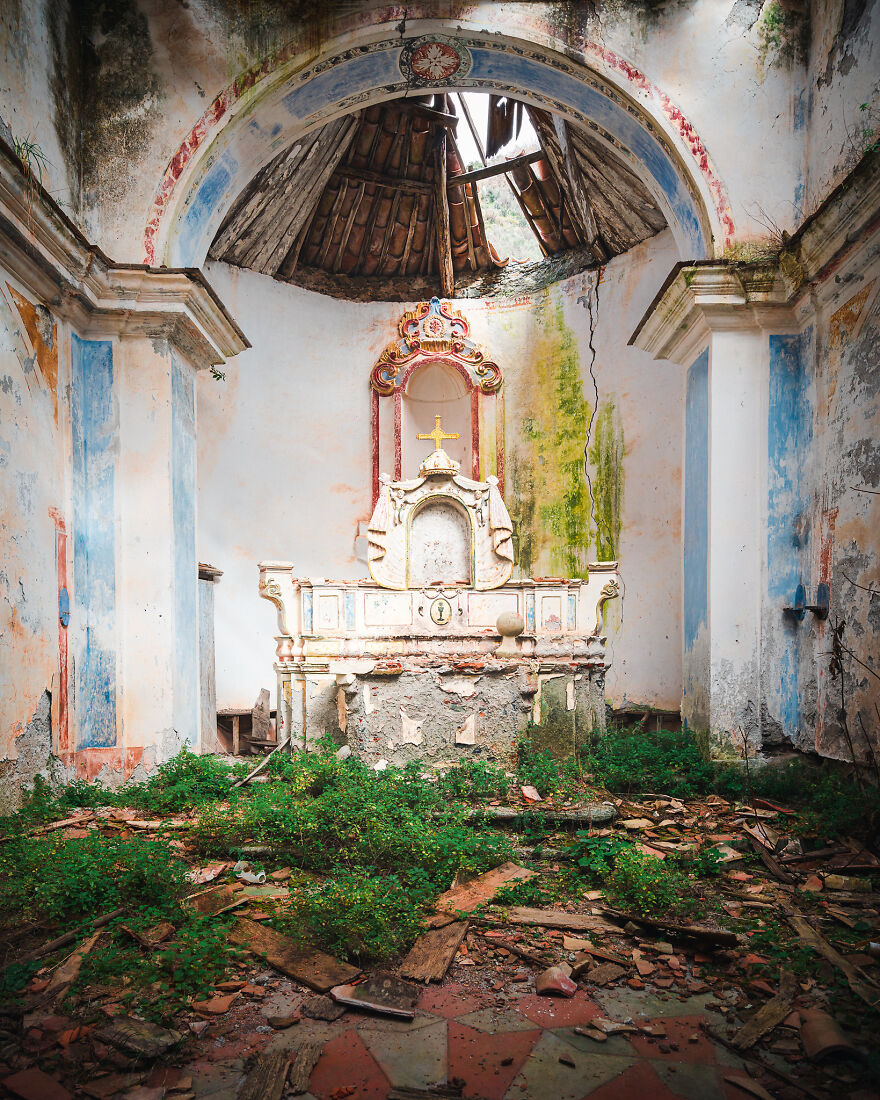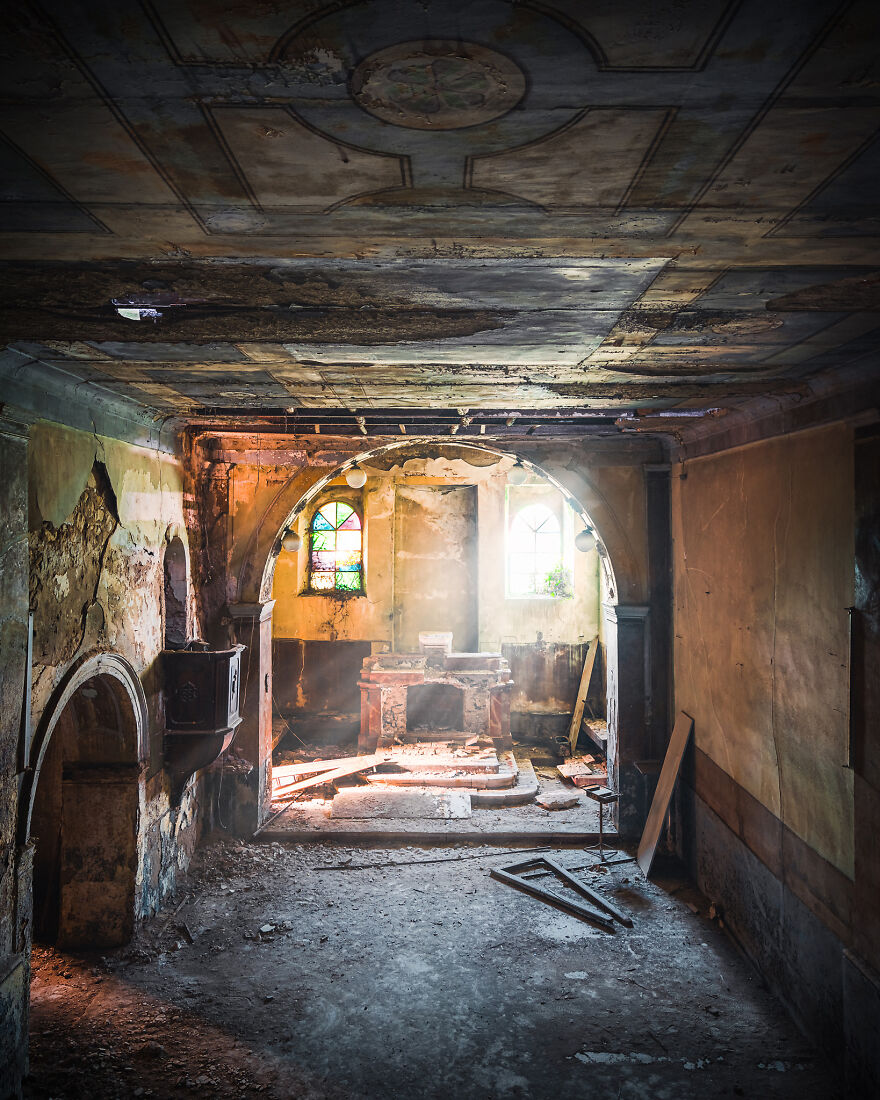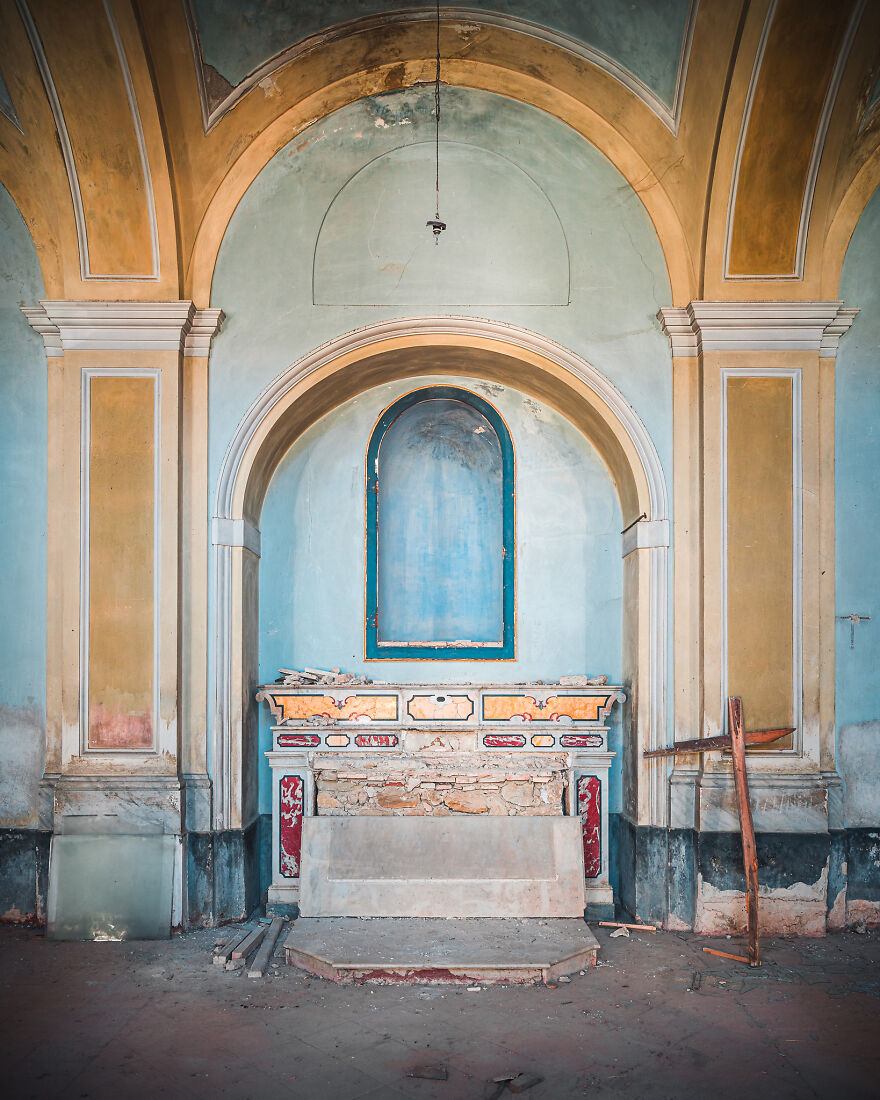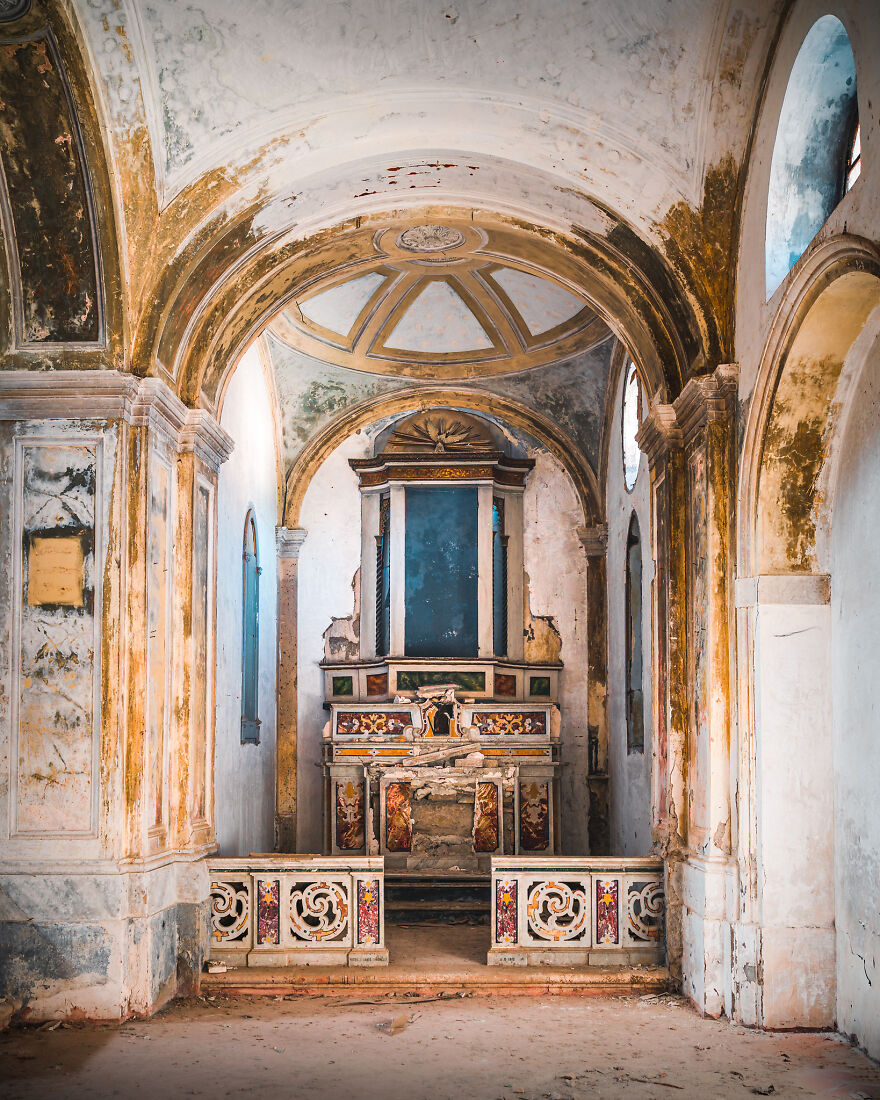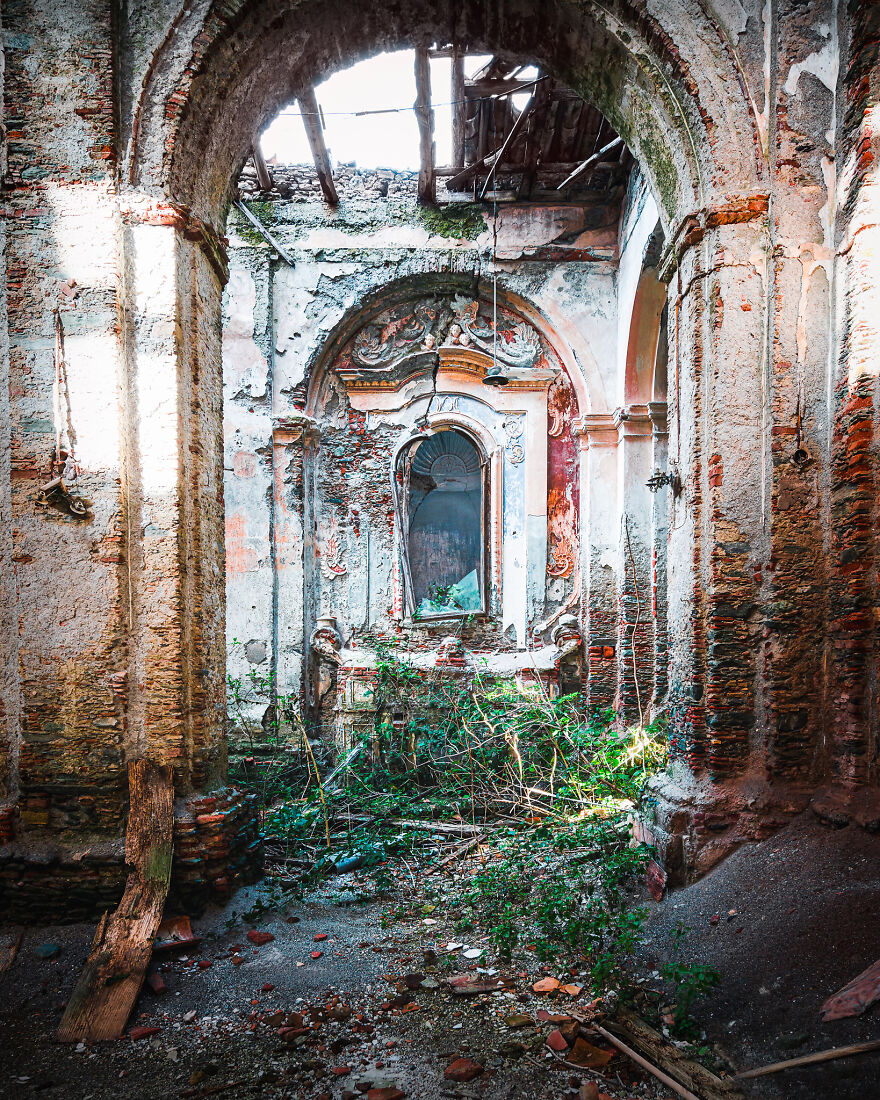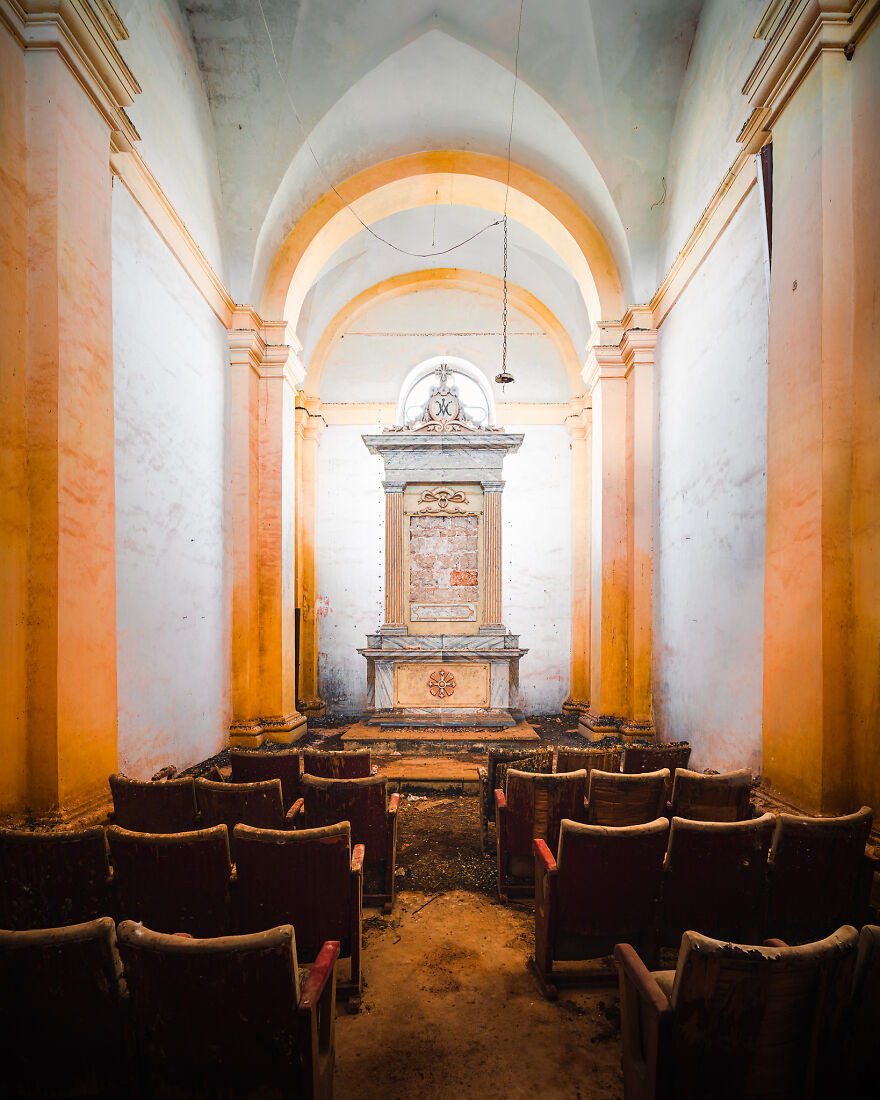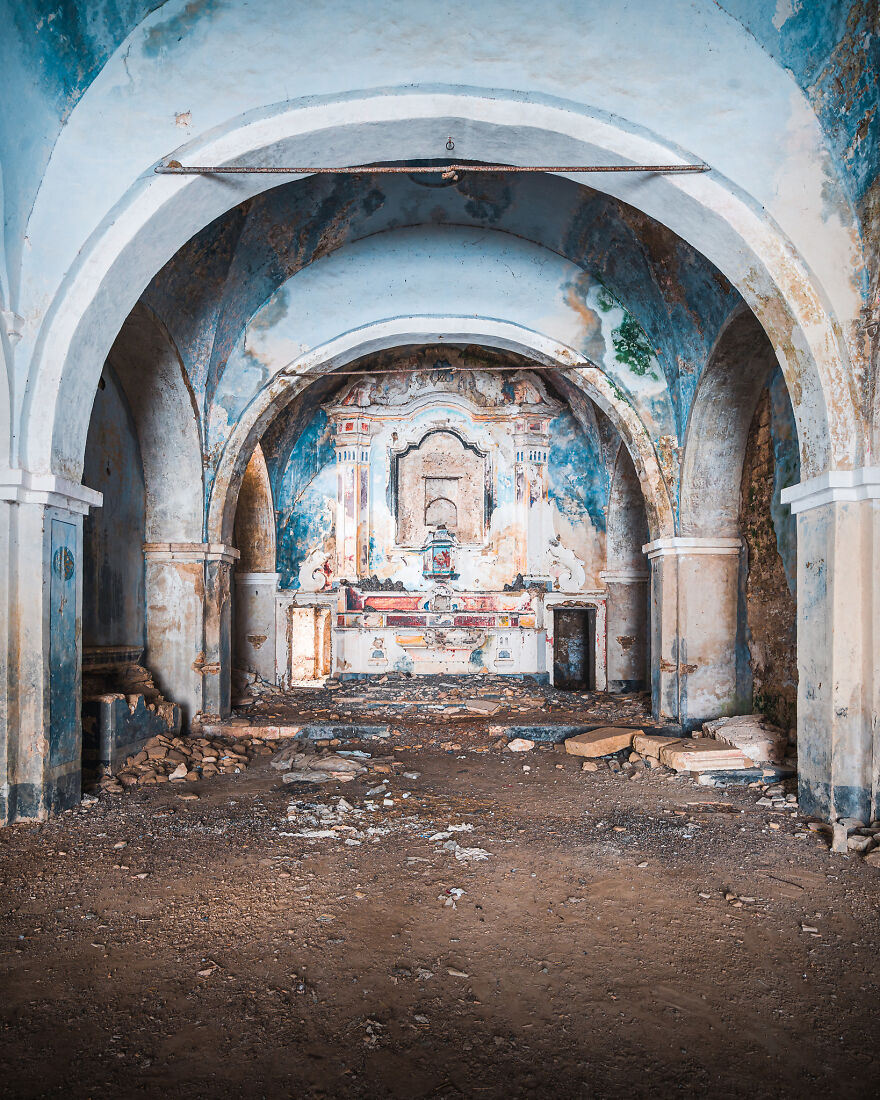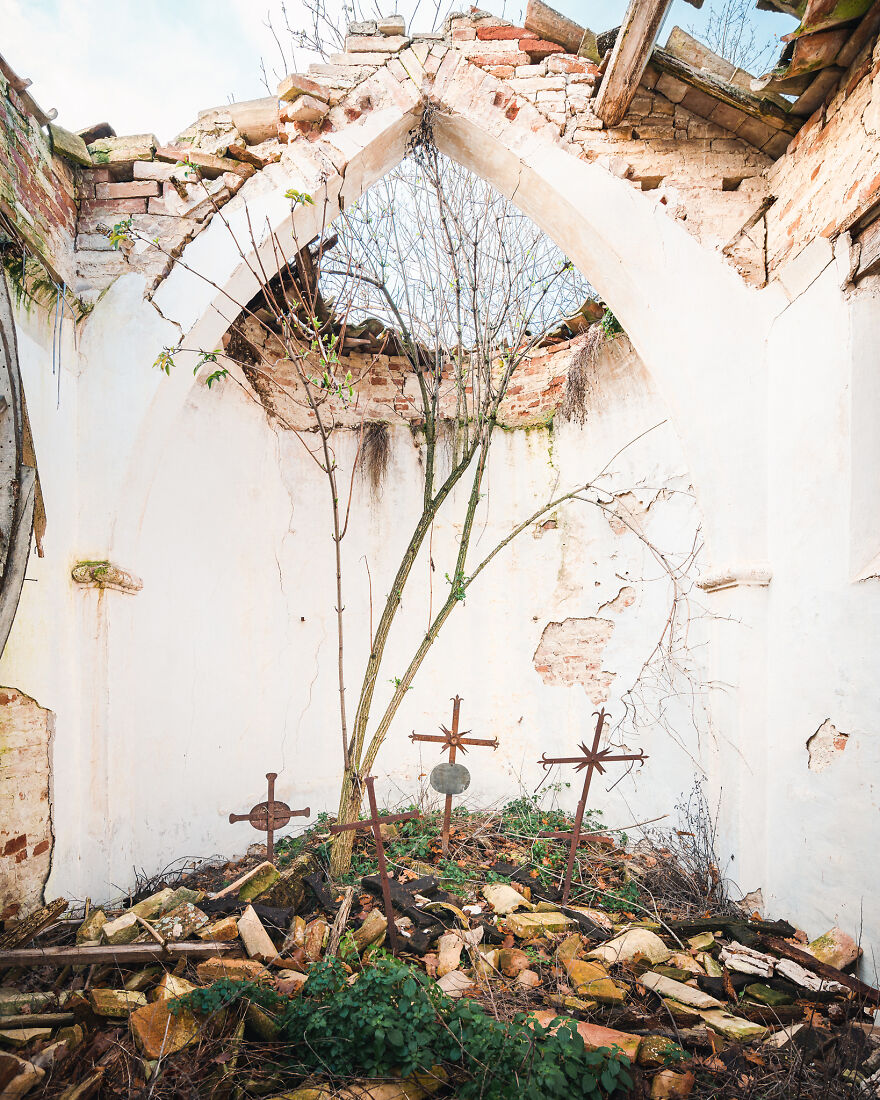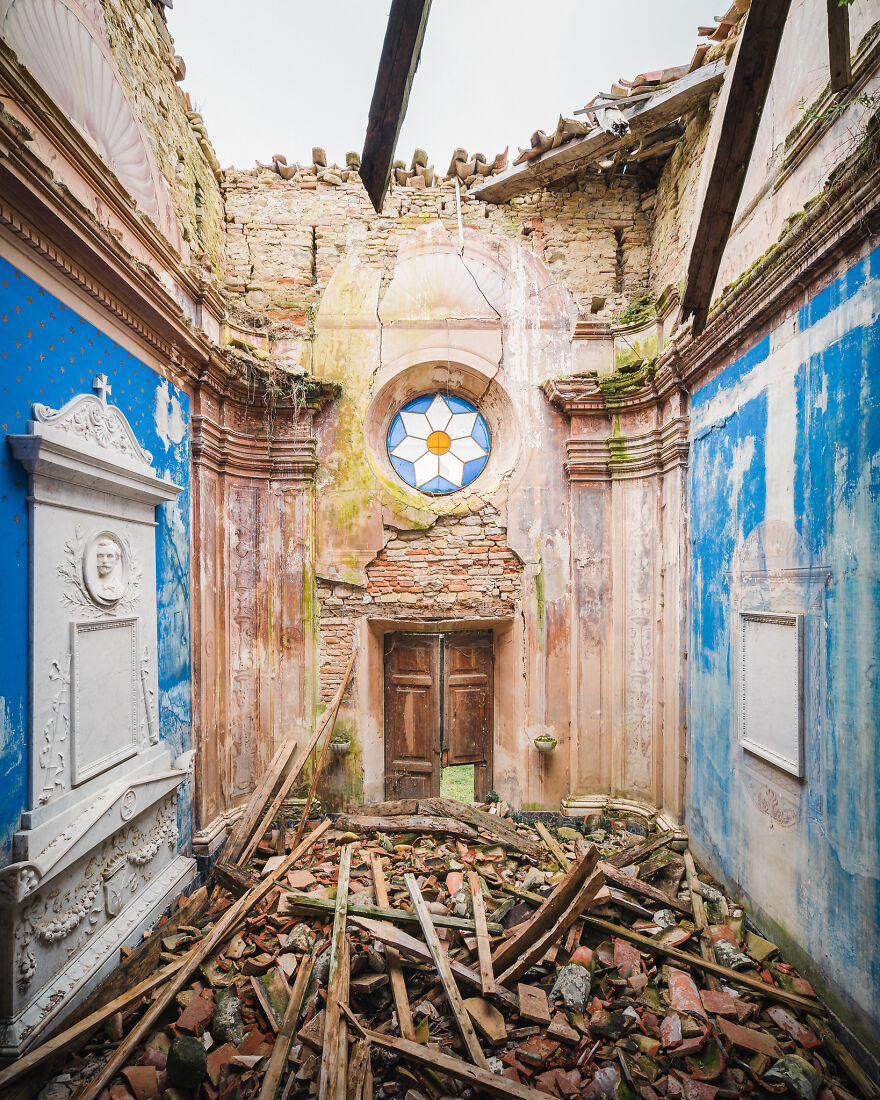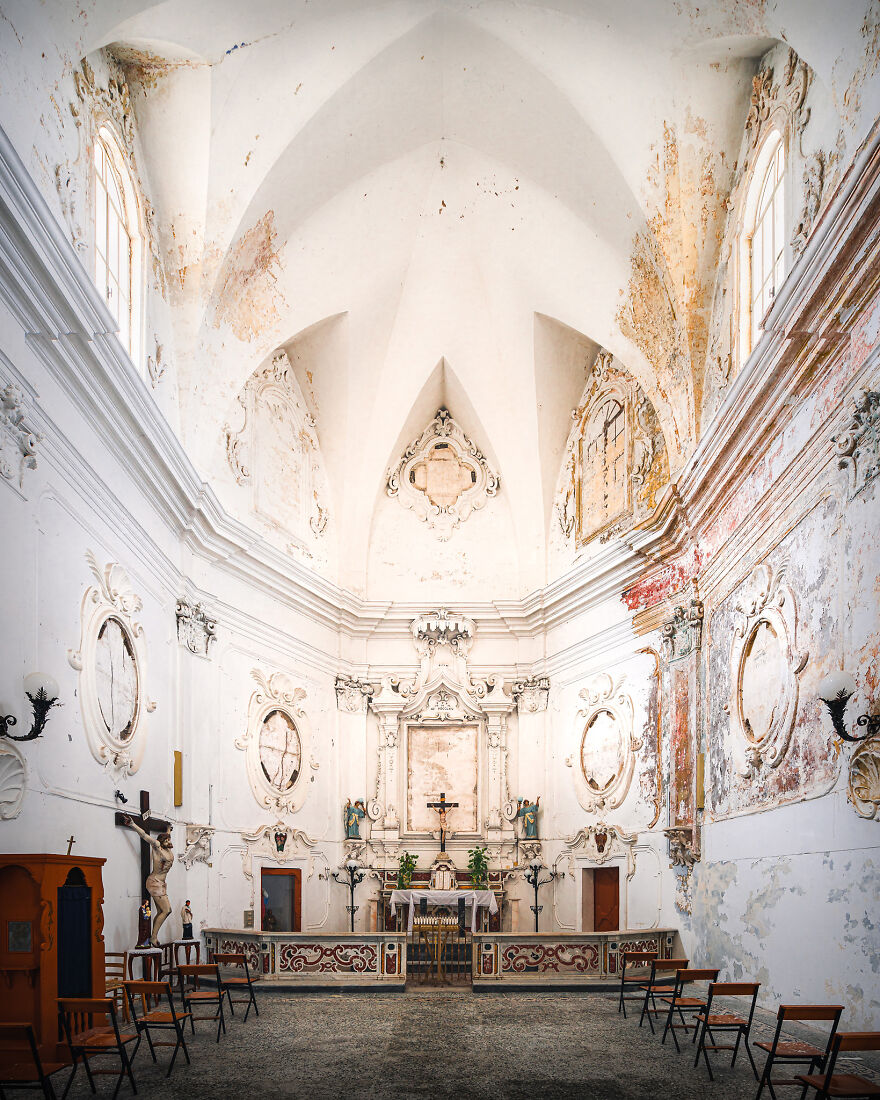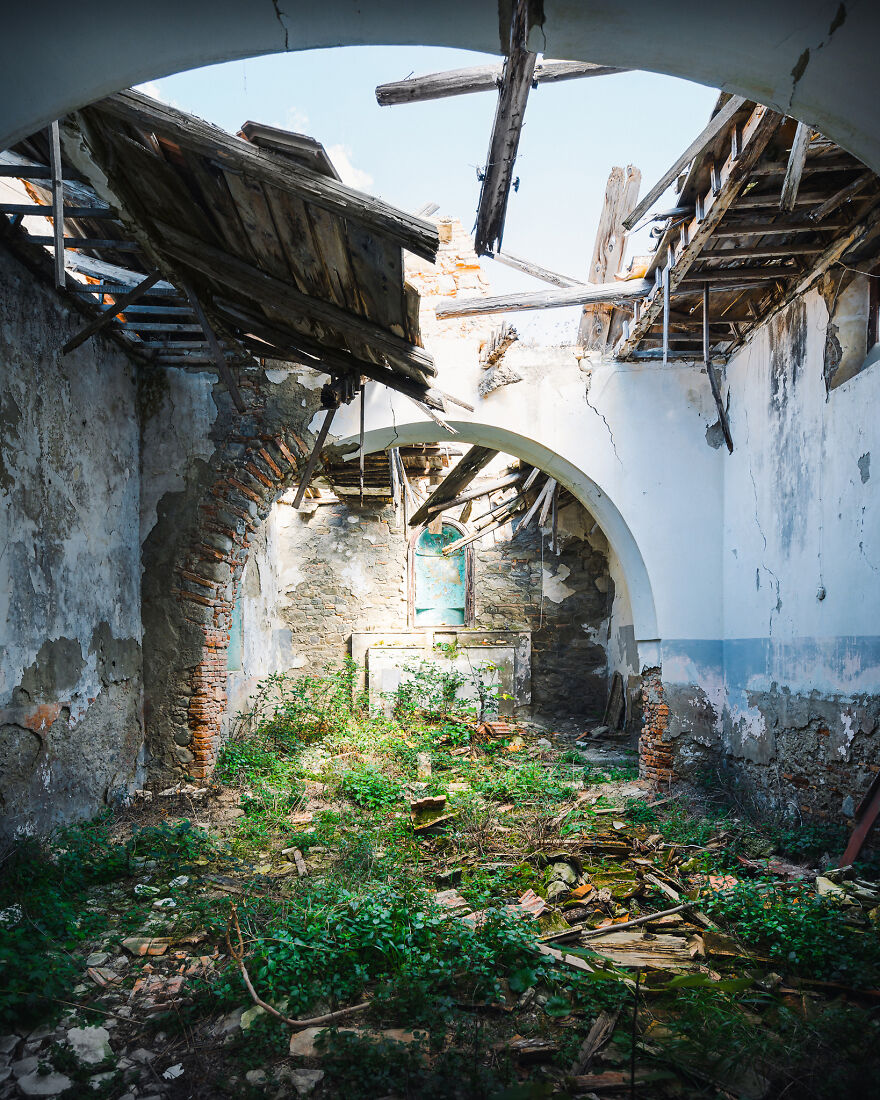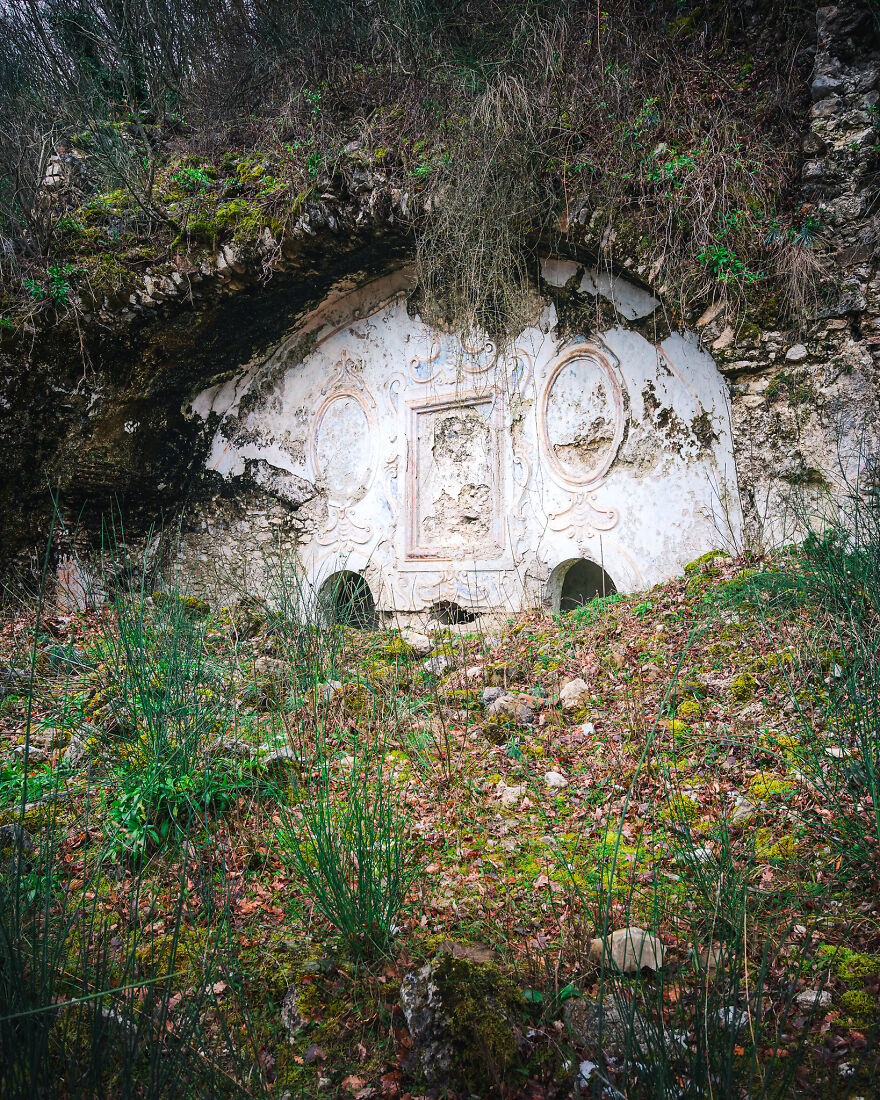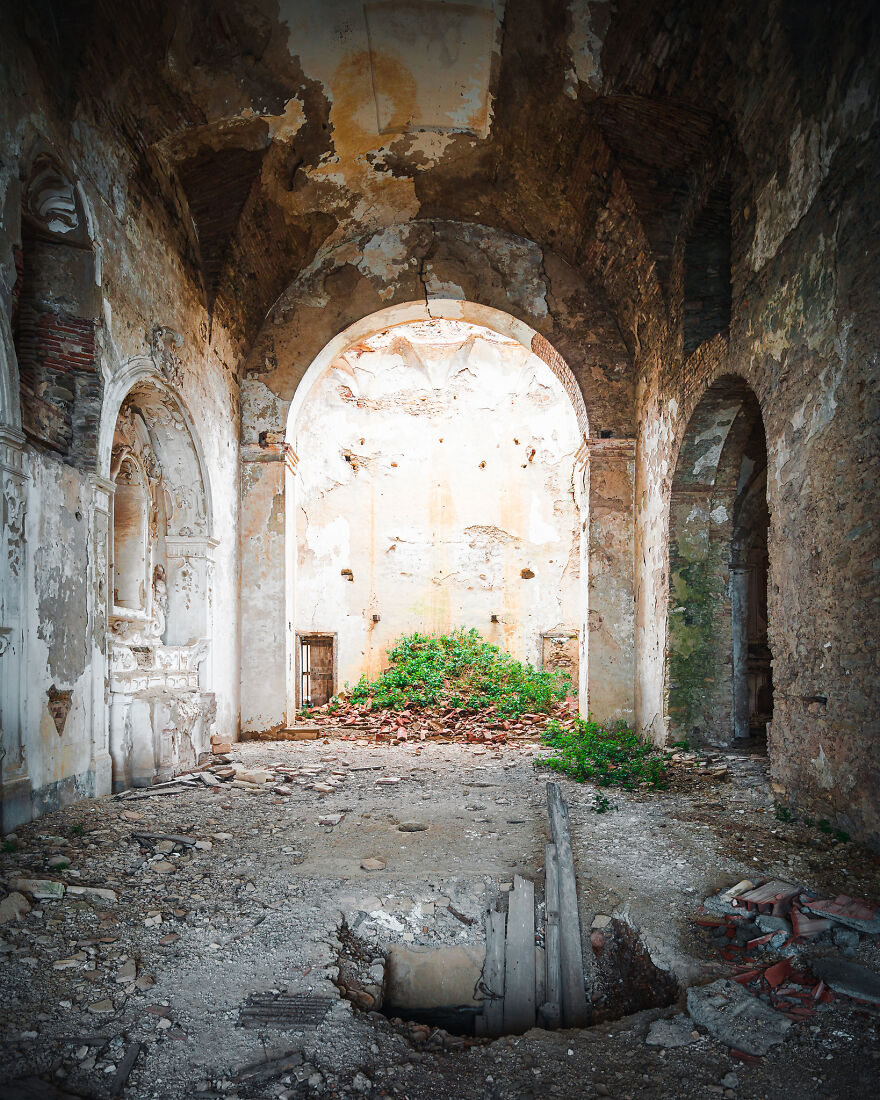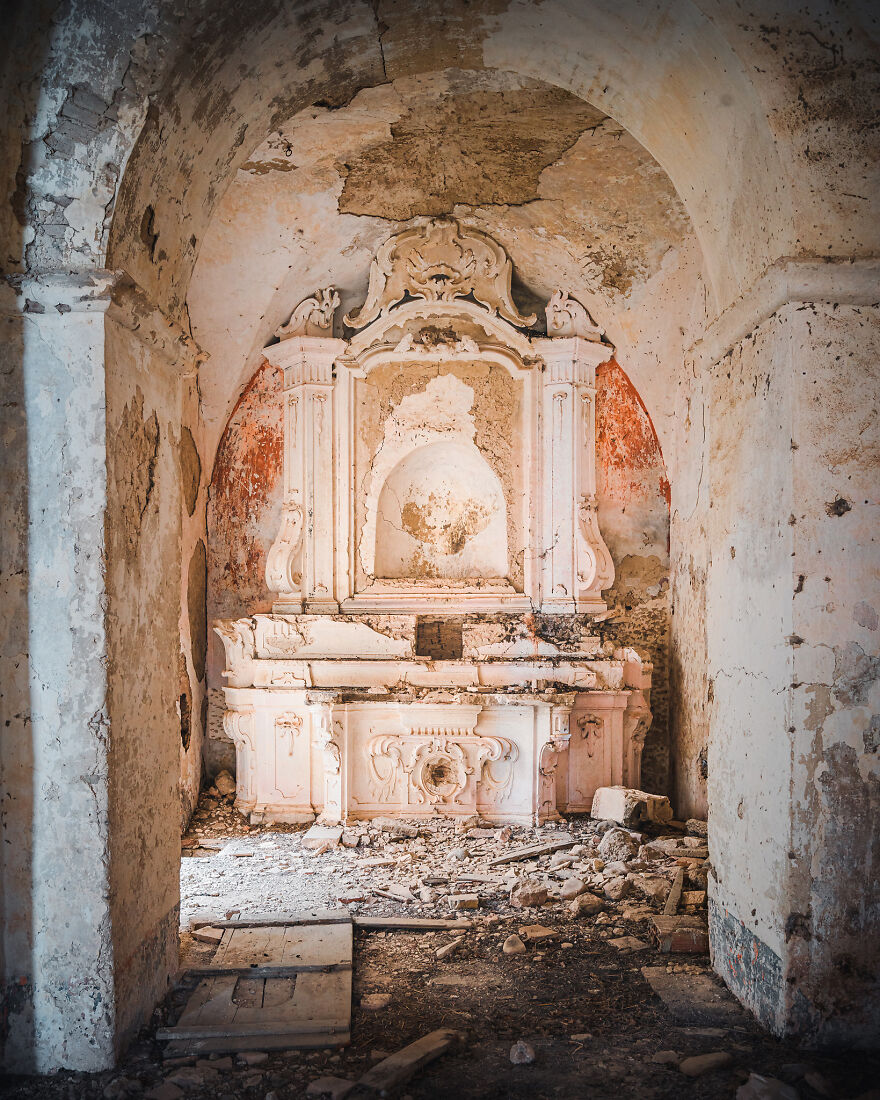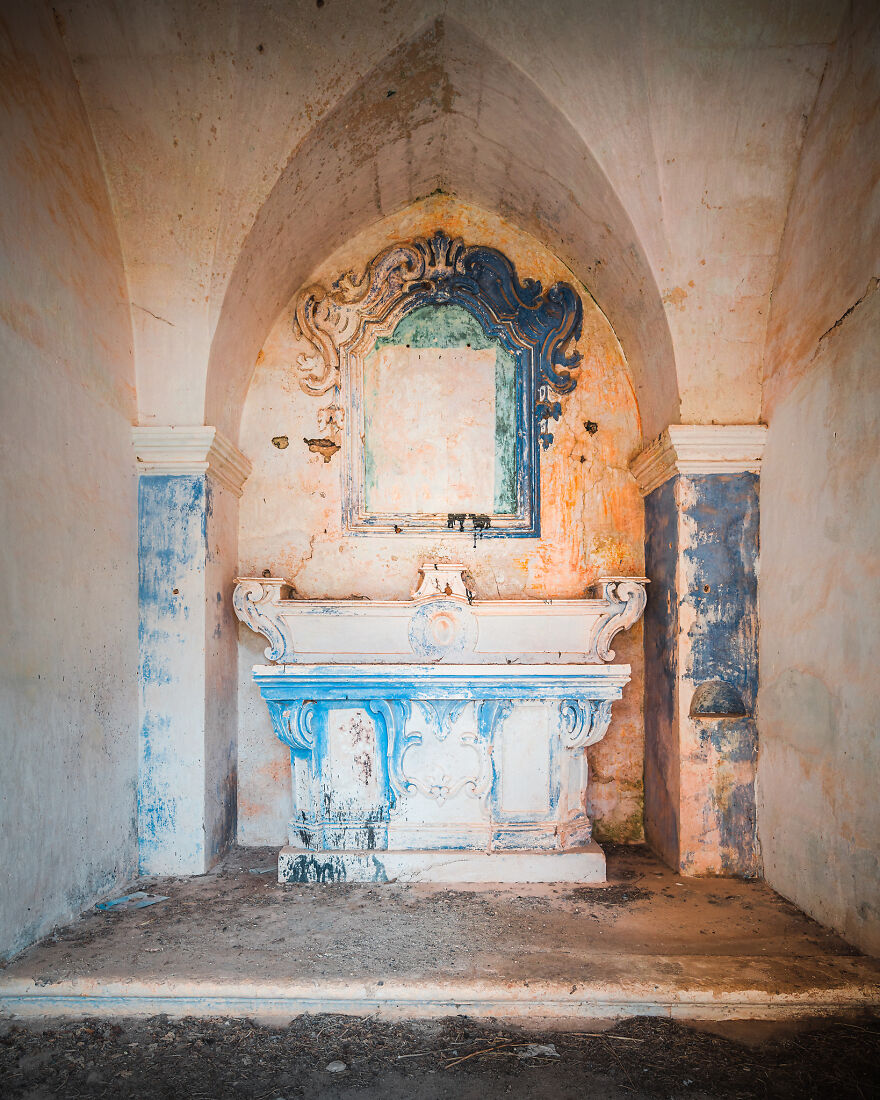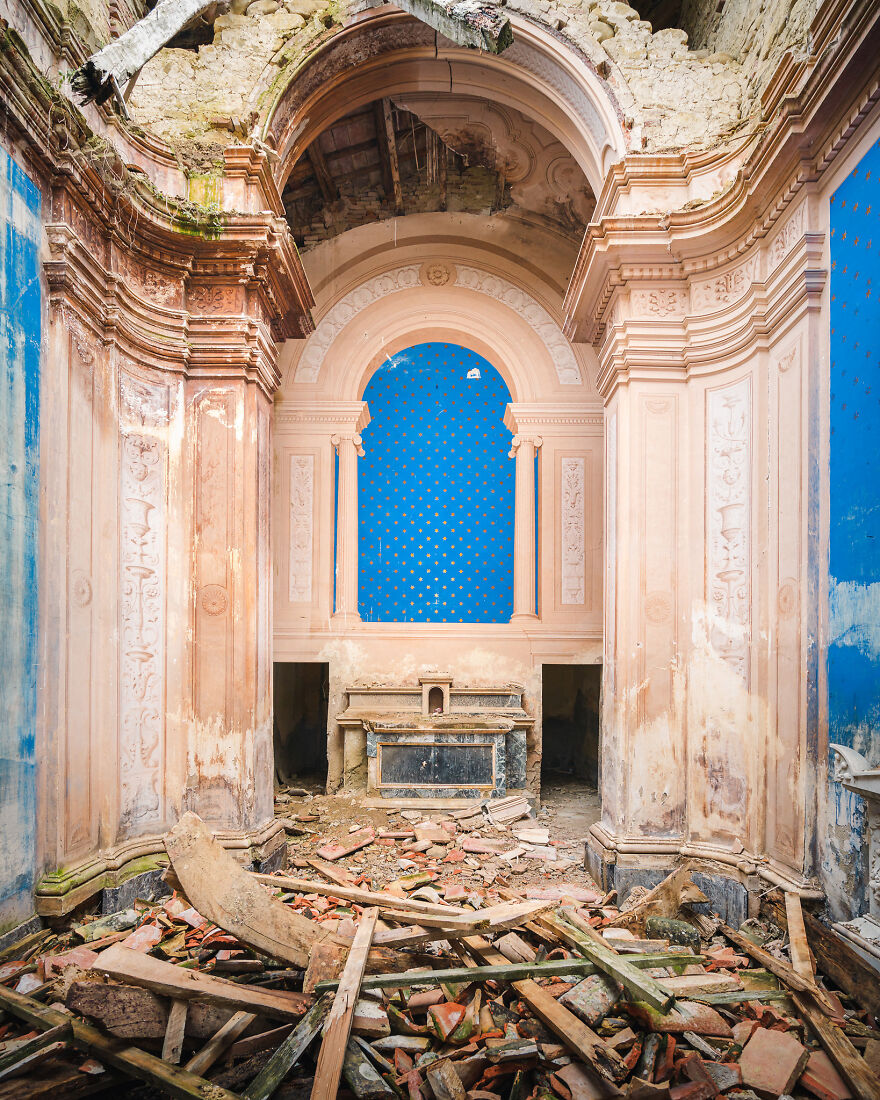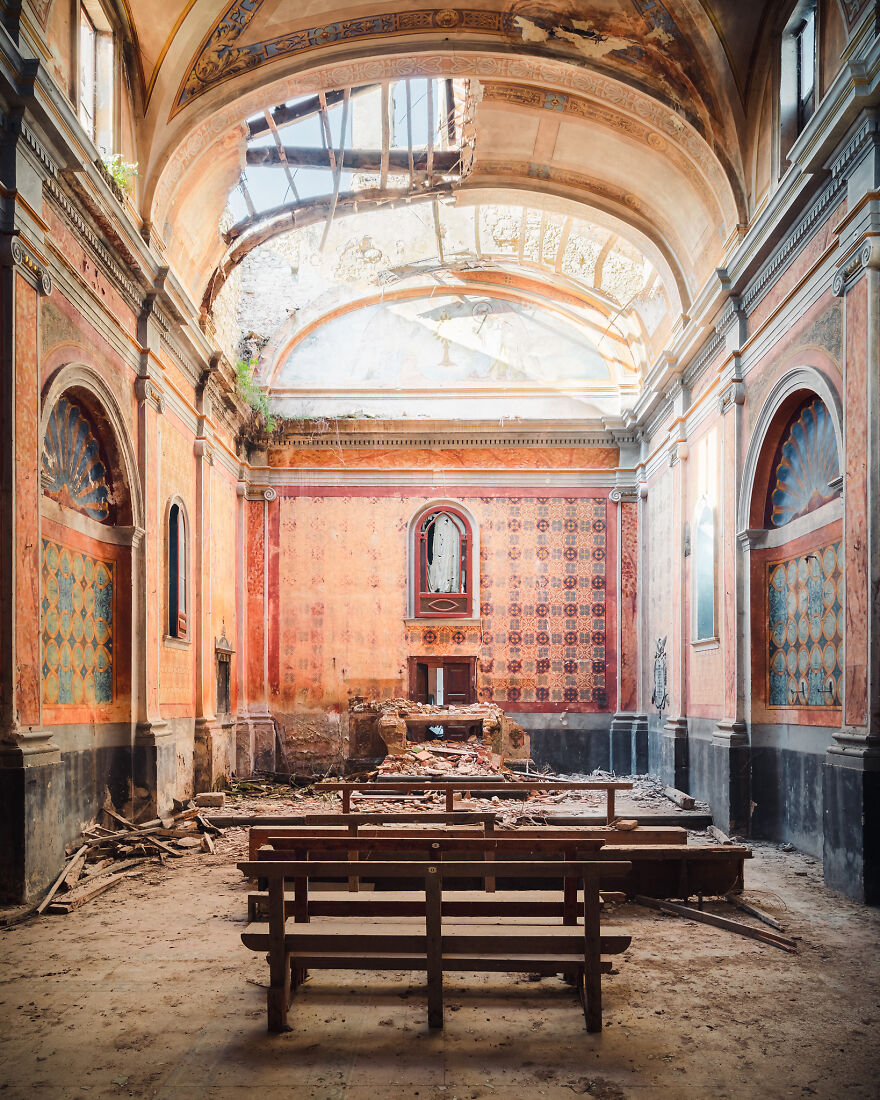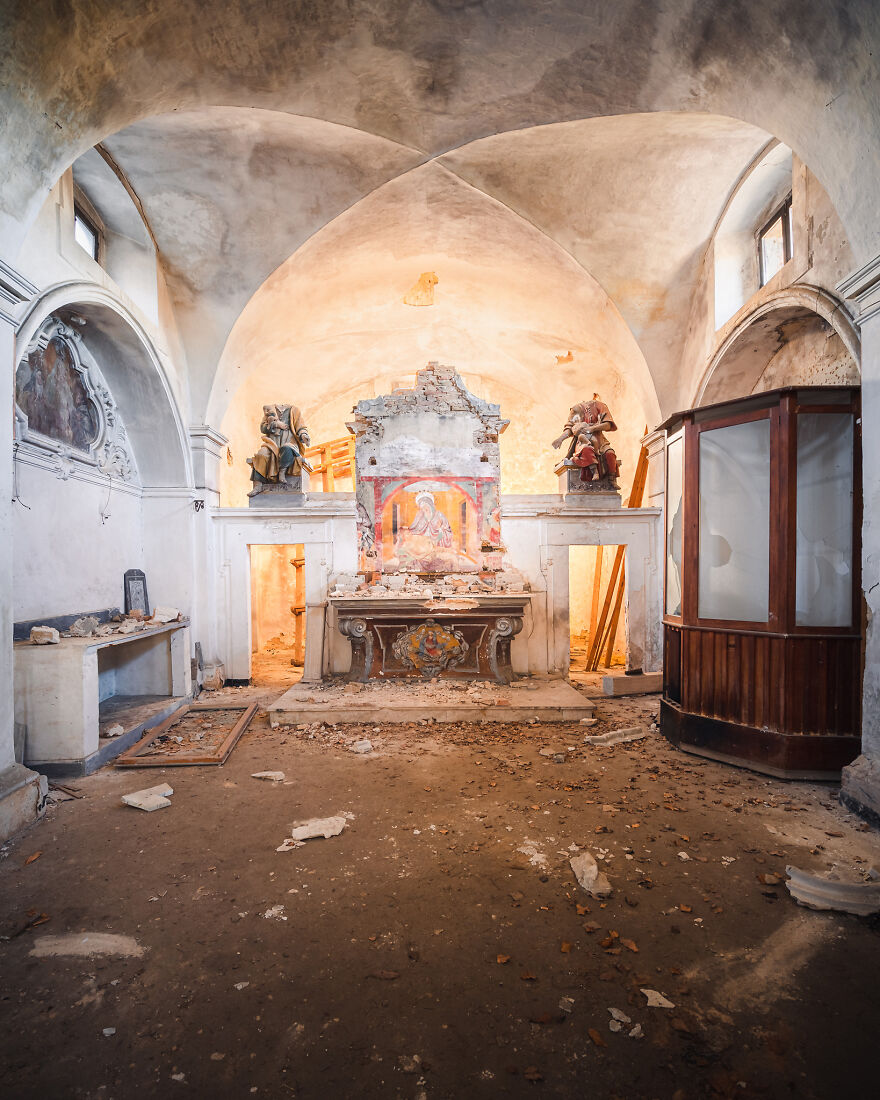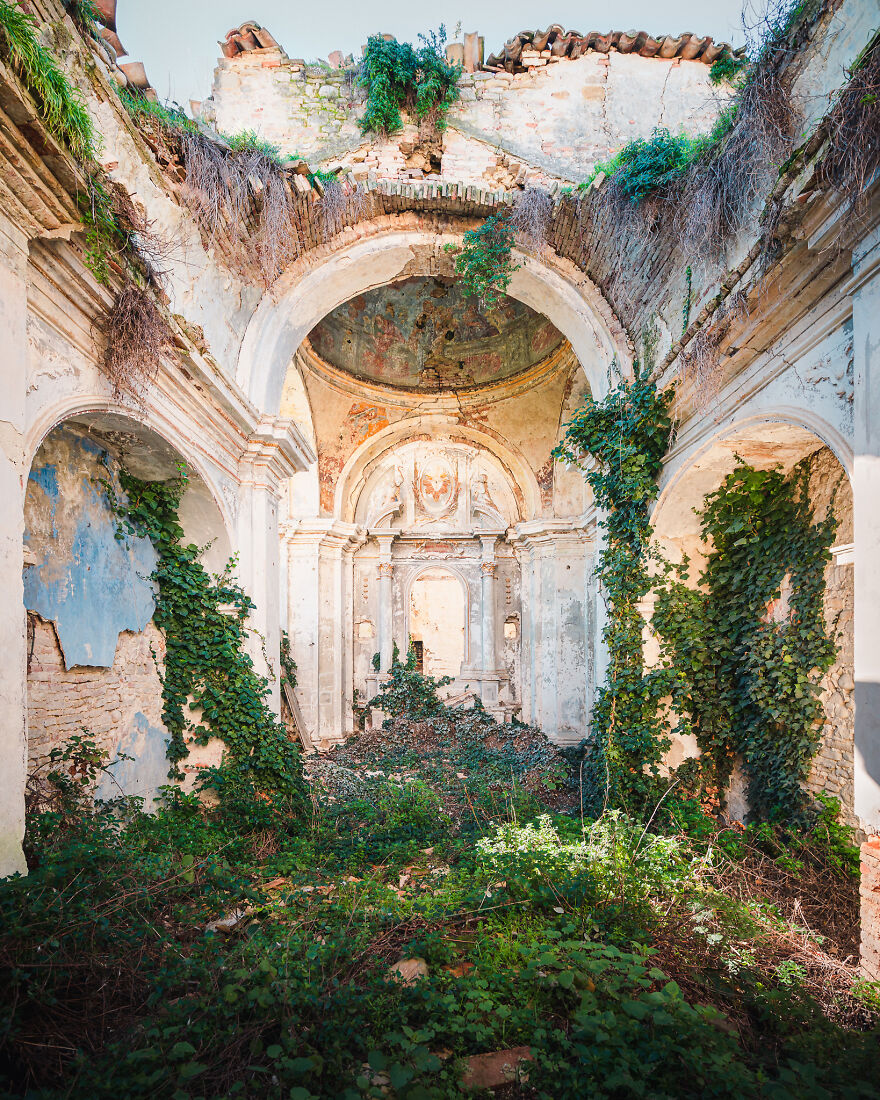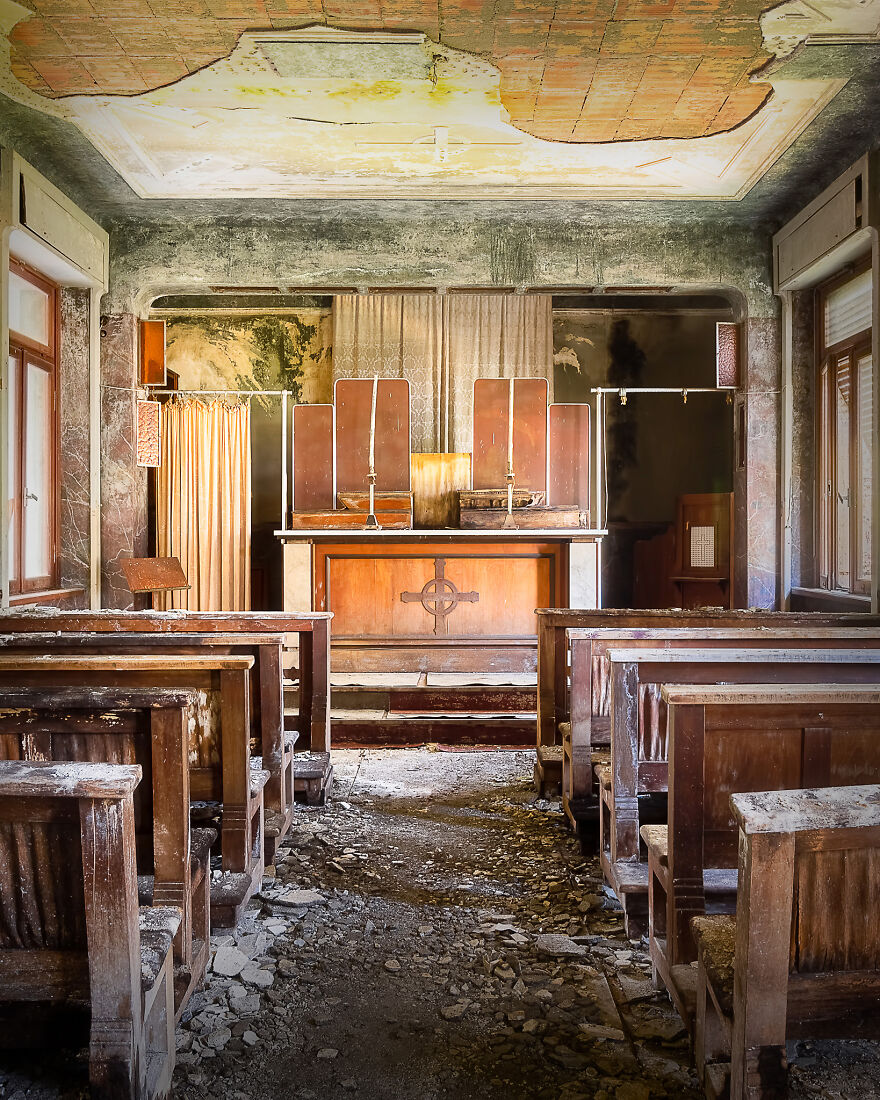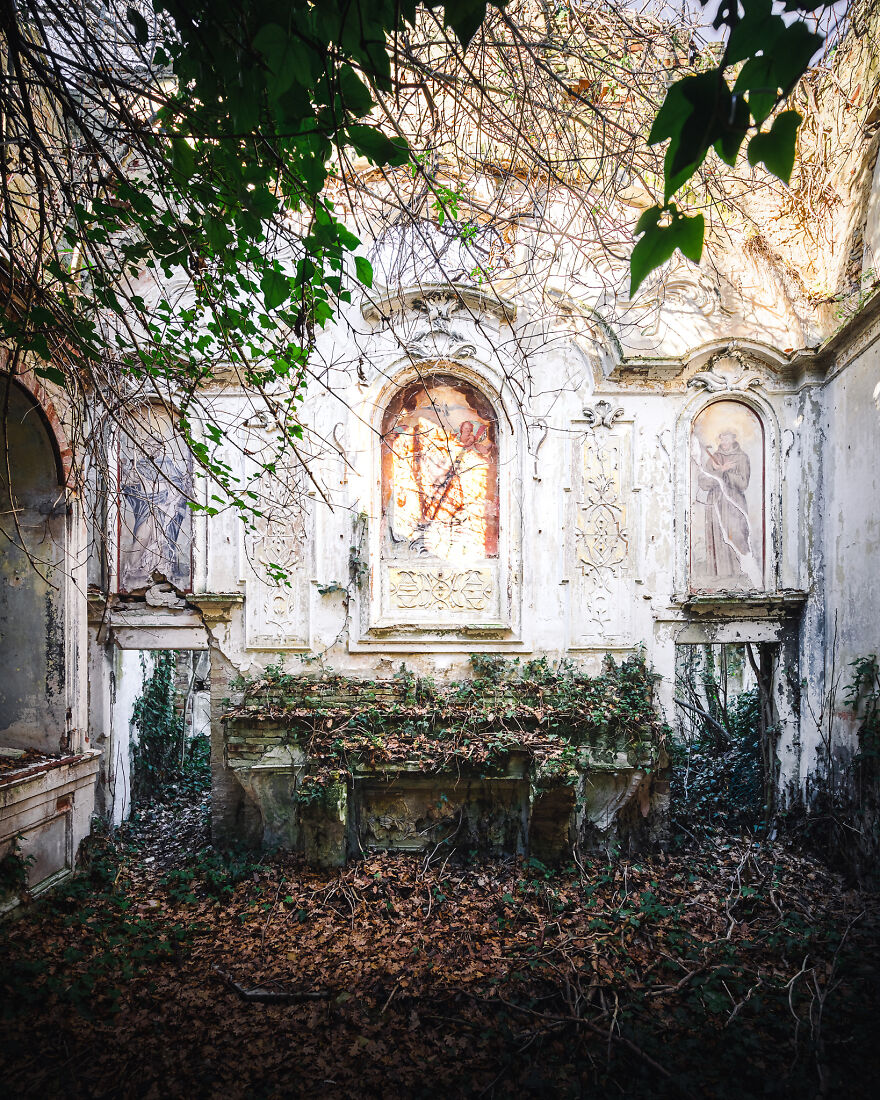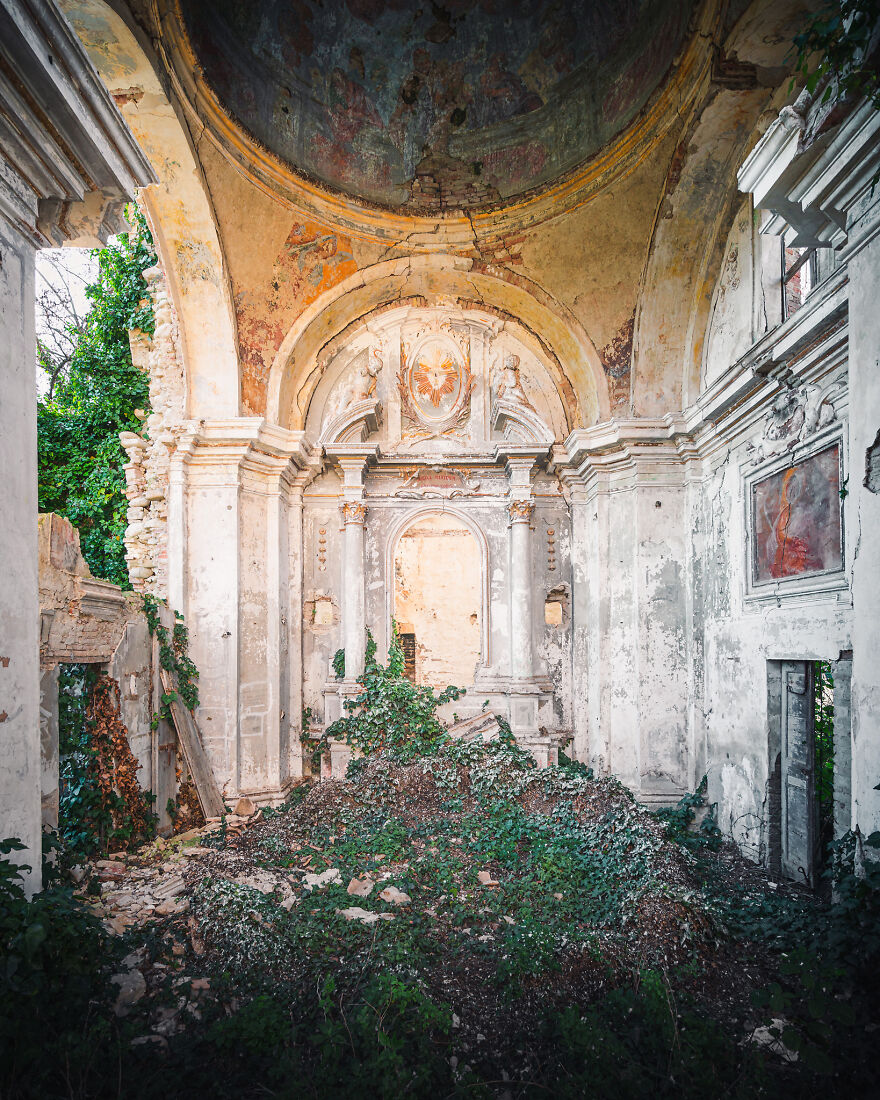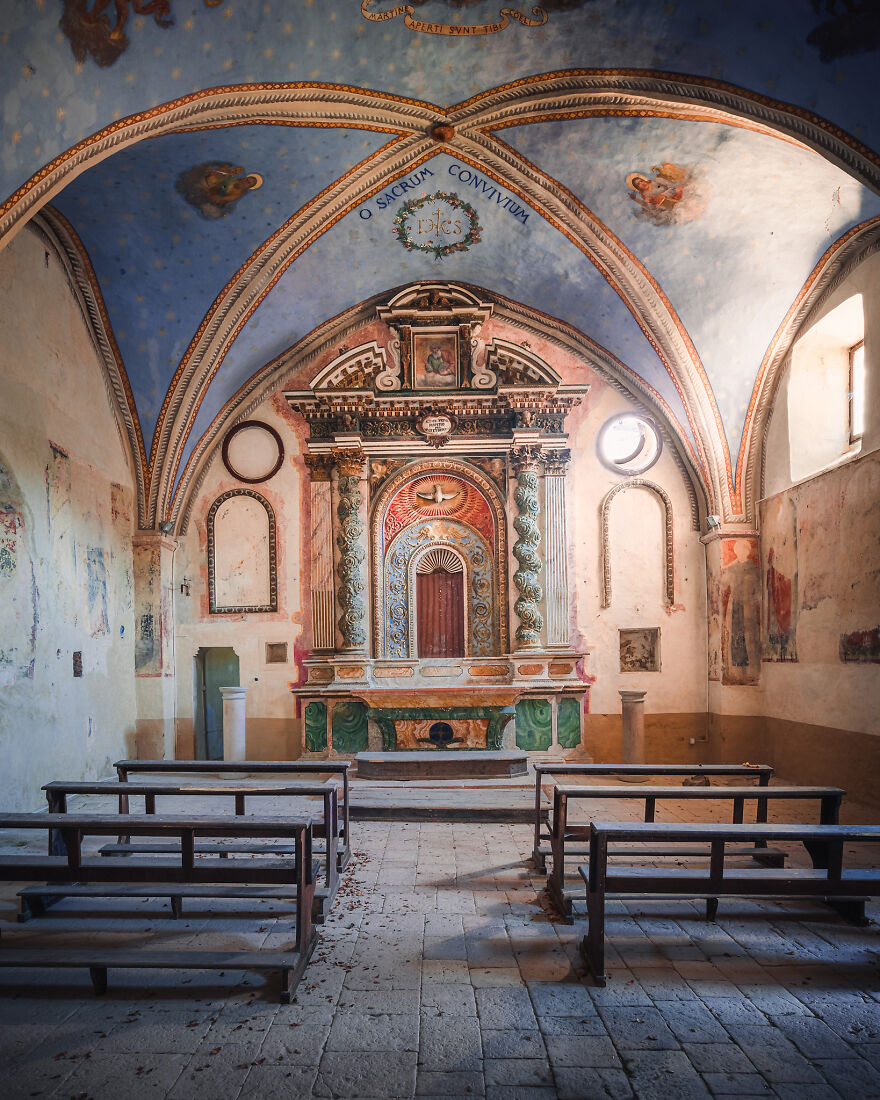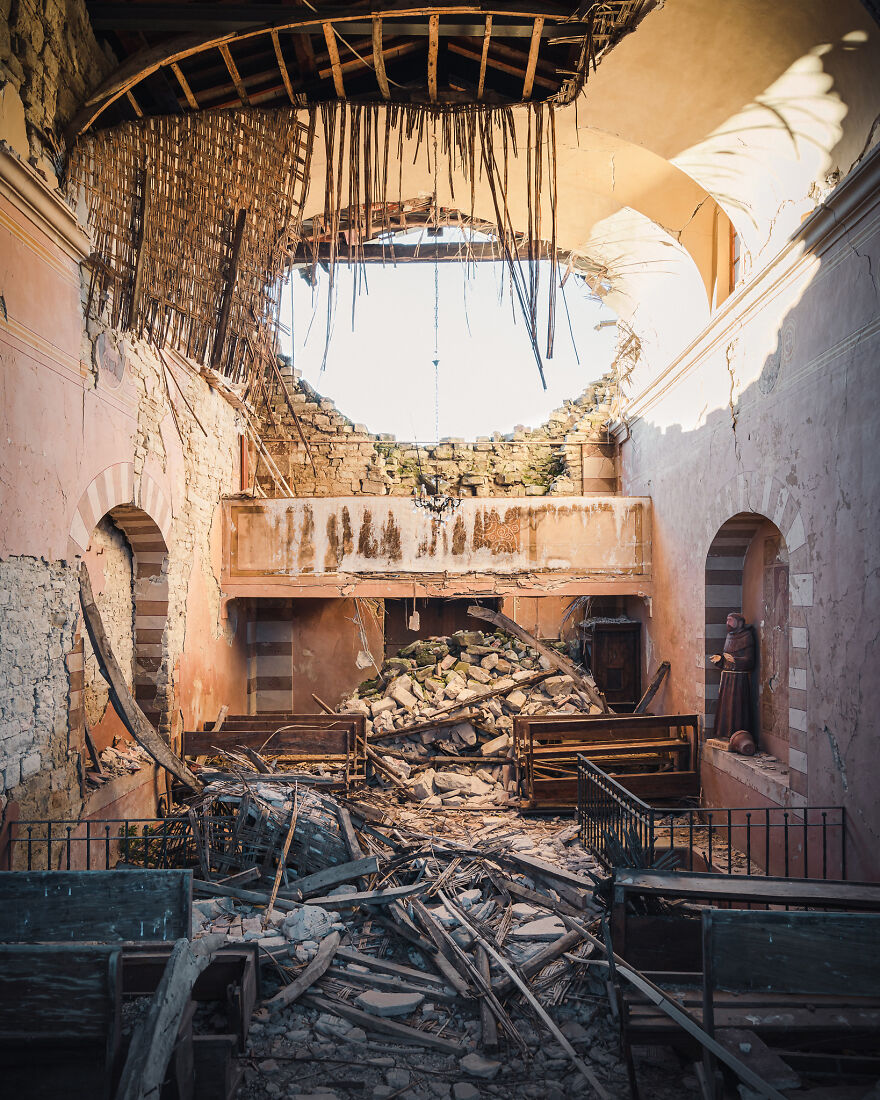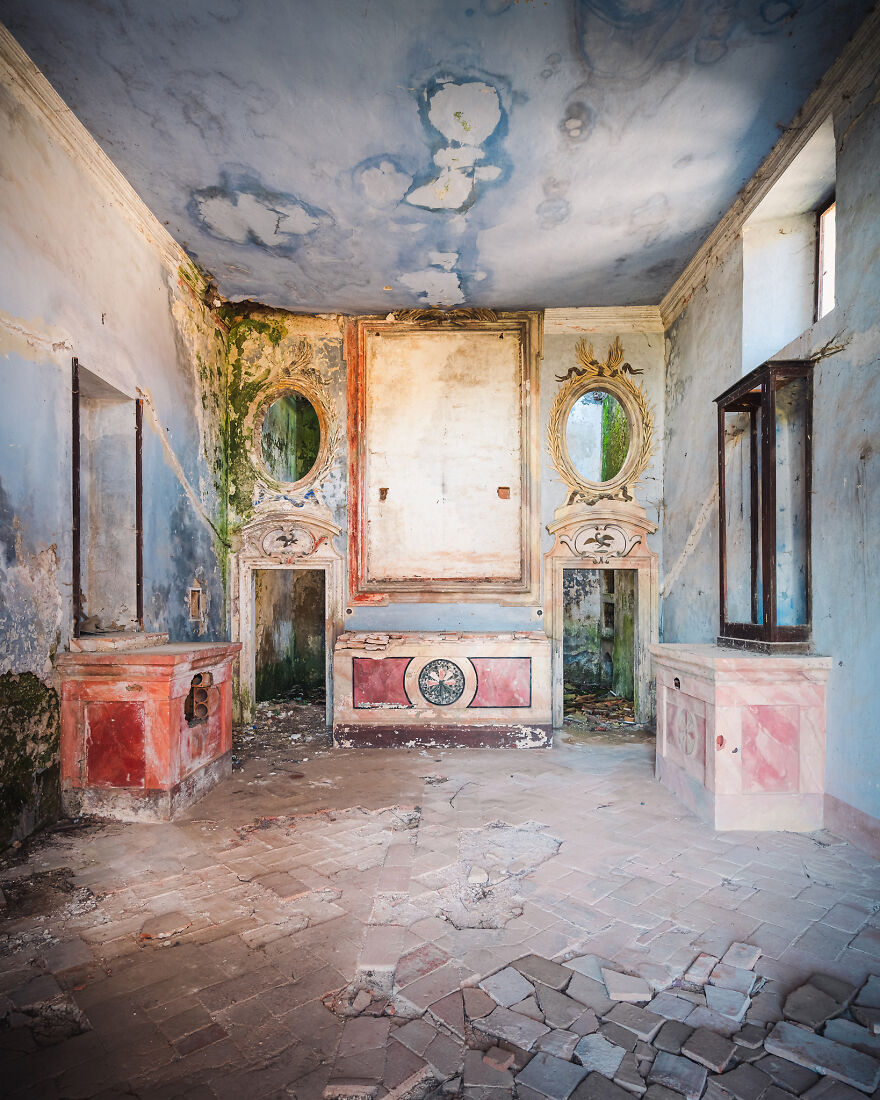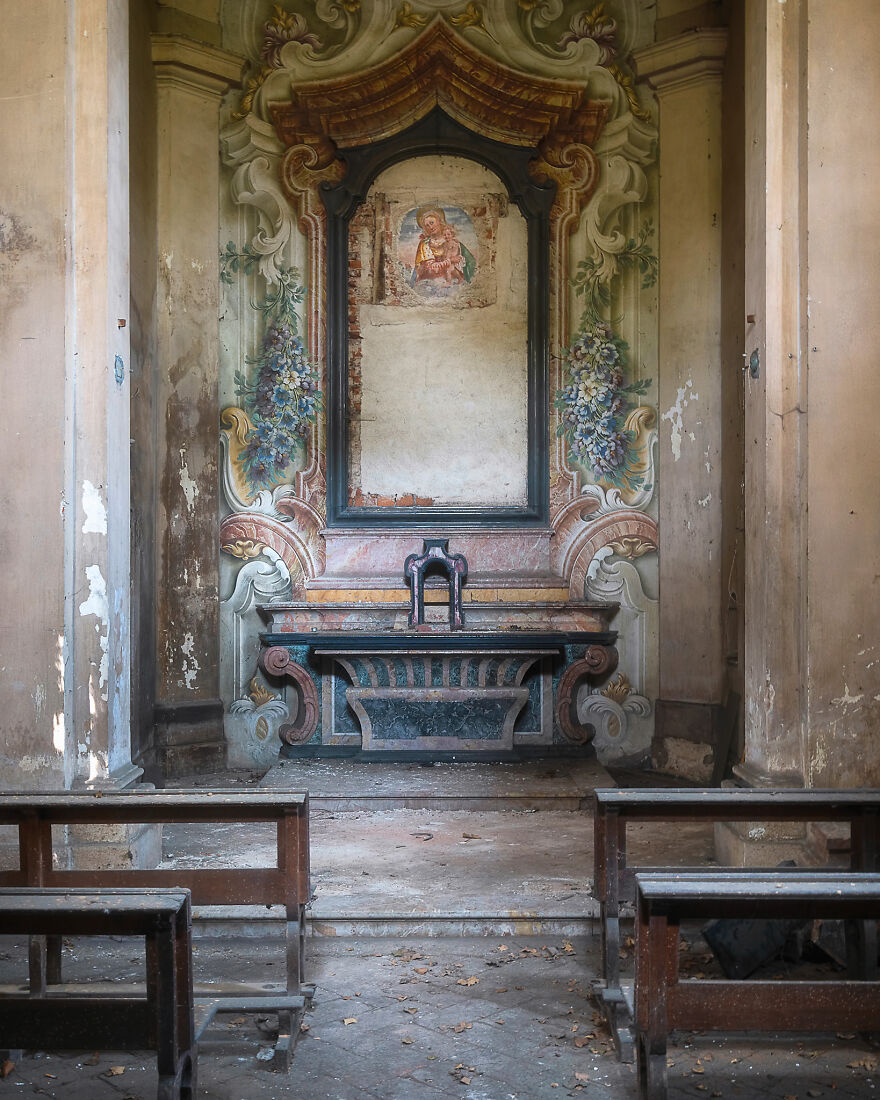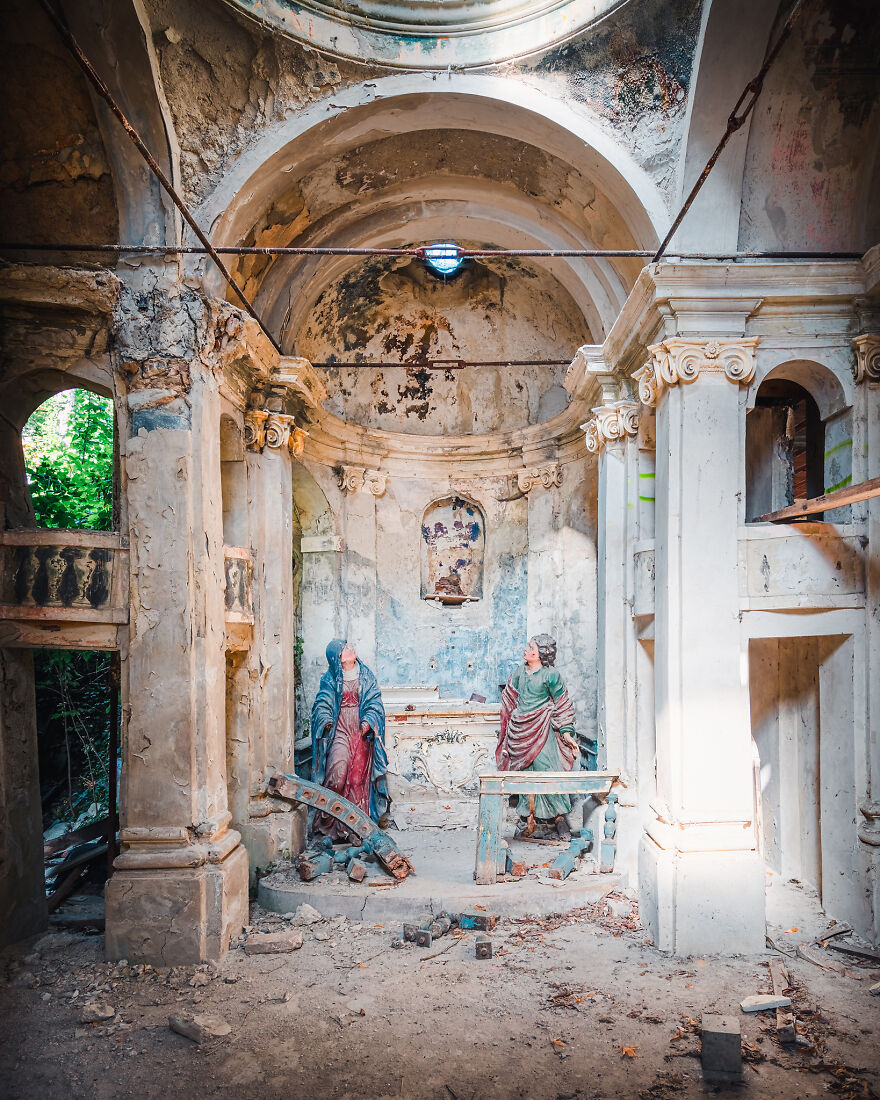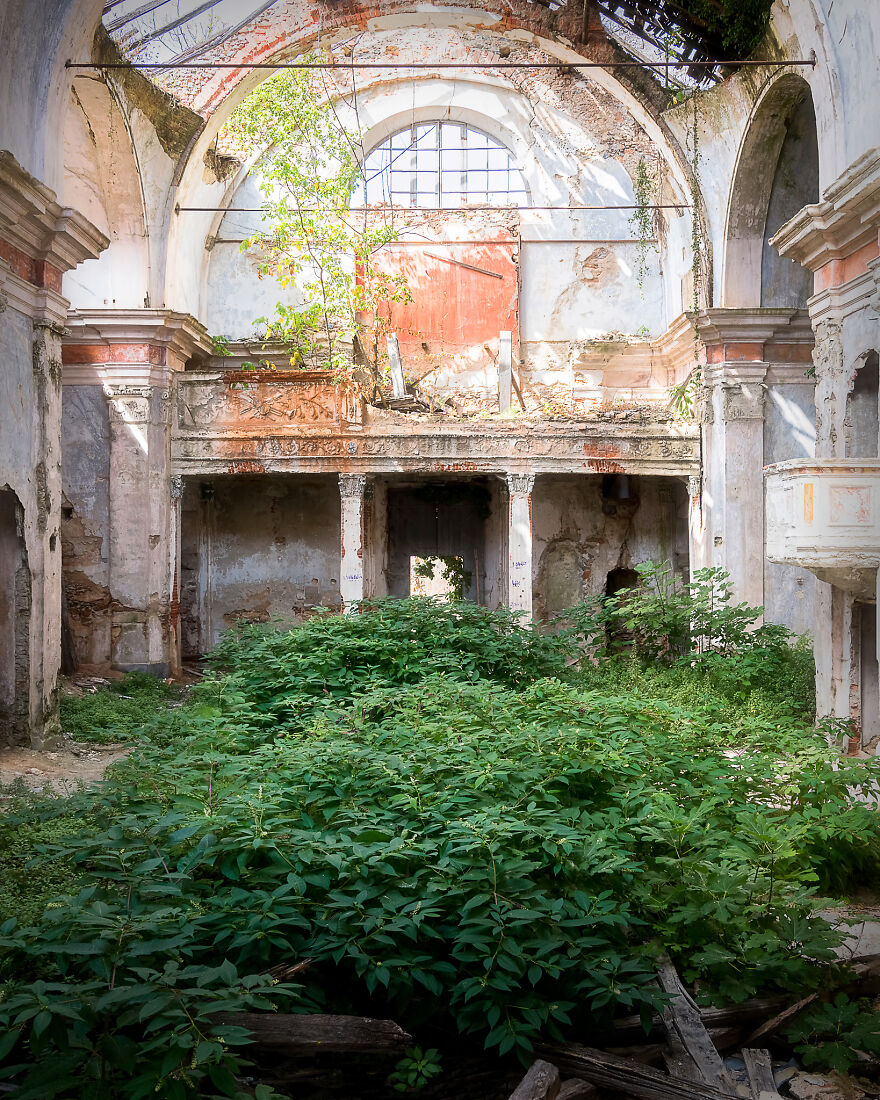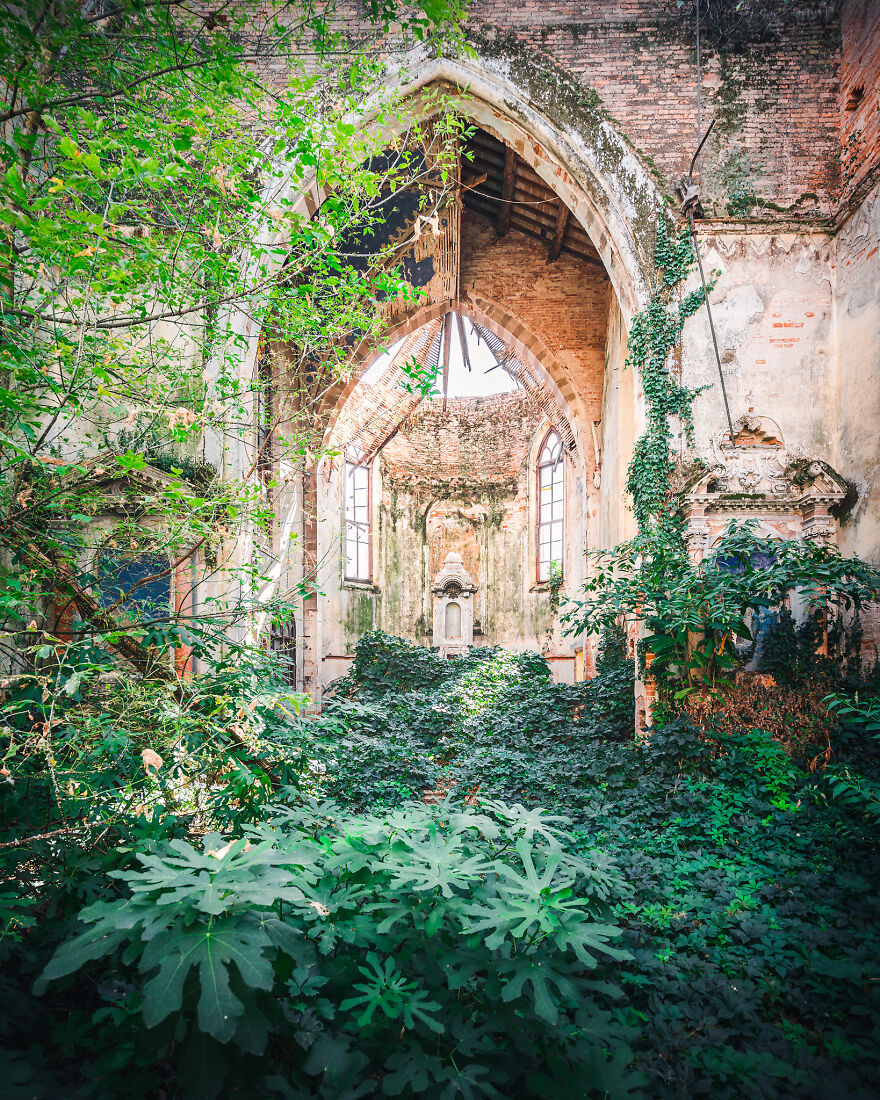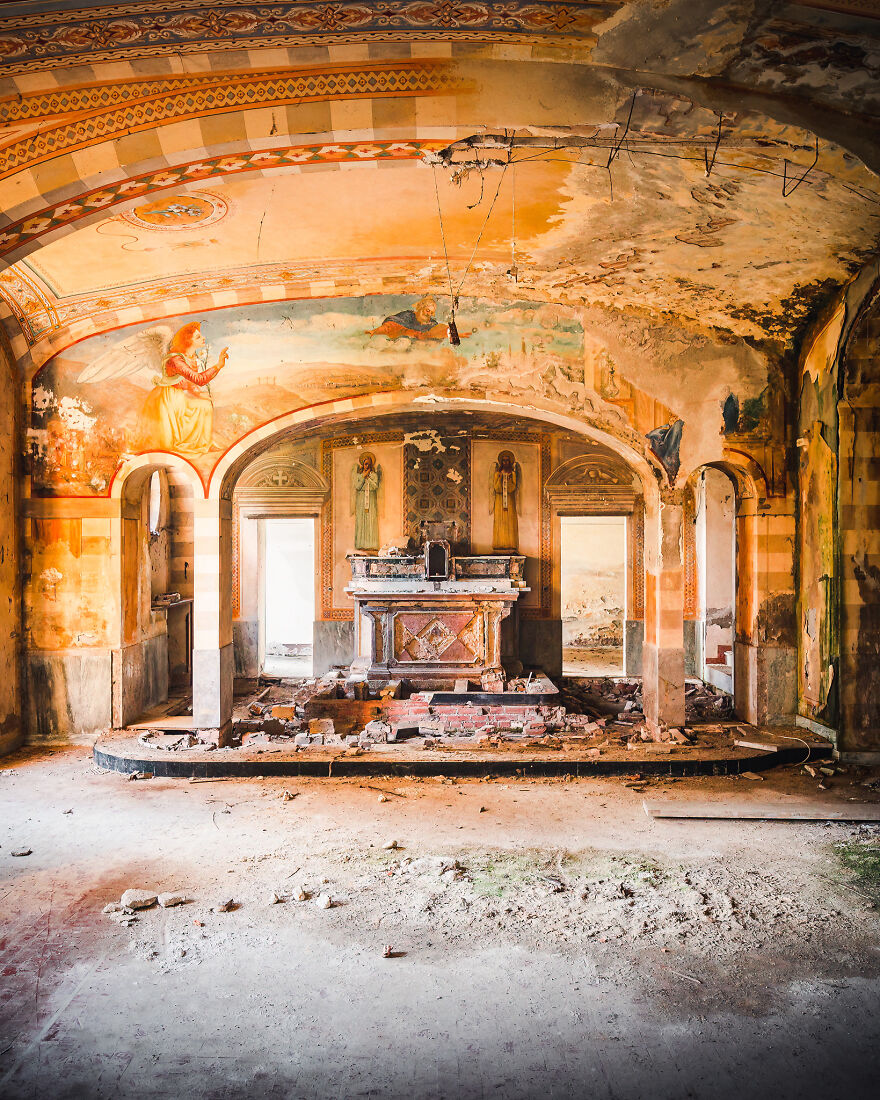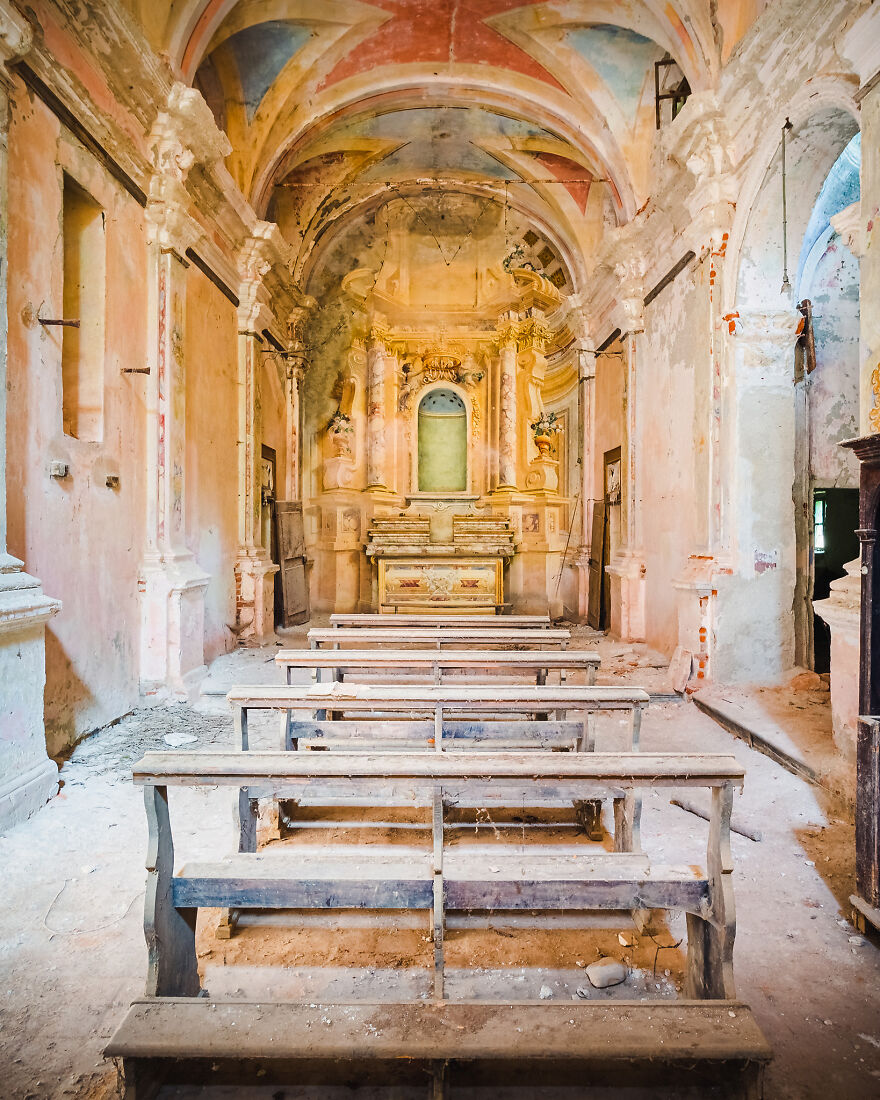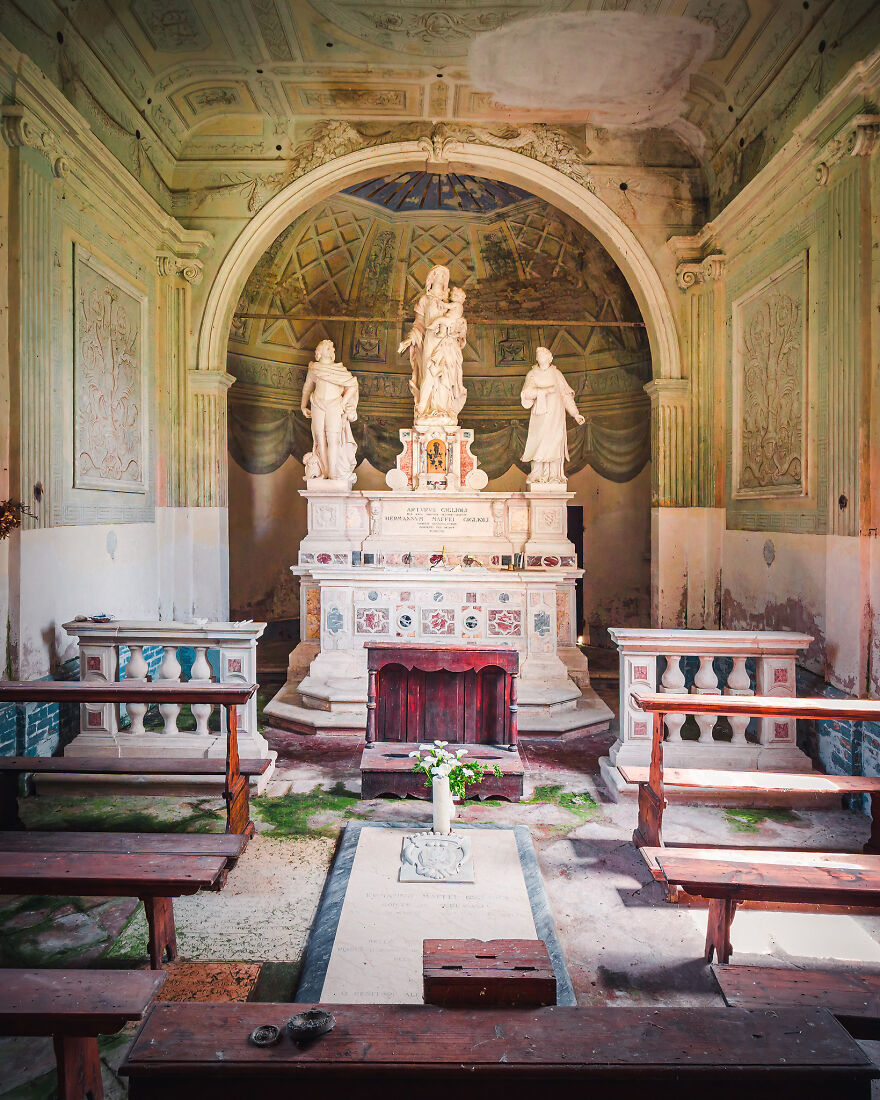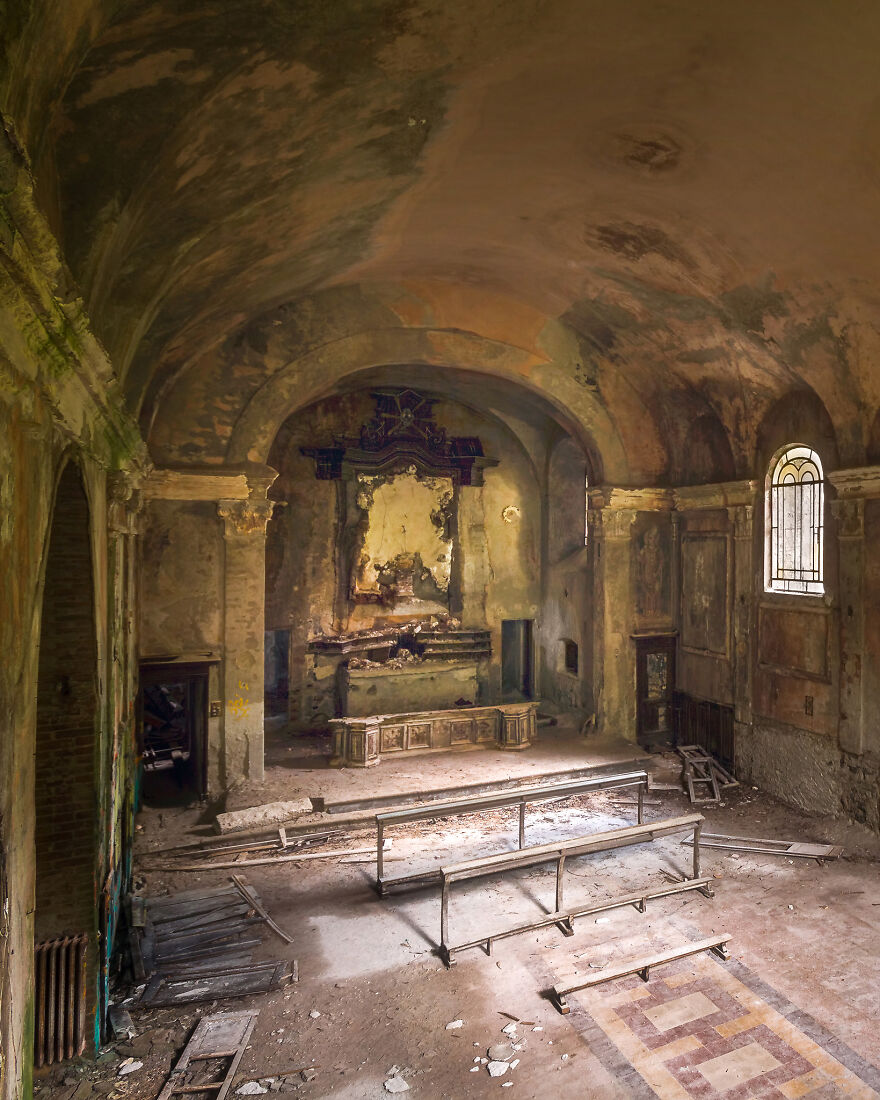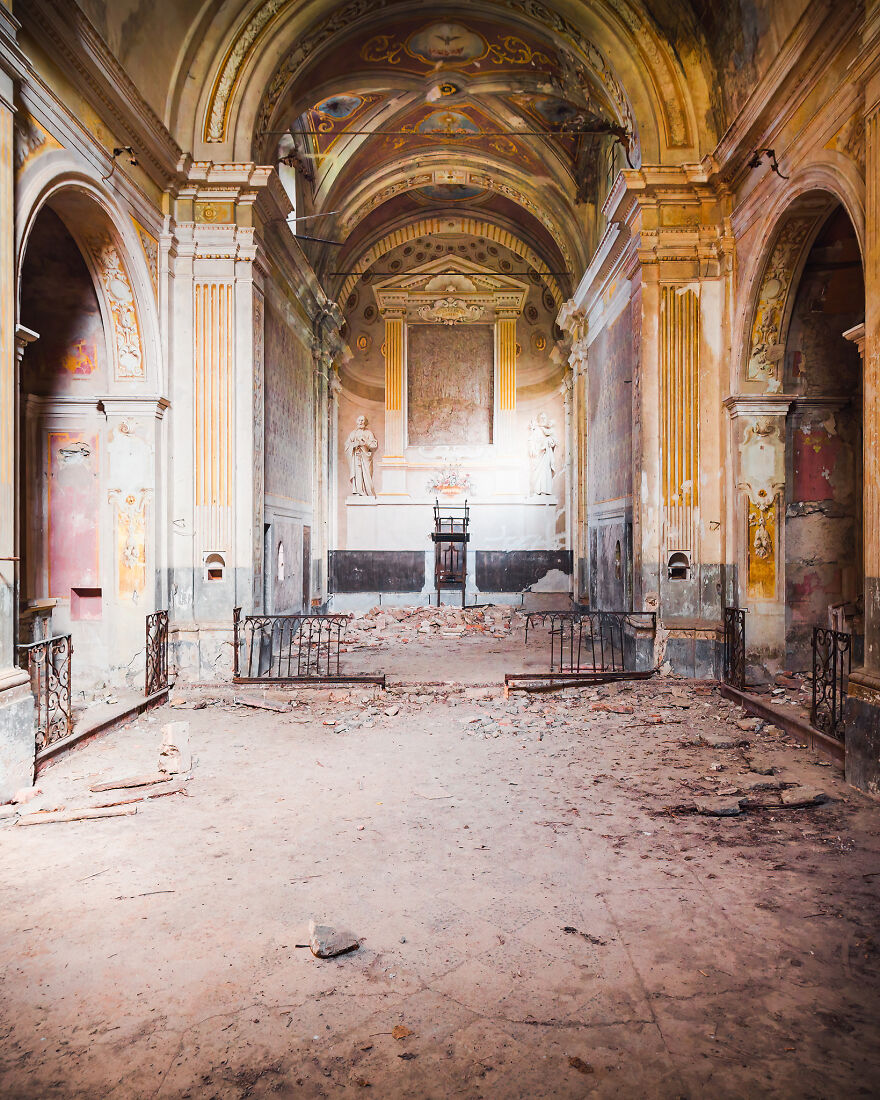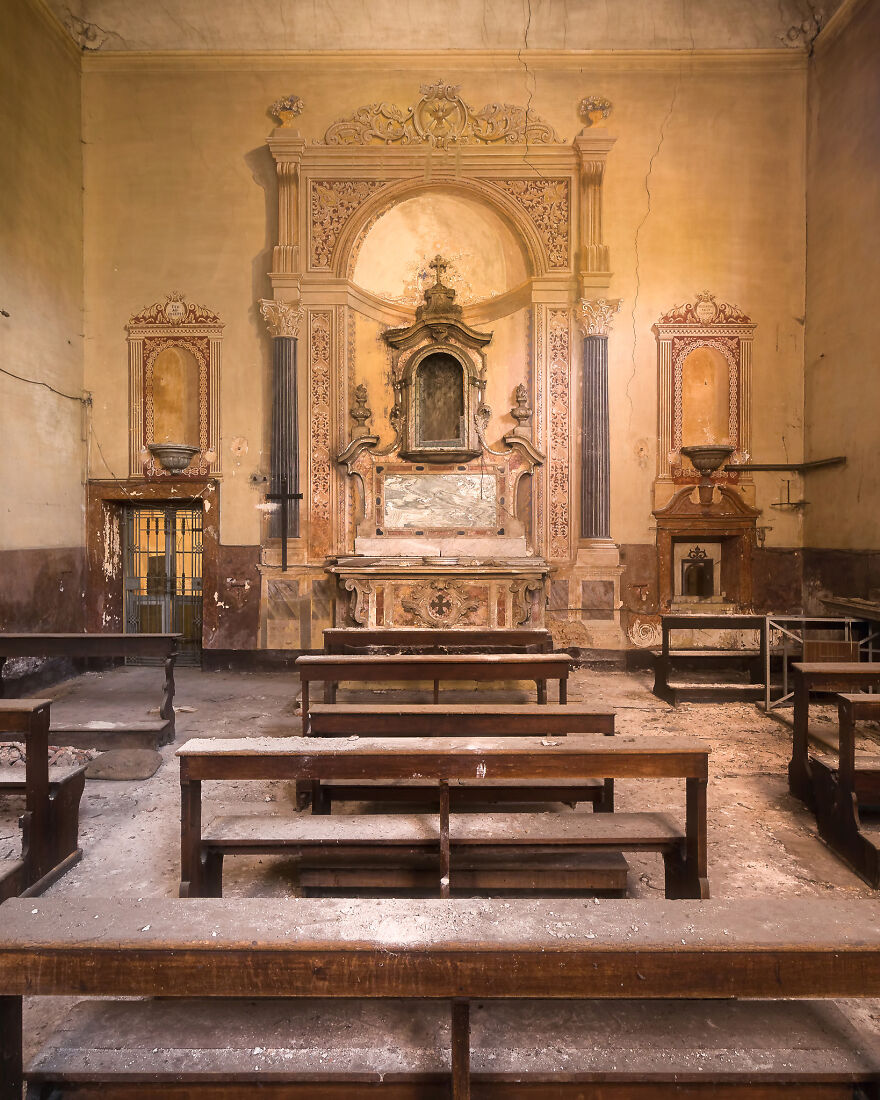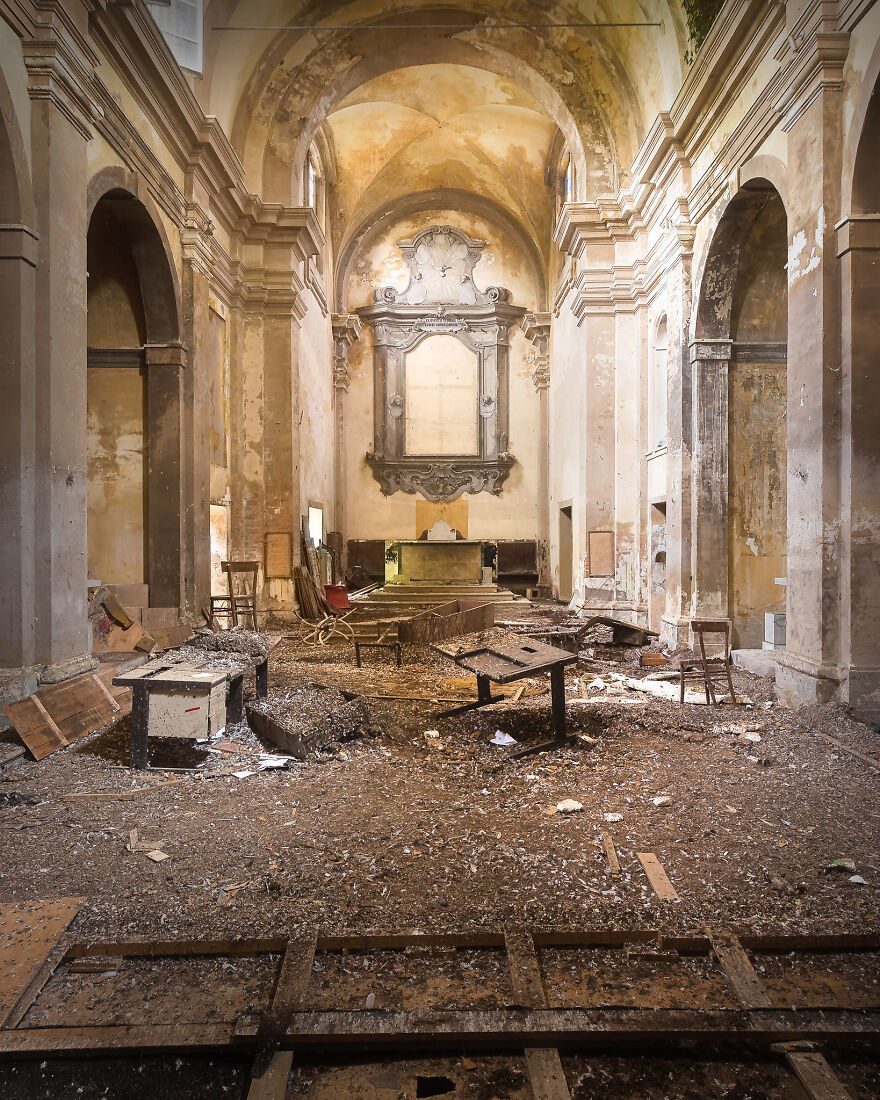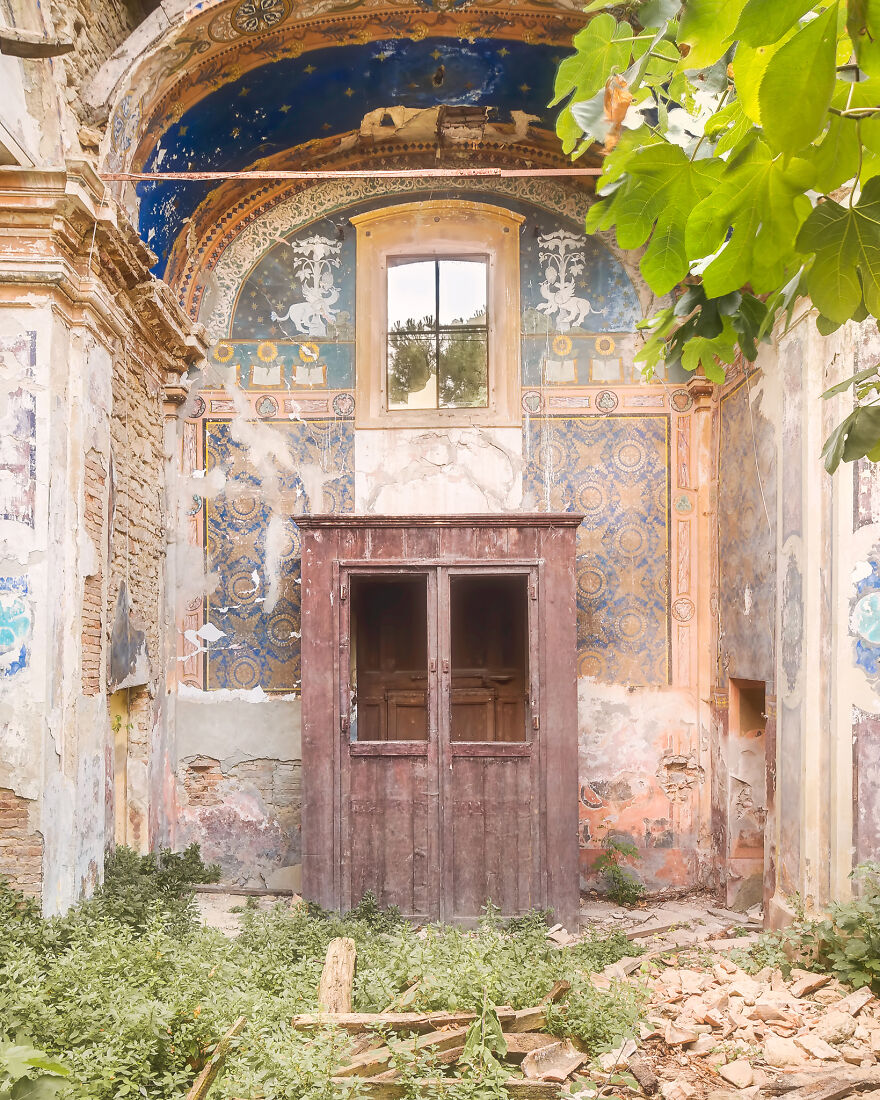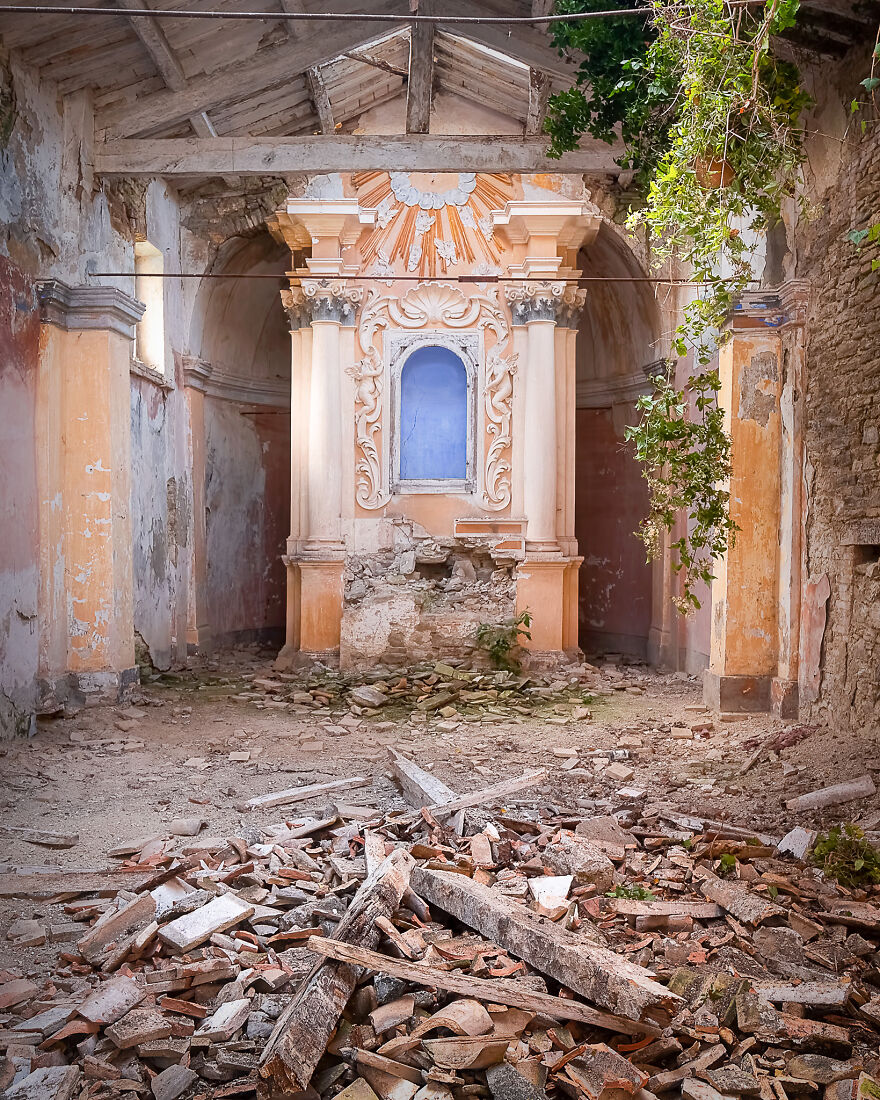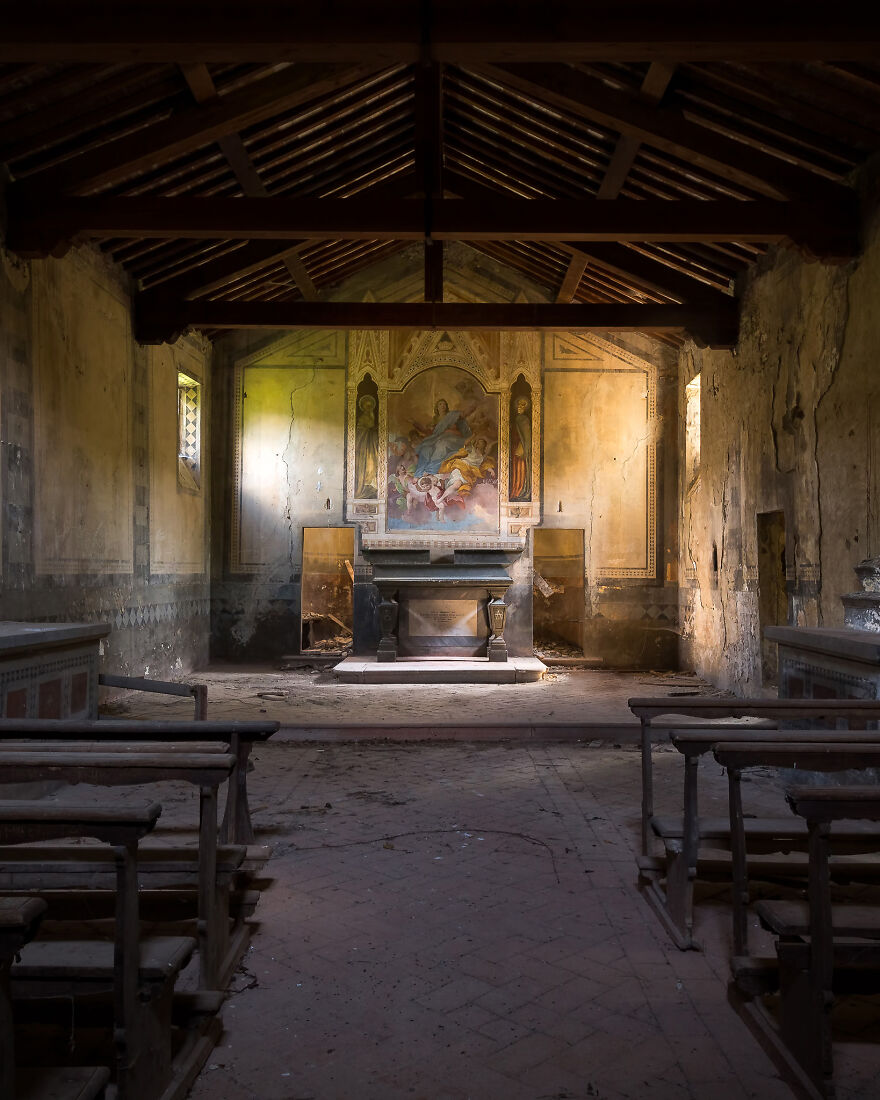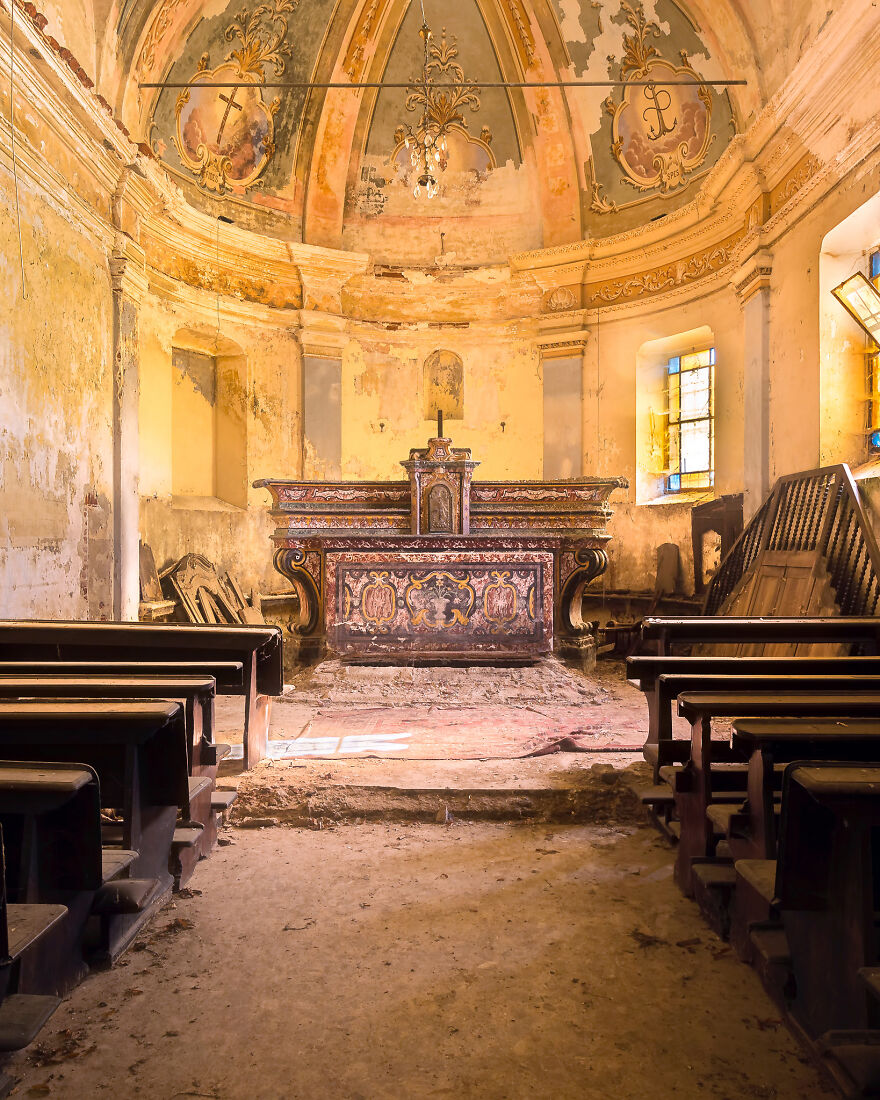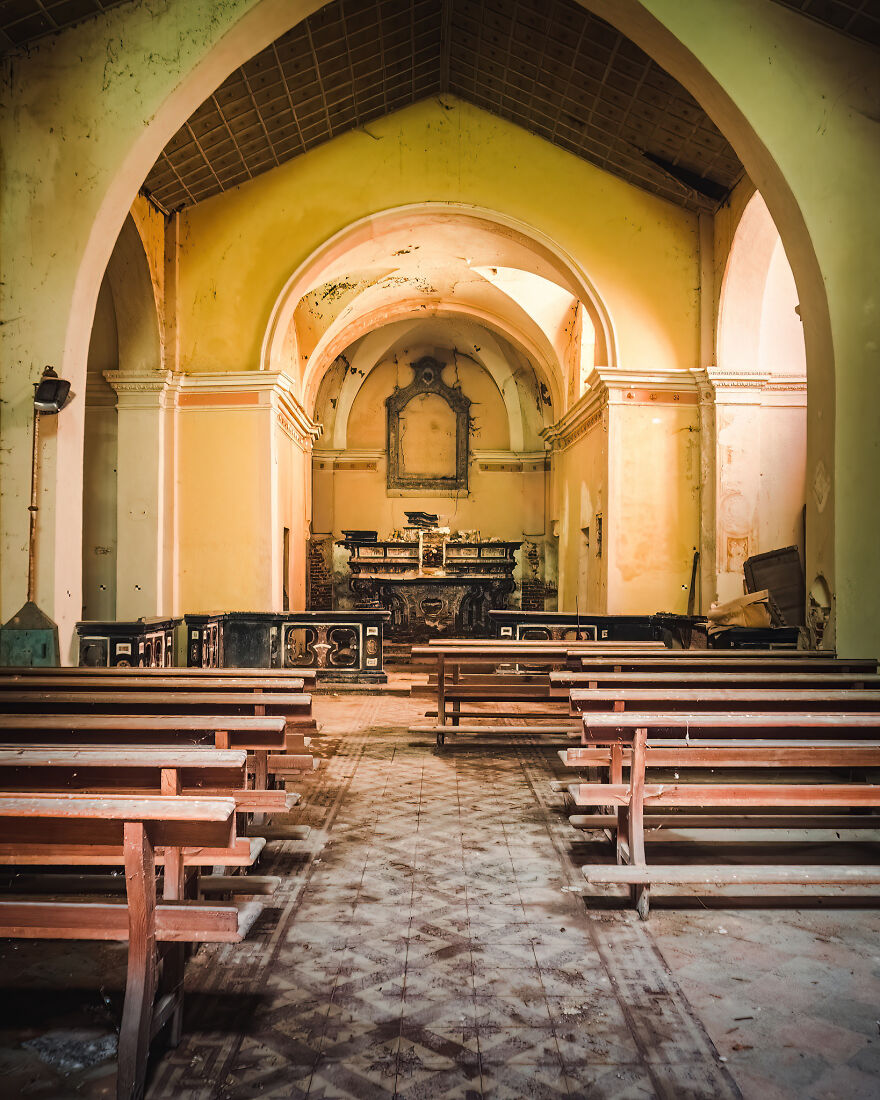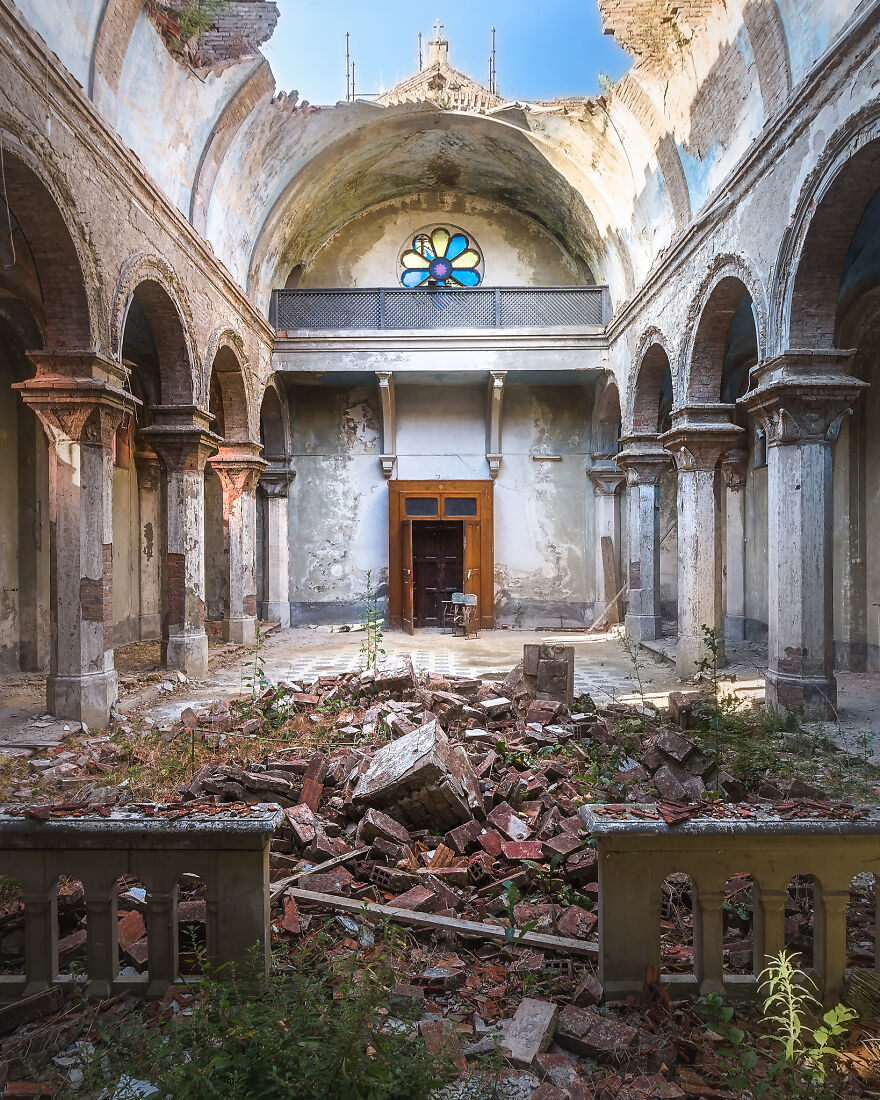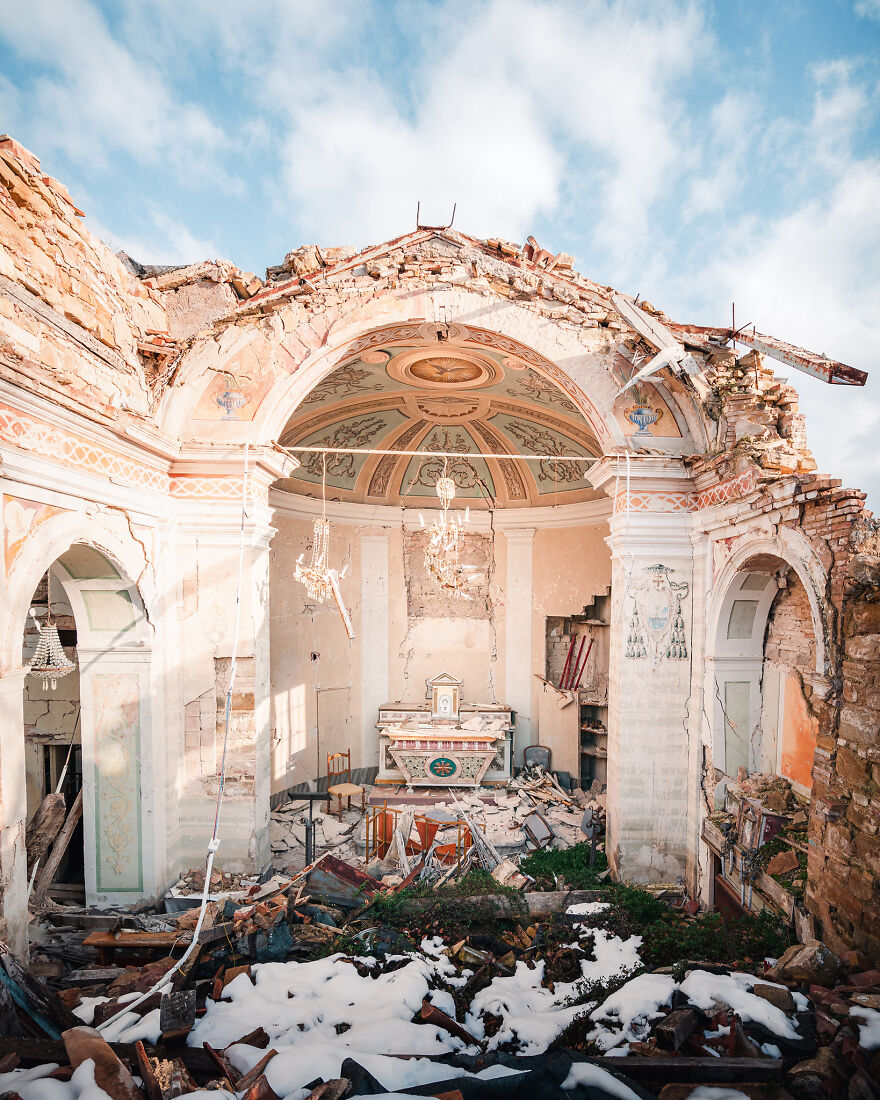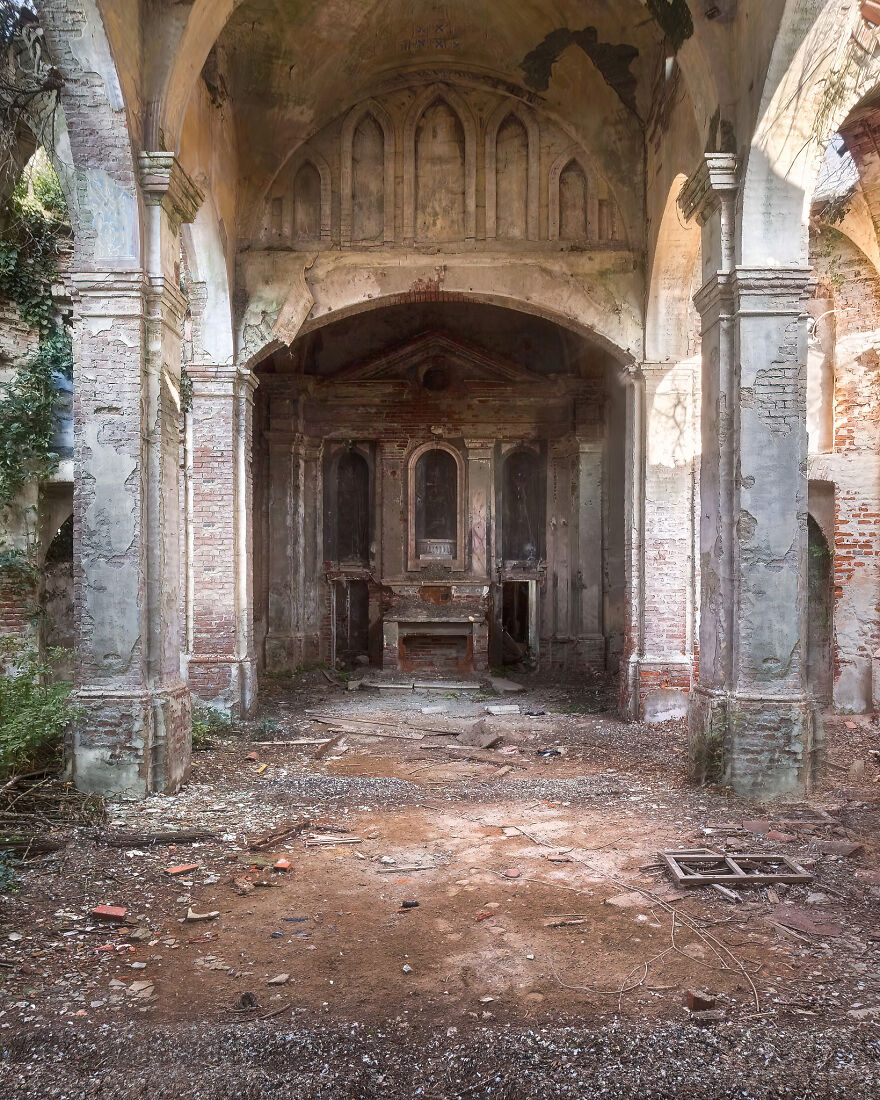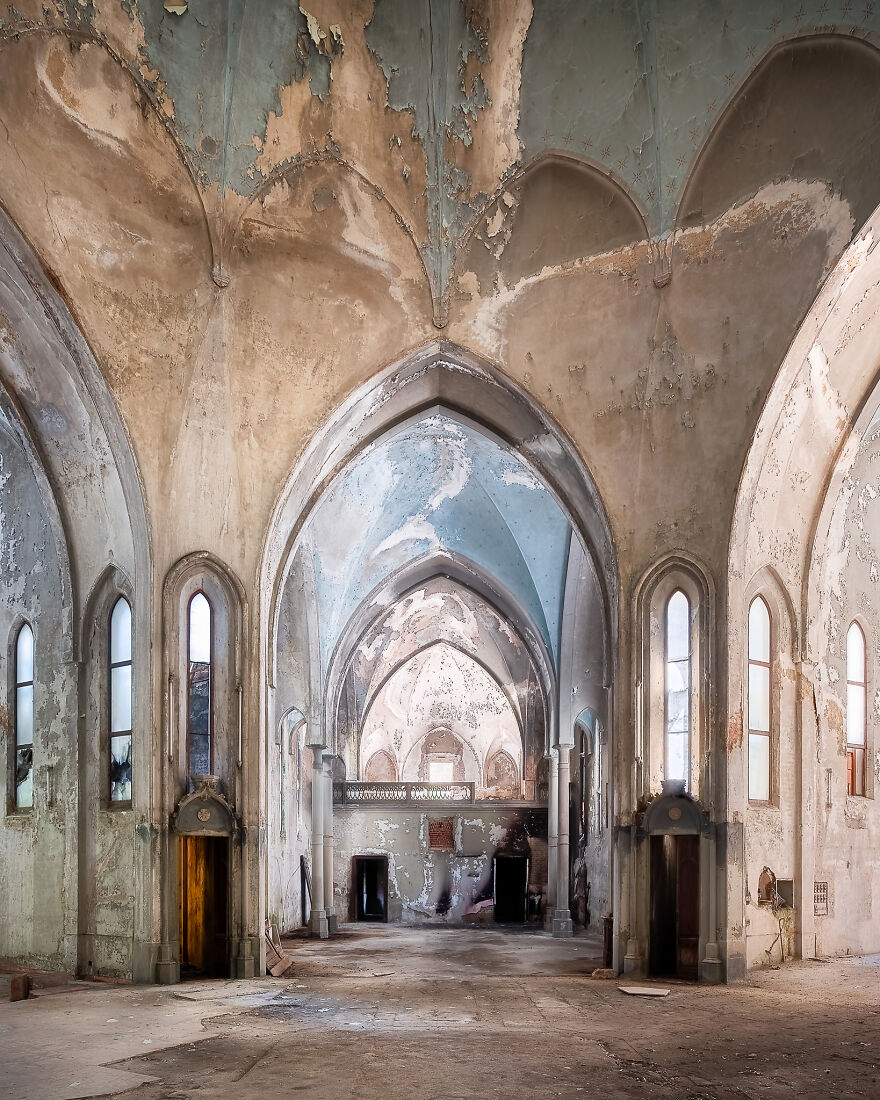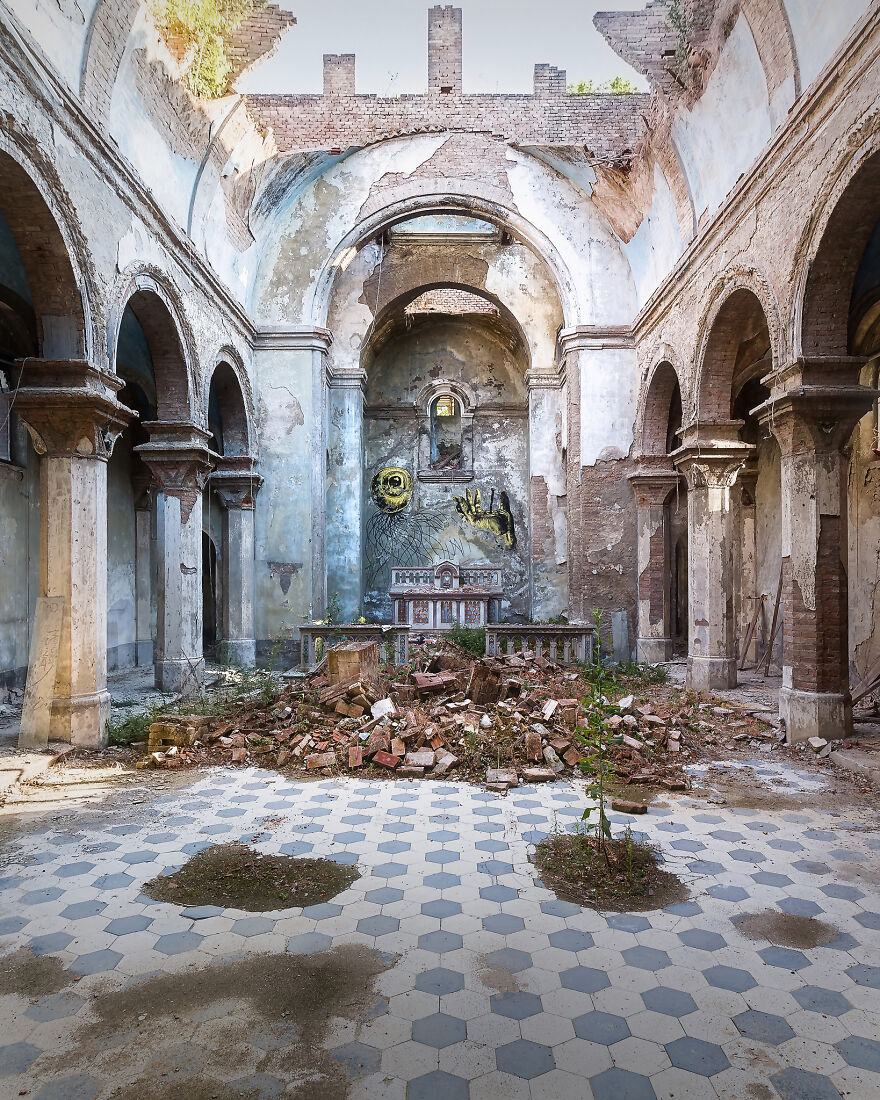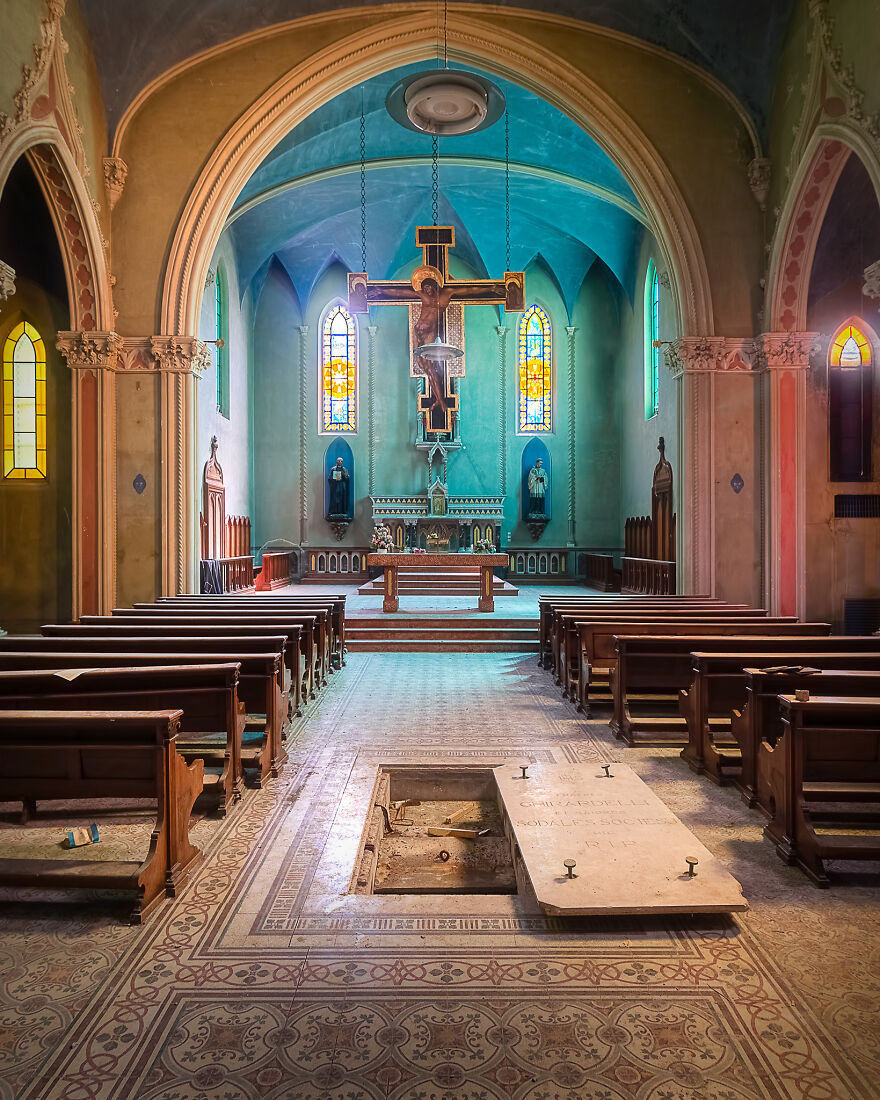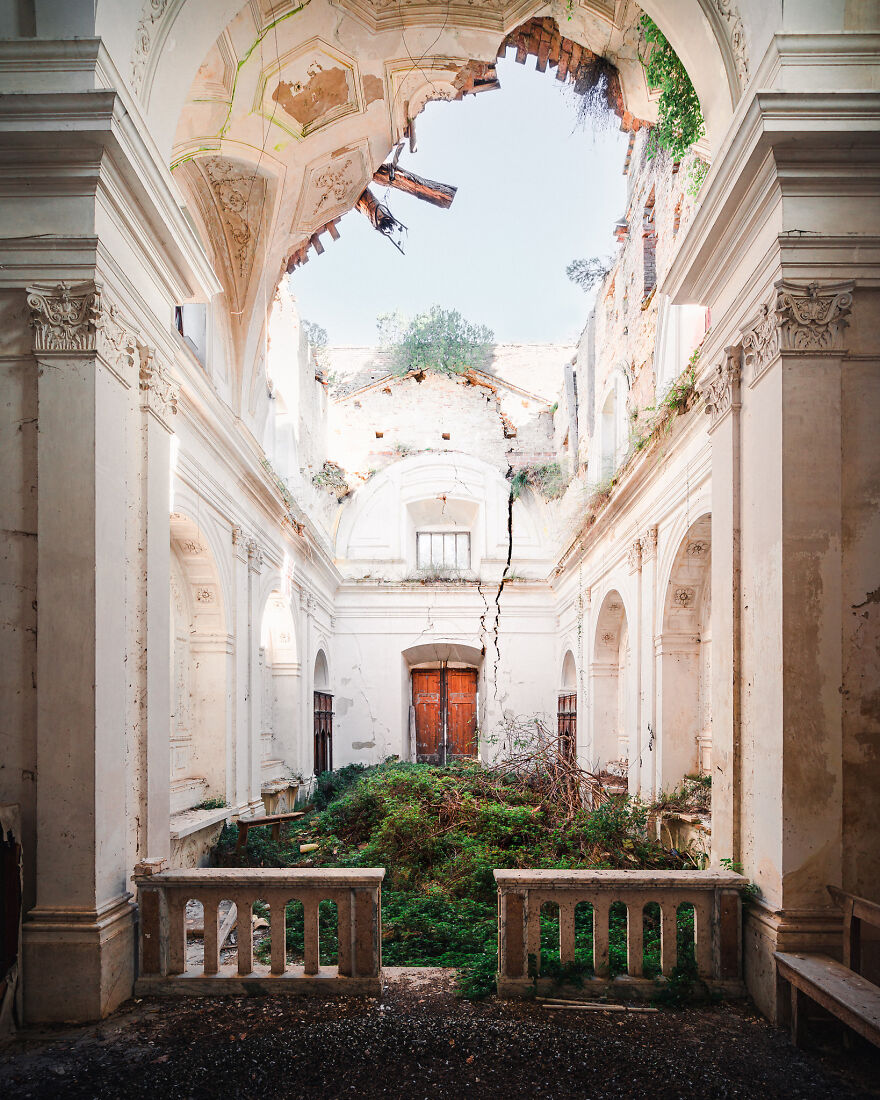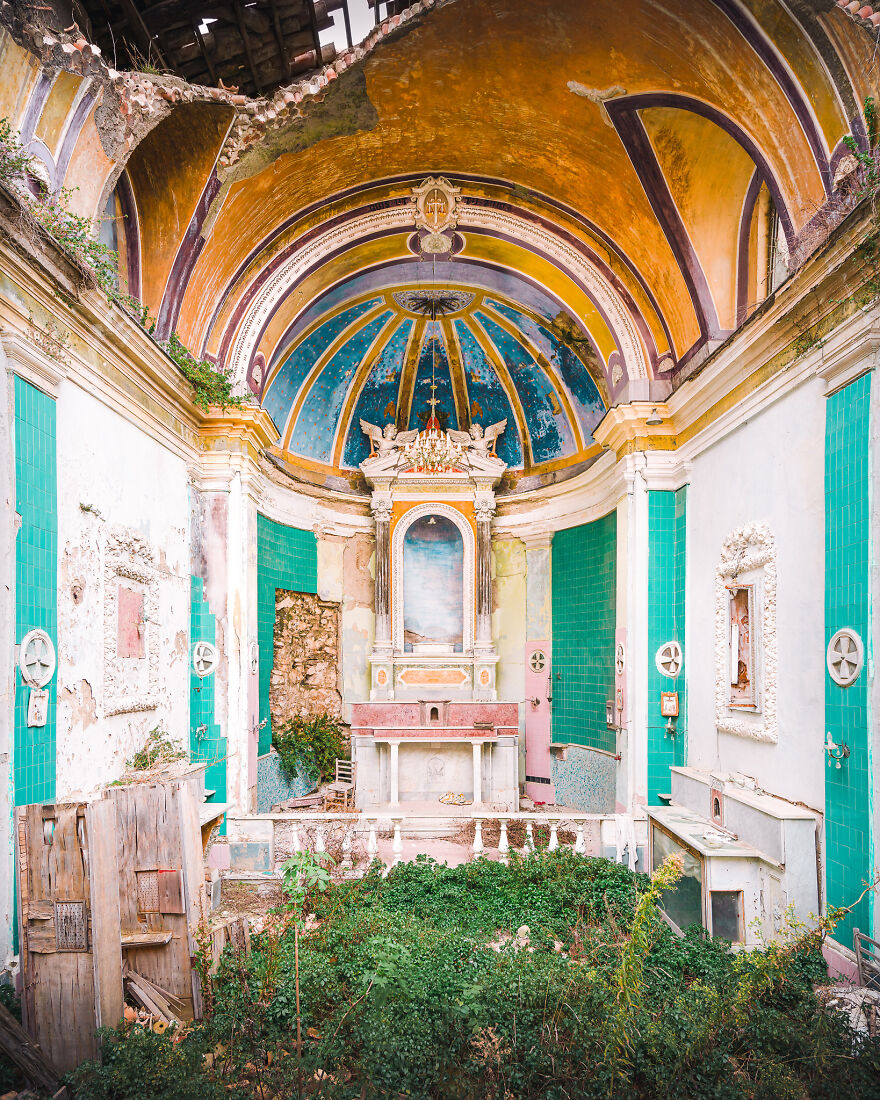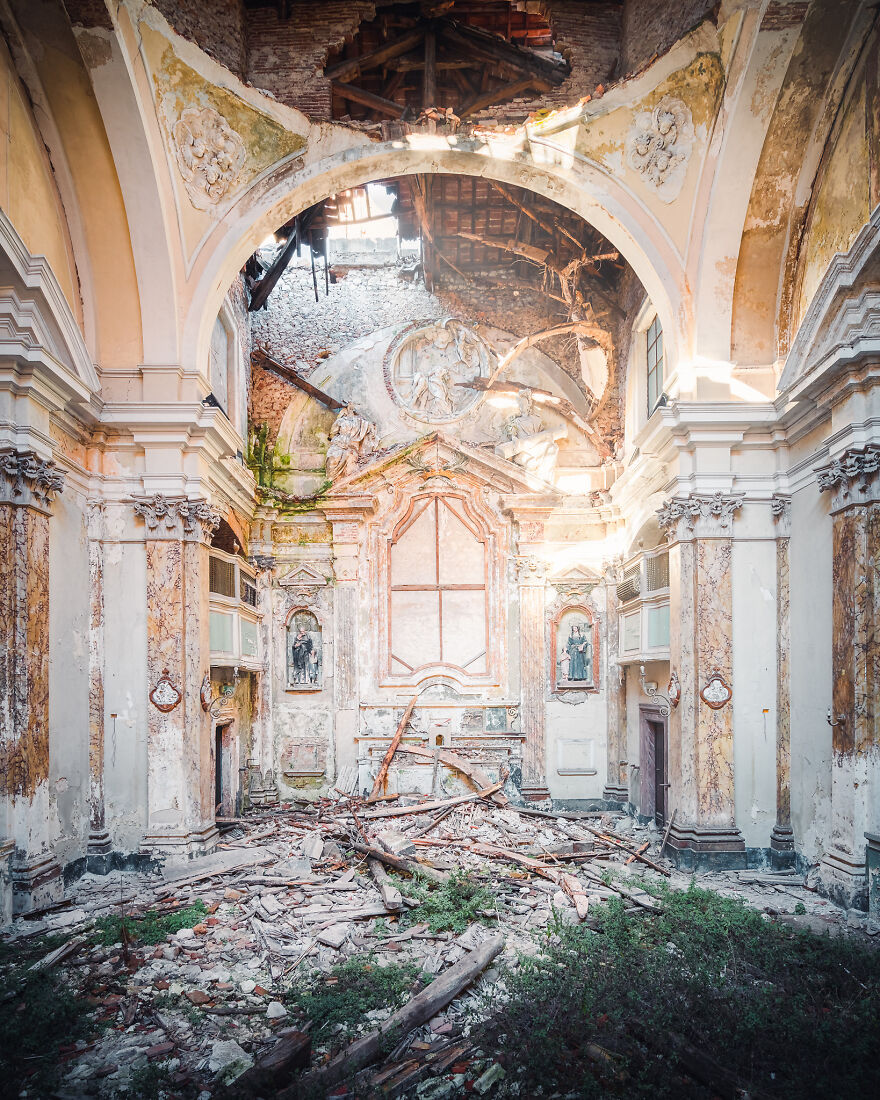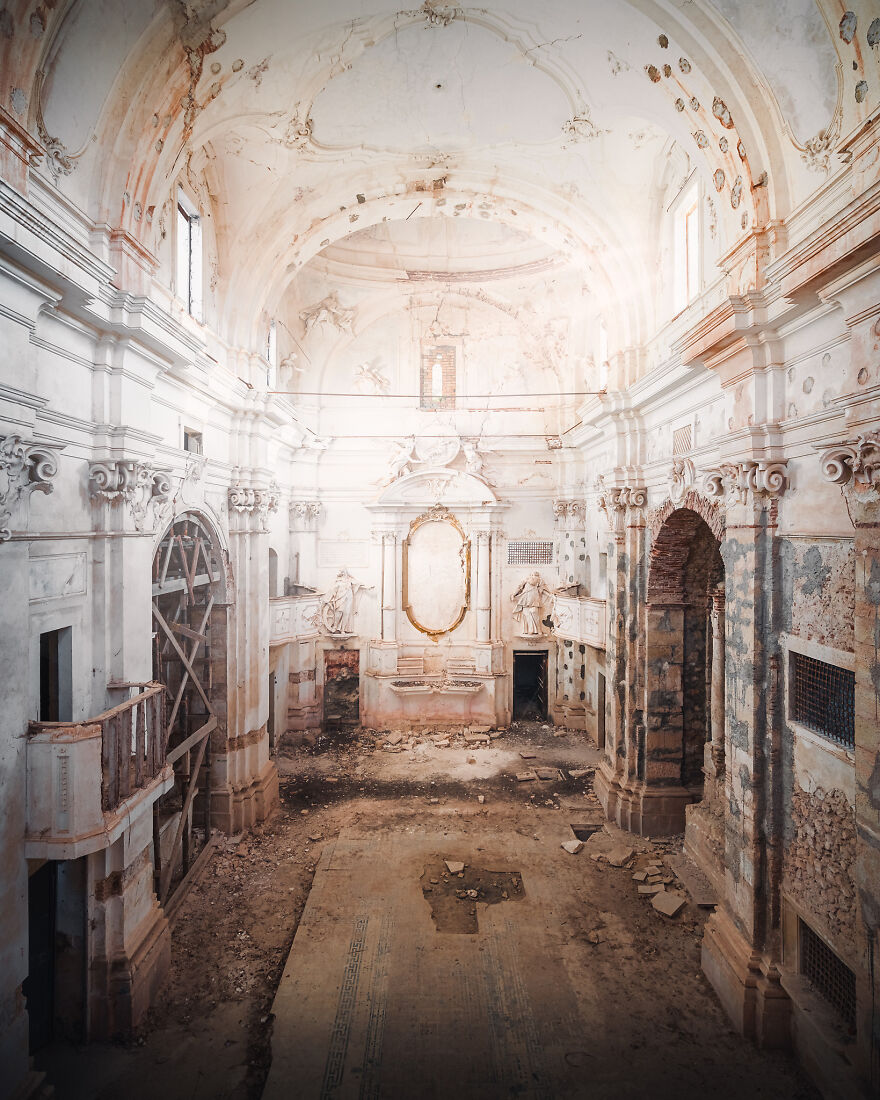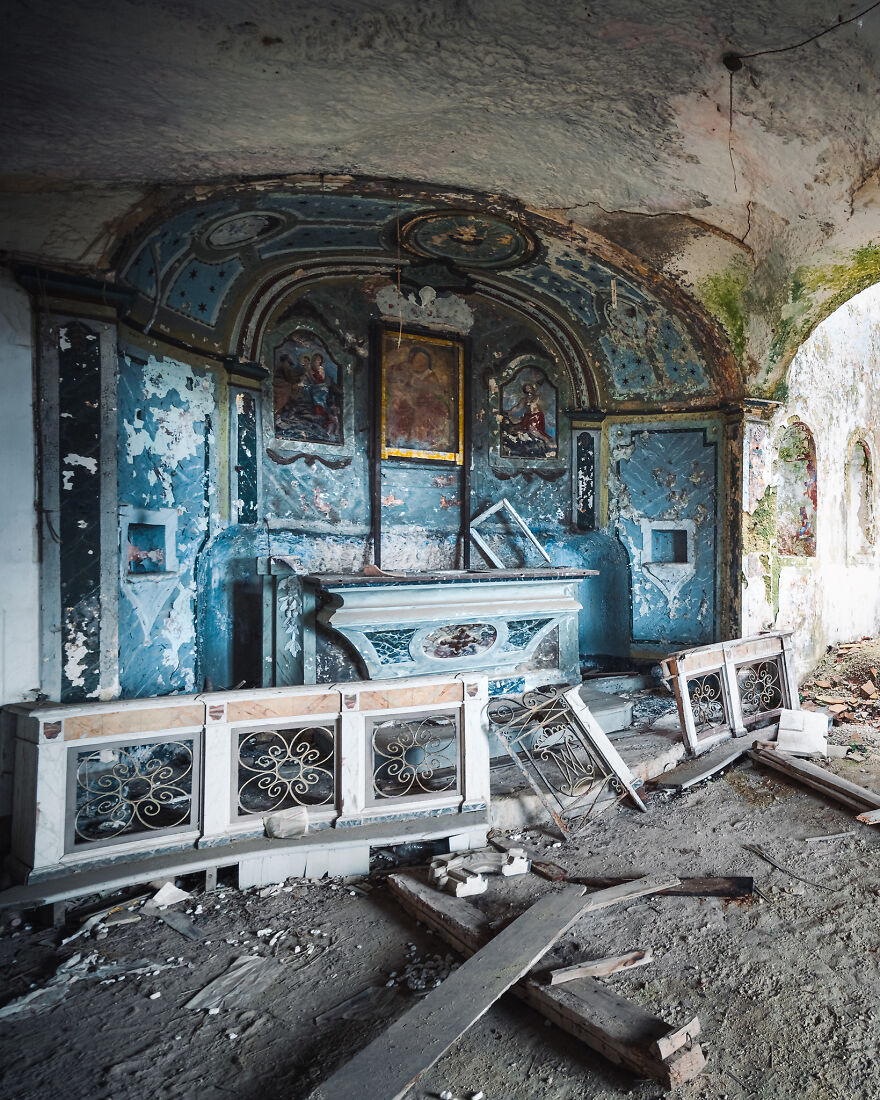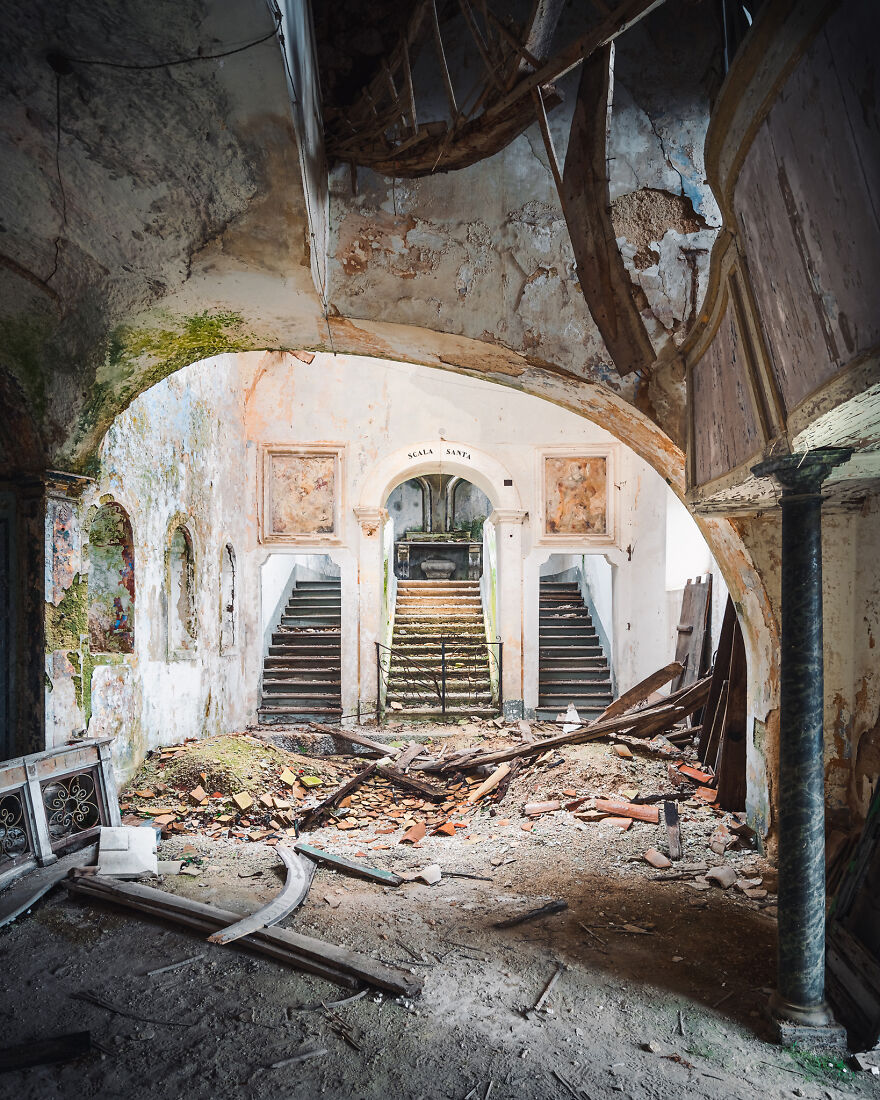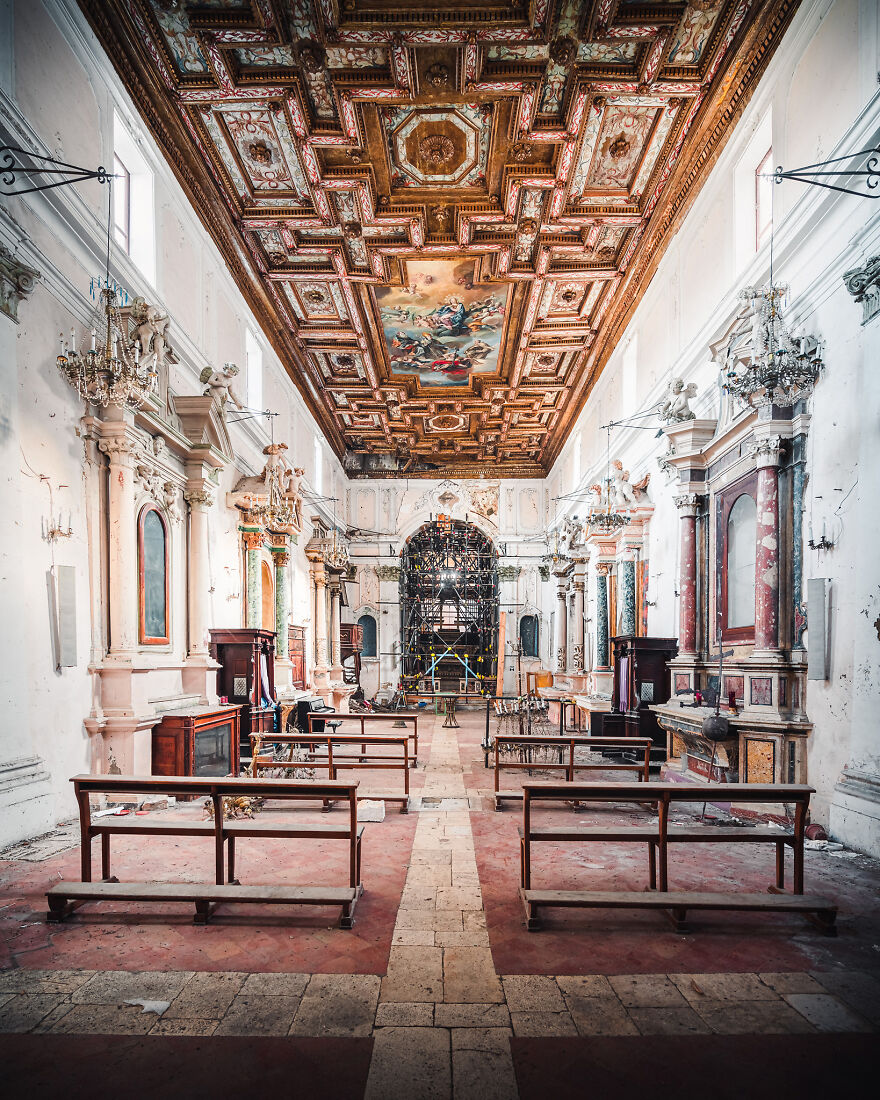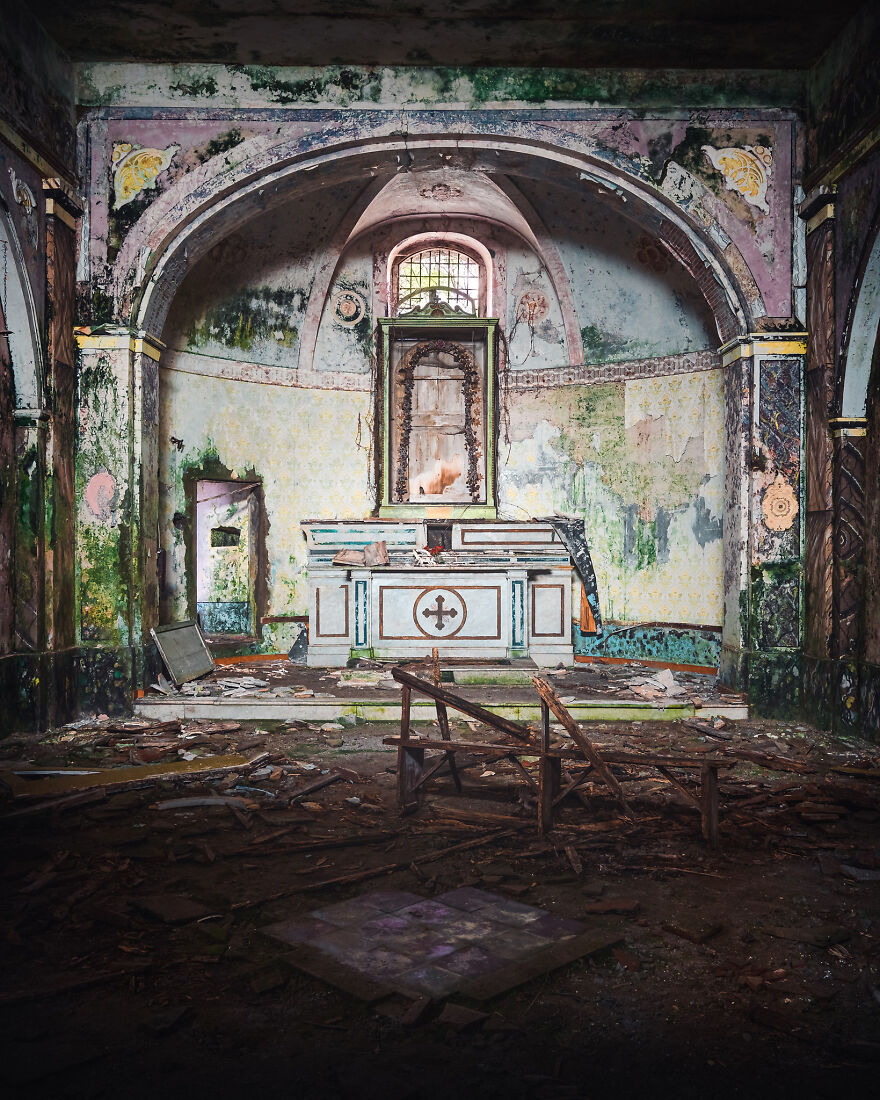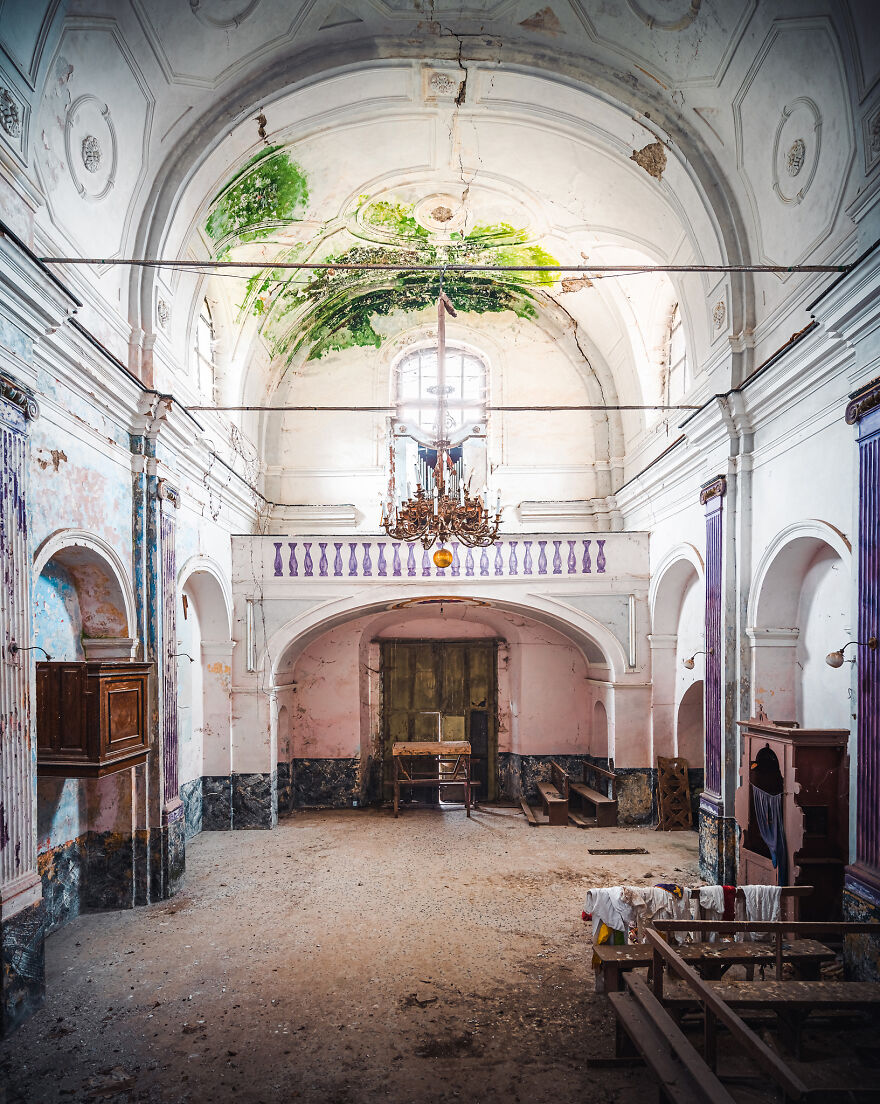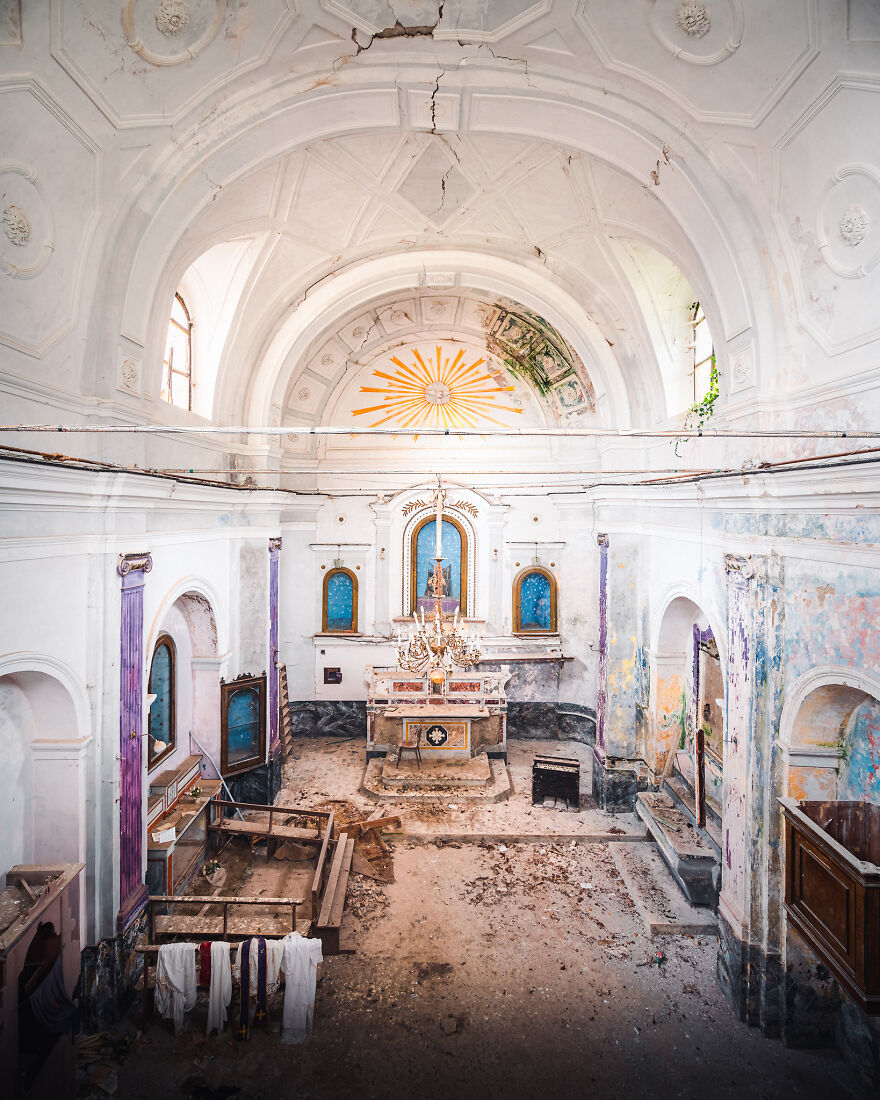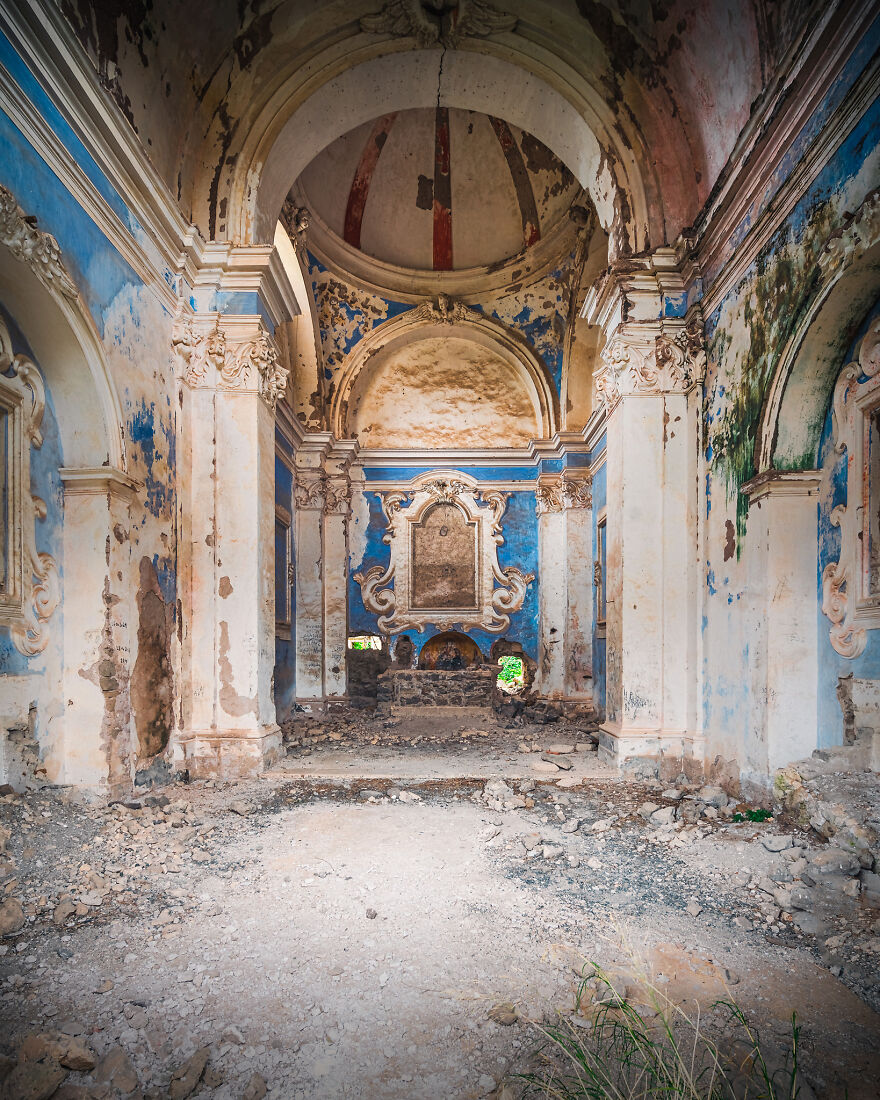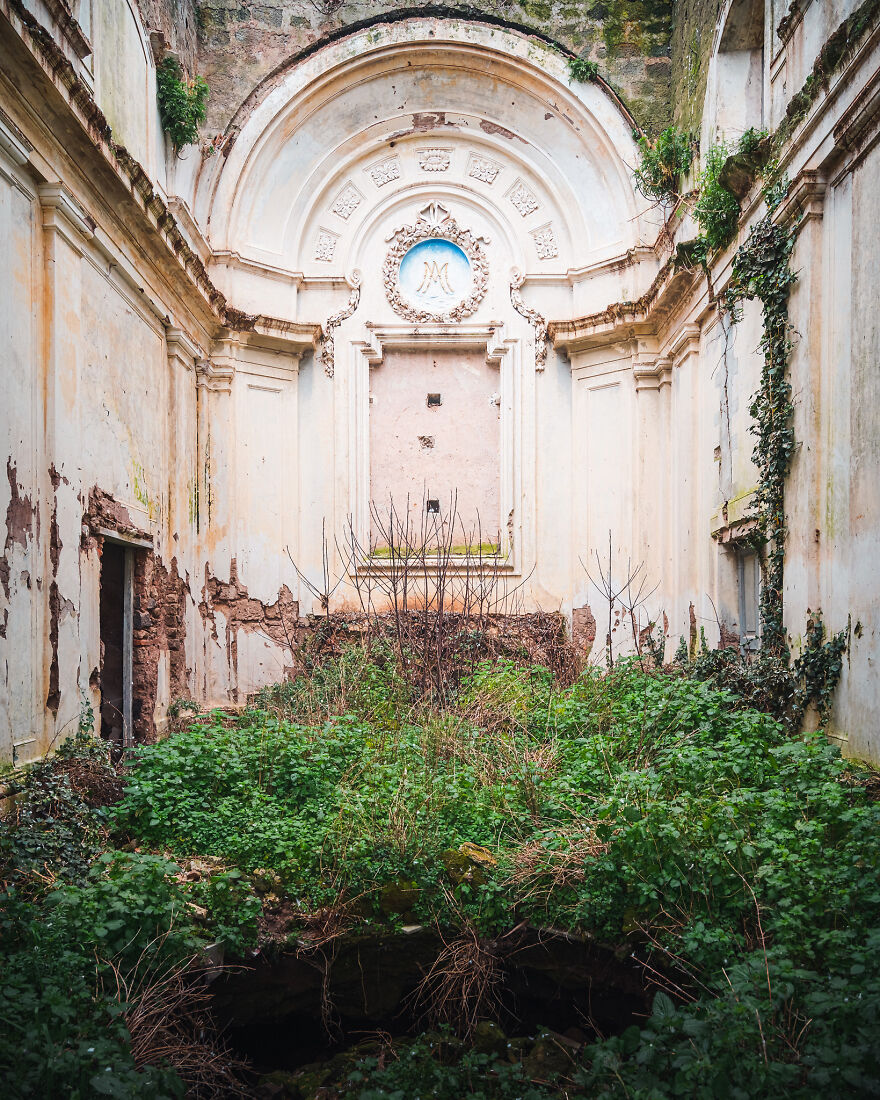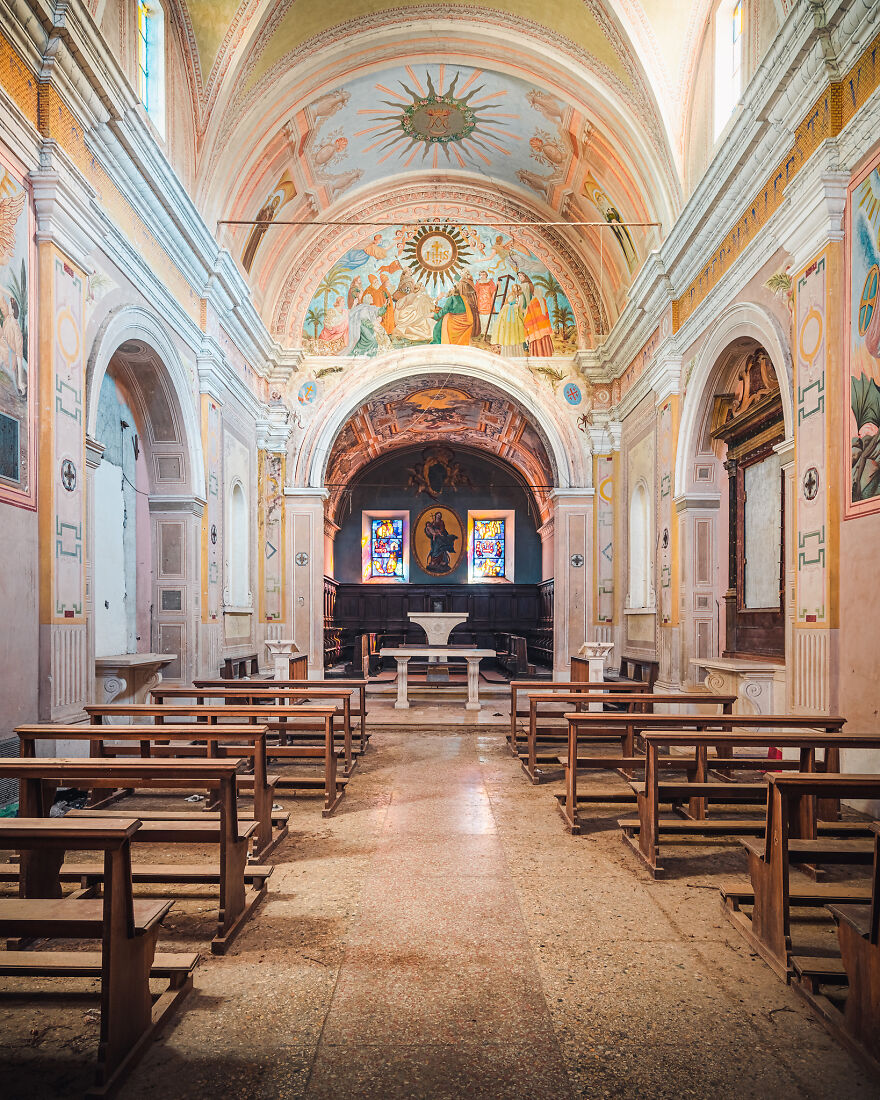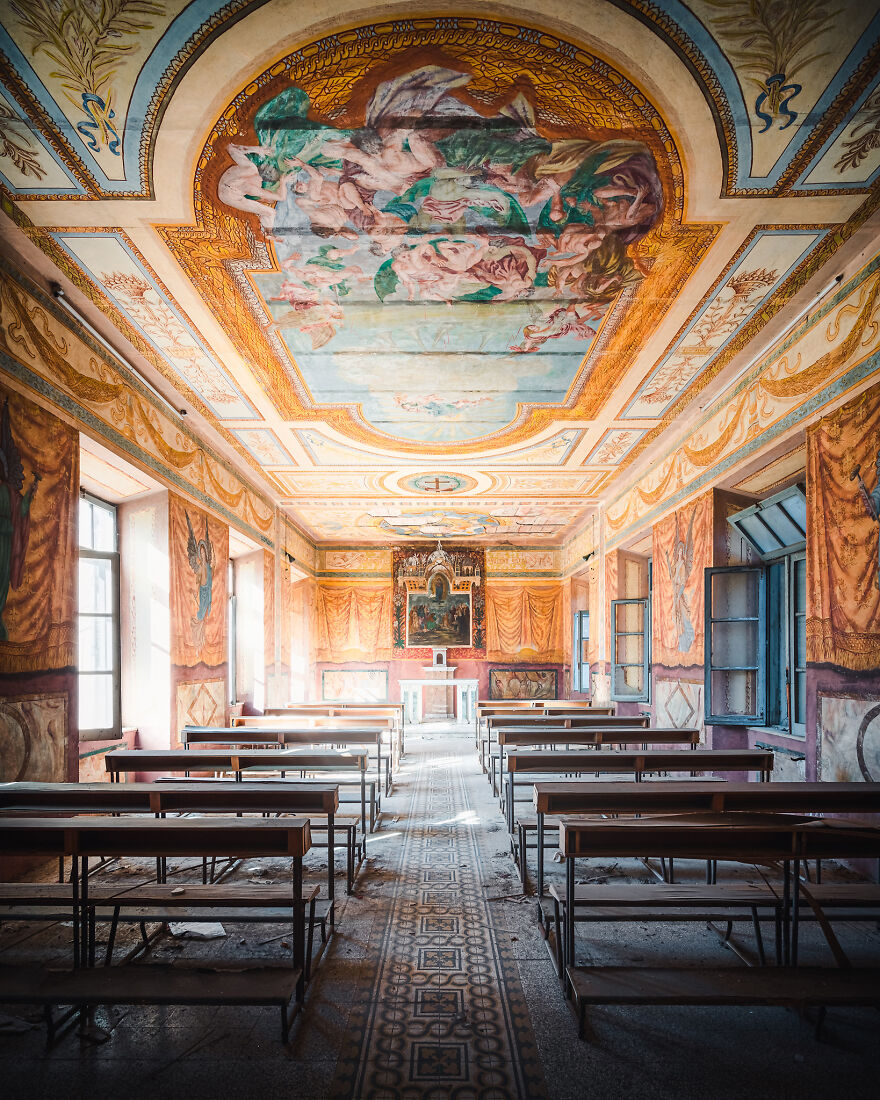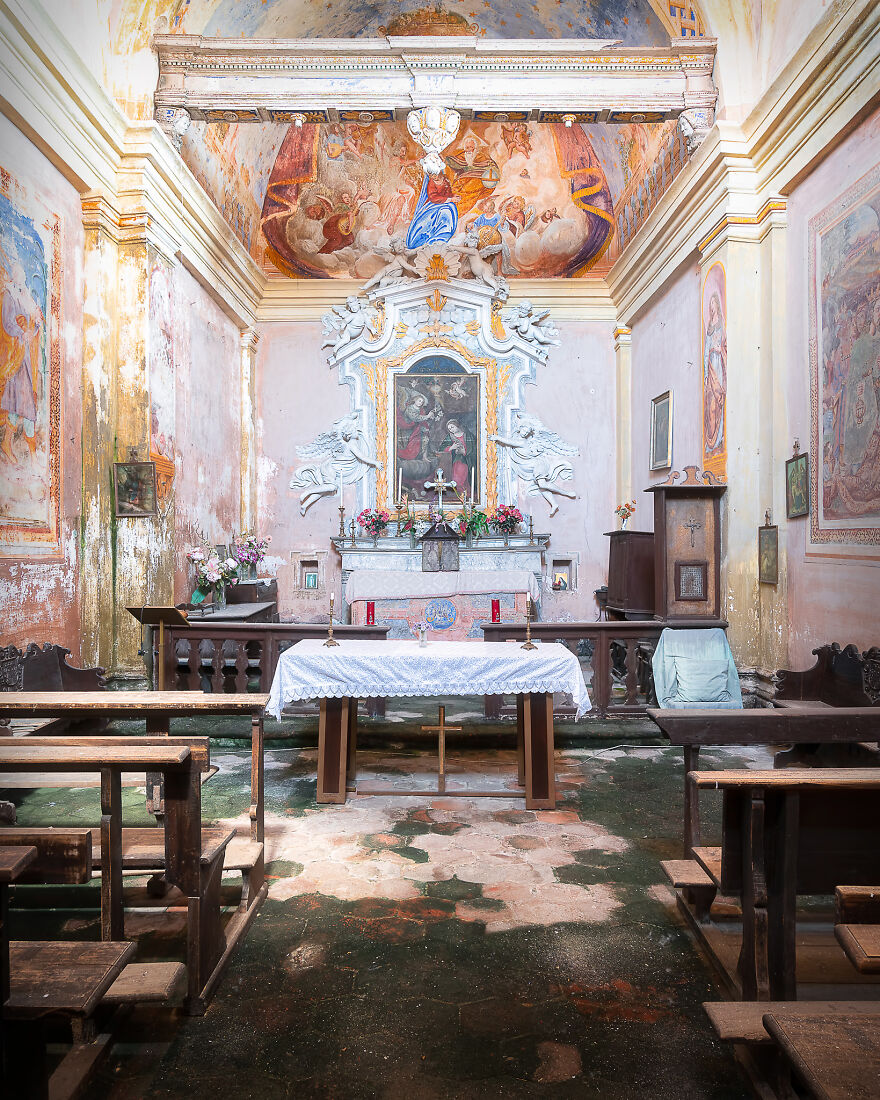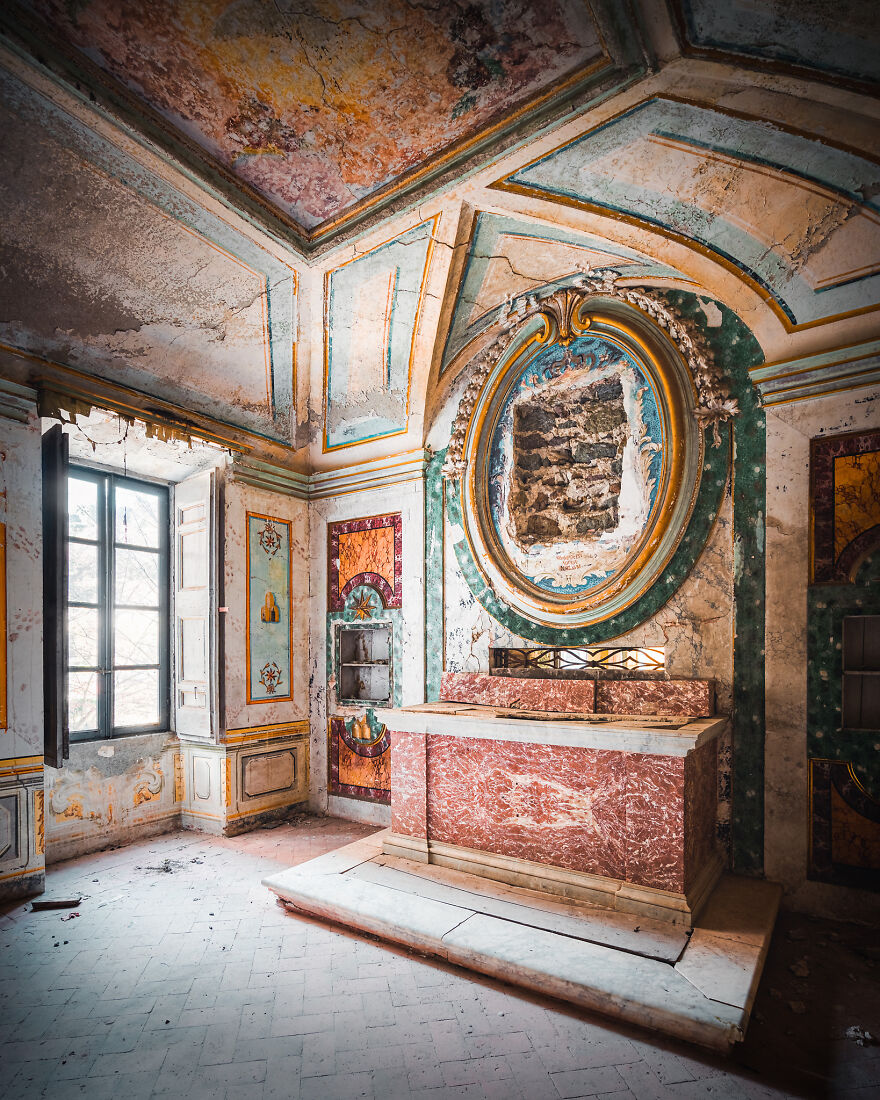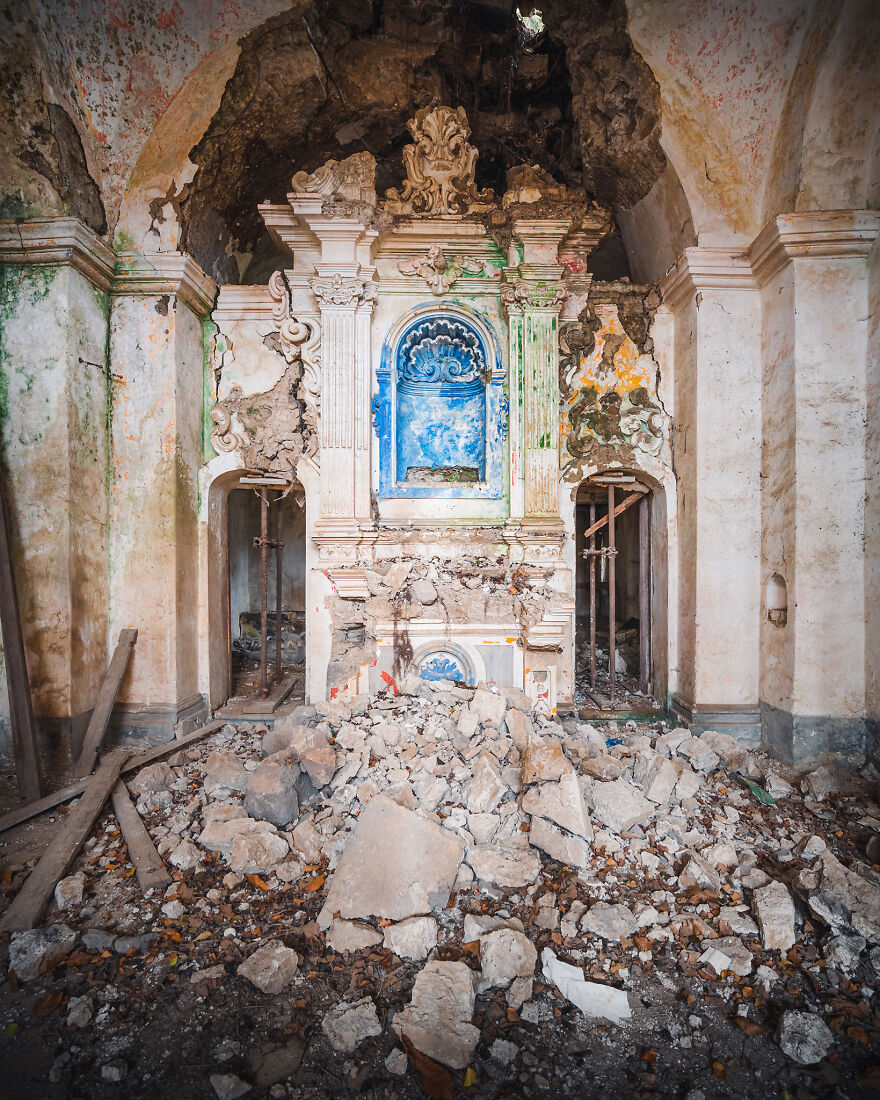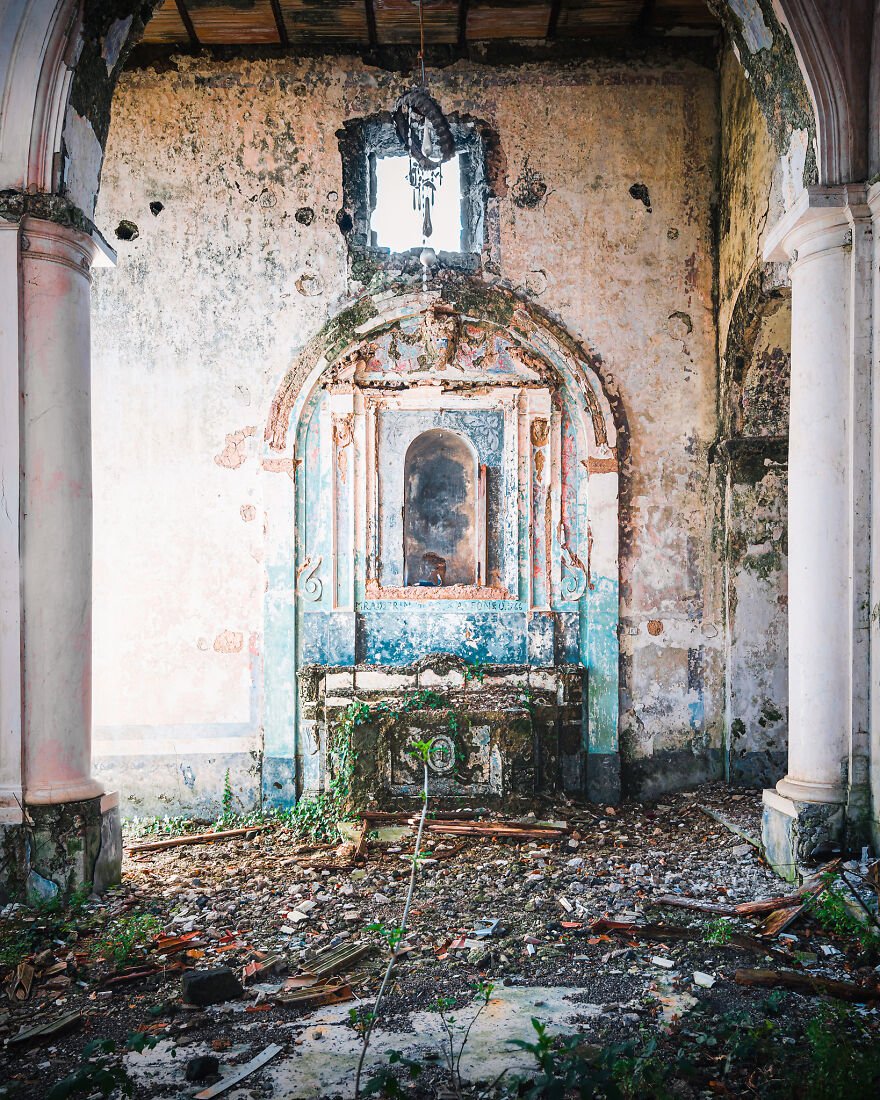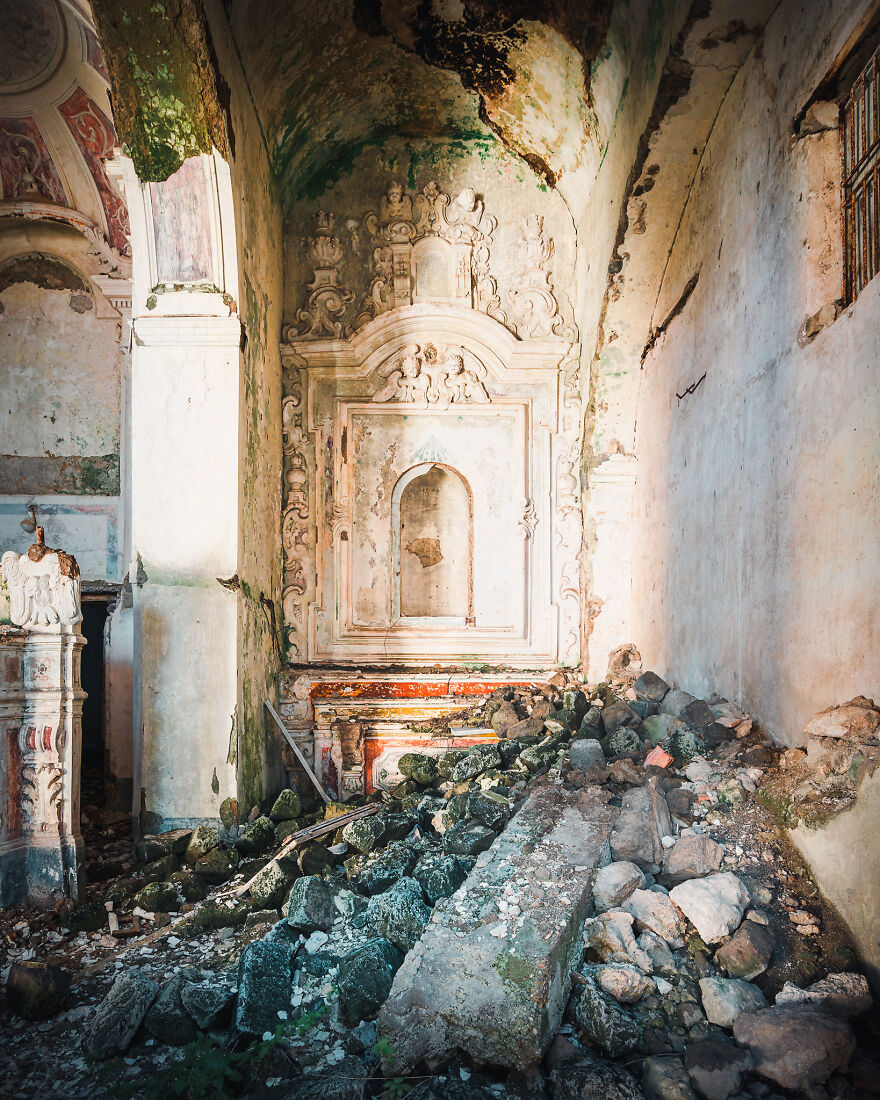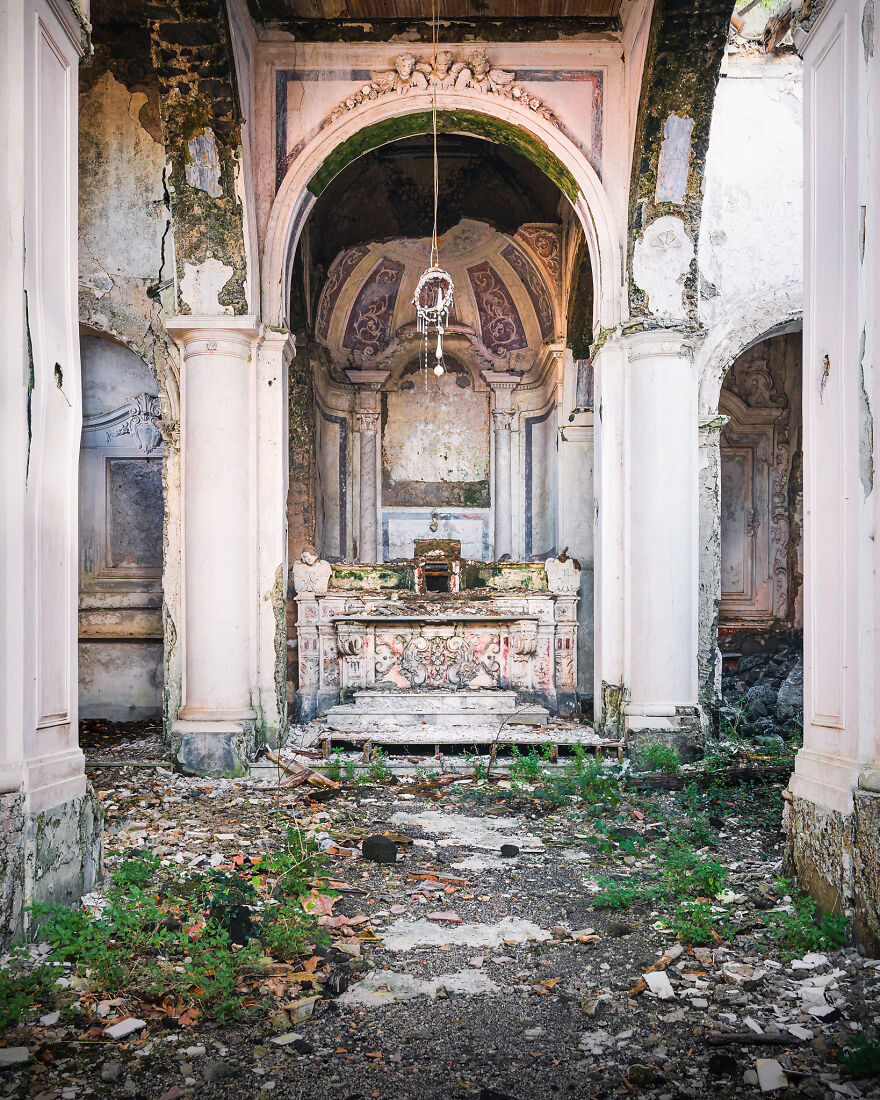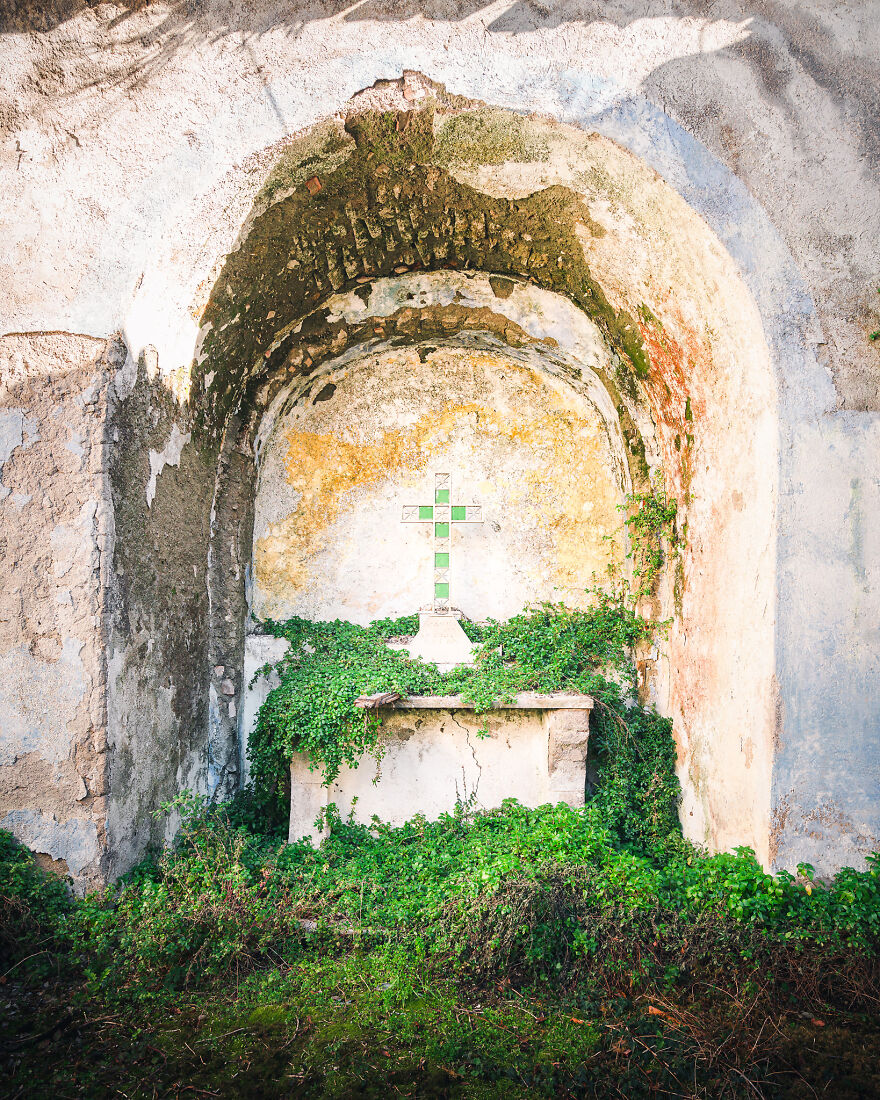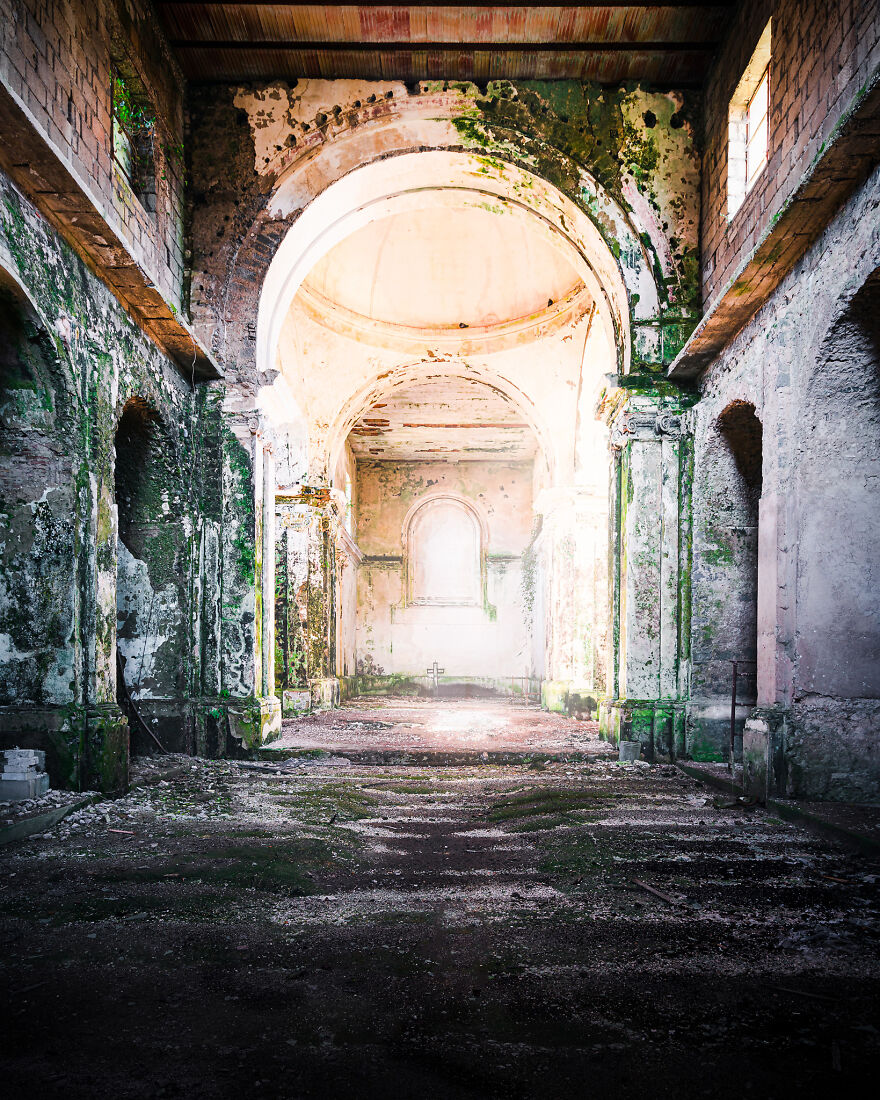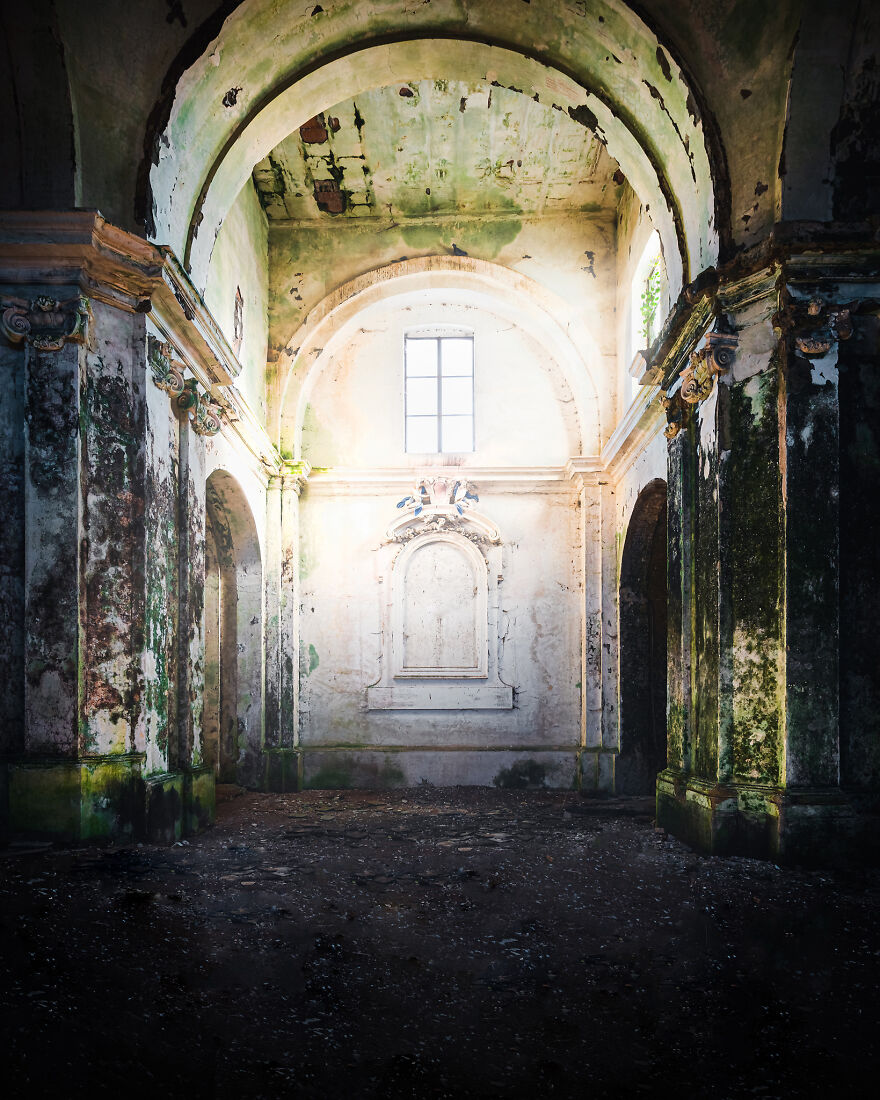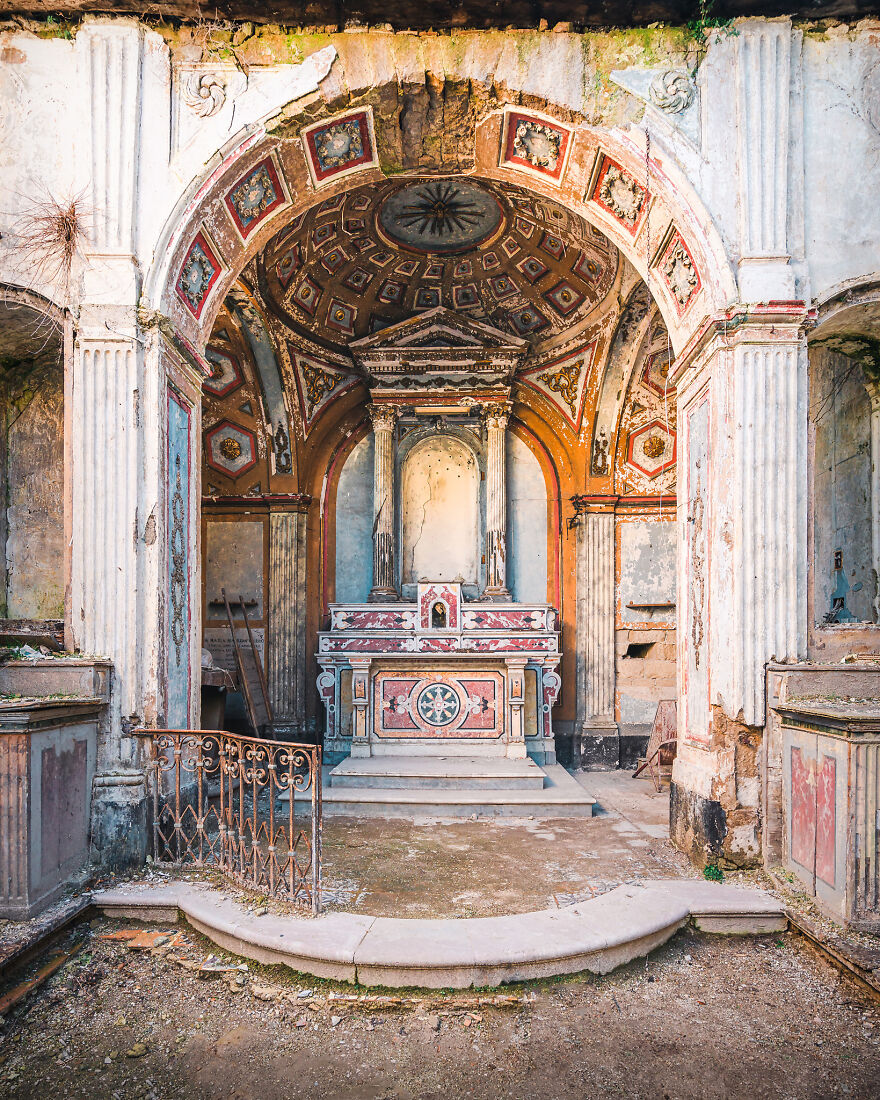Photographer Captures Stunning Pictures Show The Decline Of The Church In Italy
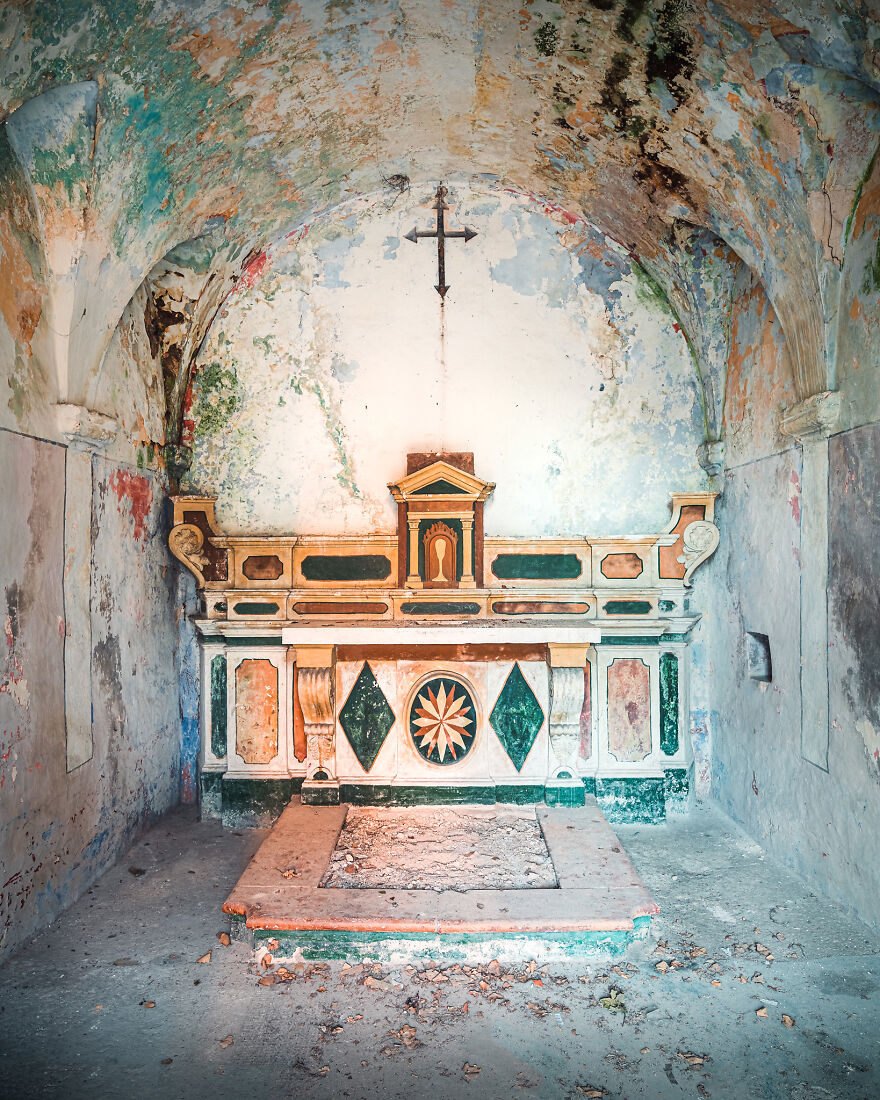
Roman Robroek is a professional photographer from The Netherlands. He has a particular fondness for urban photography and has traveled worldwide to explore unique places filled with history, memories, and beauty. Whenever Roman would visit a new destination, he would often find himself looking into abandoned homes, empty buildings, and urban decay.
More: Roman Robroek, Instagram h/t: boredpanda
These topics deeply fascinate him, especially because of all the unanswered questions and the mystery they hold. There is beauty in things that are forgotten, and taking a closer look can be an incredible way to get to learn more about the world around us, and how things change with time as history unfolds.
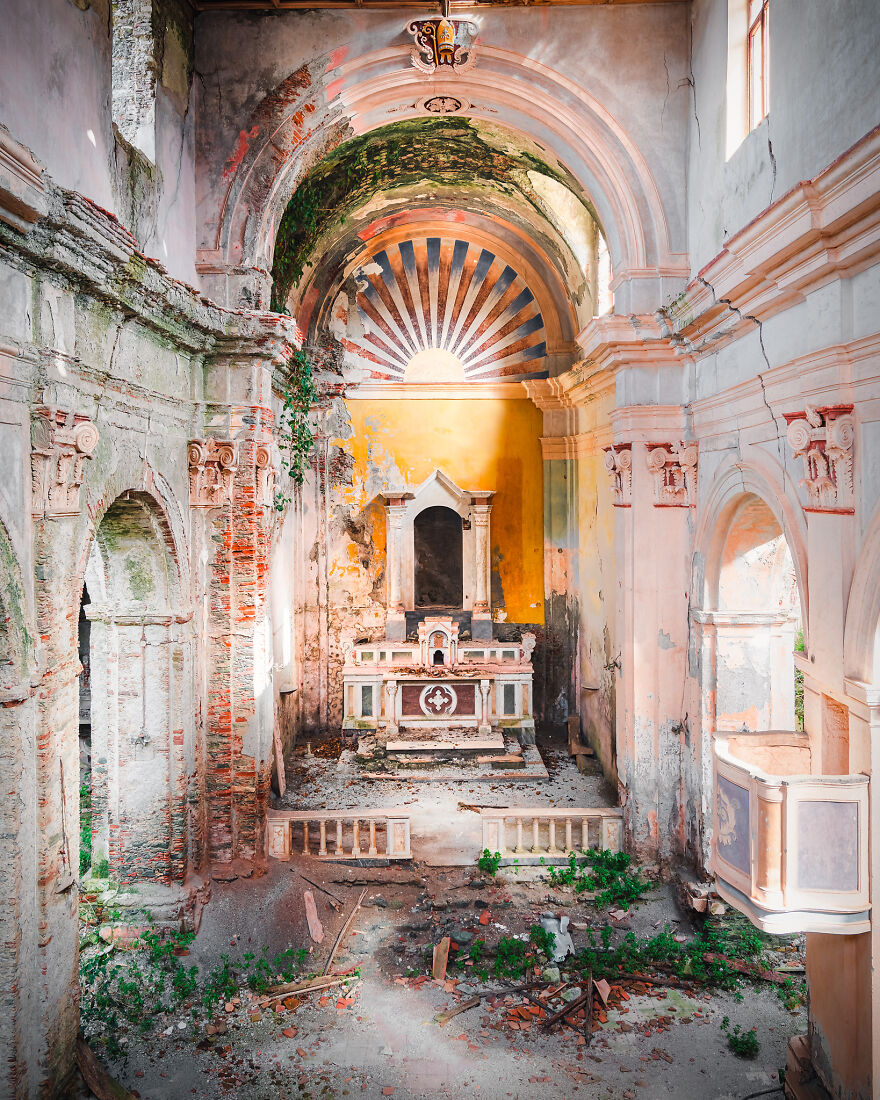
According to Roman: “Church buildings have been a mainstay feature throughout Europe for centuries. From quaint country chapels to luxurious and majestic cathedrals, the “Old World” is home or has been home to hundreds of churches. Some of them are maintained in pristine shape, highly regarded as national treasures, while others meet a rather different ending, being left in the hands of time and its relentless way of decaying things.”
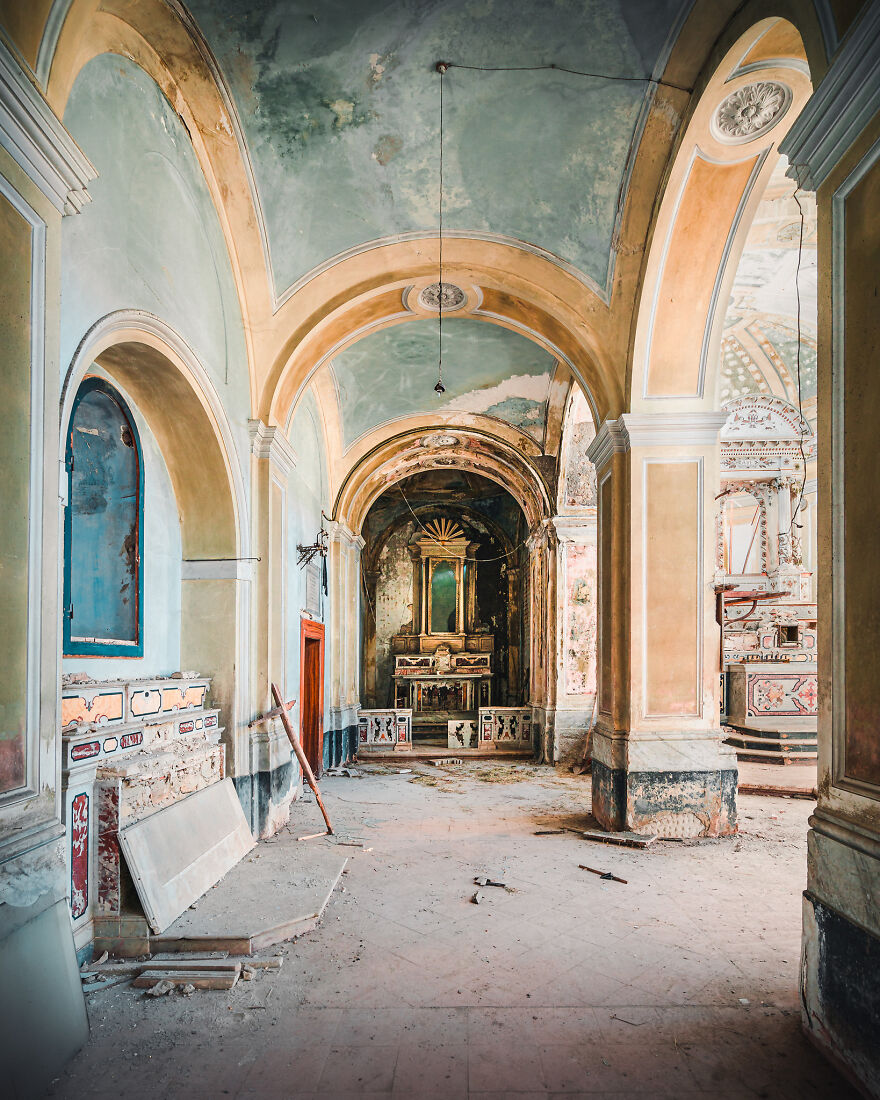
“Italy is a perfect example of a country that, despite greatly valuing its history, architecture, culture, and connection with the Church as an institution, still features its share of abandoned churches. In this post, you will find 100 photos of abandoned churches and chapels that I photographed throughout Italy.”
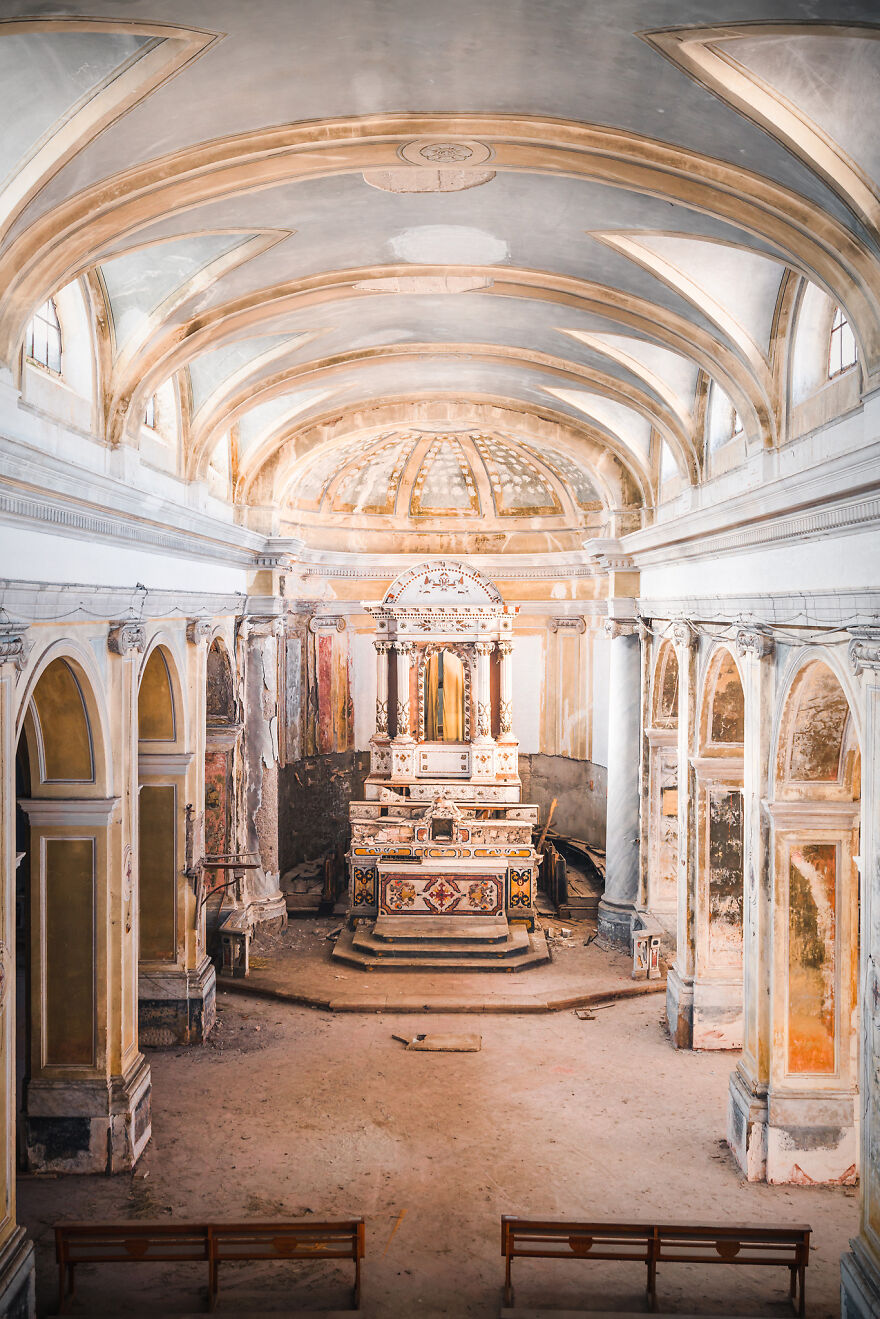
“From the far north of the country down to the most remote areas of the southern Italian islands, there are remnants of ancient churches, some of which are only known to smaller local communities. In some cases, abandoned churches and religious buildings might not even be known outside of the lore of a specific neighborhood, and as time goes by, knowledge of these places and their past history gets simply lost through time. Even large cities like Naples in the Campania region are actually home to many unsuspecting former churches.”
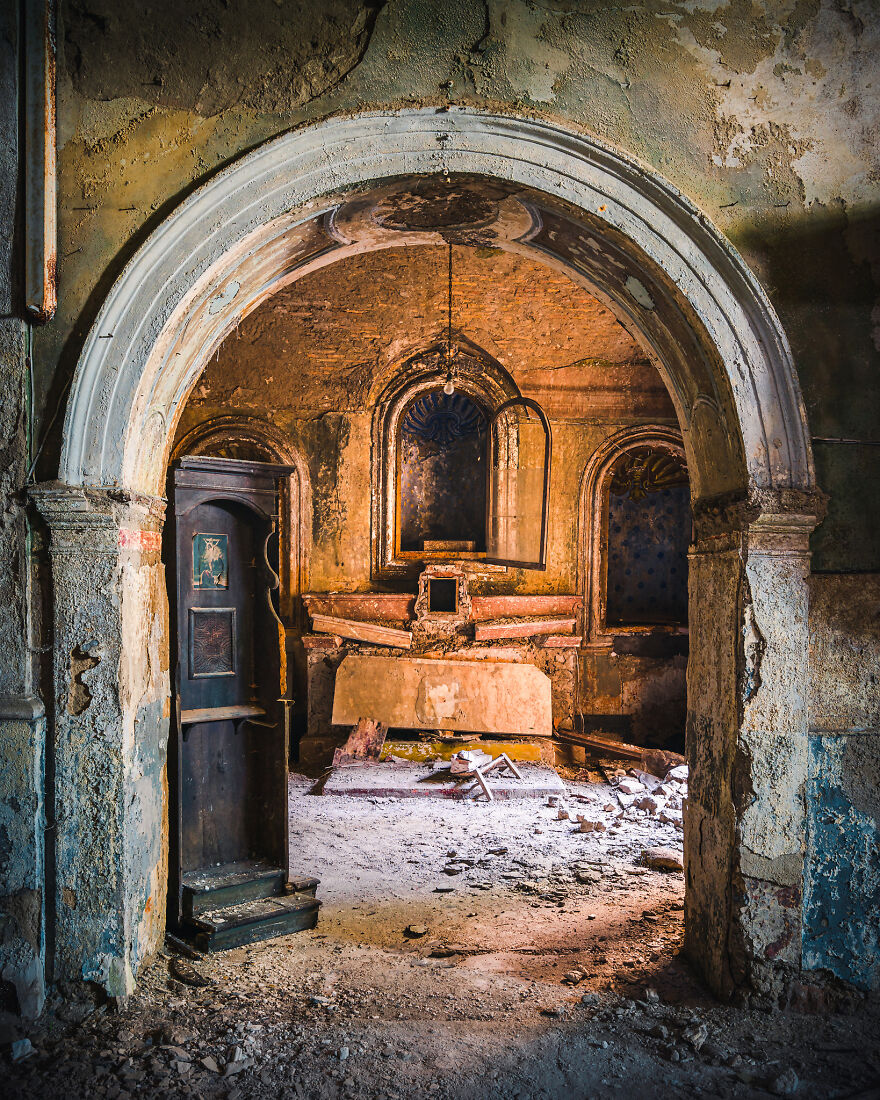
“The rise of secularism is often linked with a decline in church attendance throughout Italy. Ever since the age of illuminism, progressive thinking and more open-ended views on religion became tolerable as public views. All of a sudden, it was no longer dangerous to express doubt and even question the values of Christianity as a religion or an institution. At the same time, the idea that a slow but steady progressive decrease in religious fervor might have contributed to a lack of interest in some local churches is probably not the most likely cause for the majority of abandoned churches that are currently scarred throughout Italy. It is much more likely that other social and economic factors fell into place.”
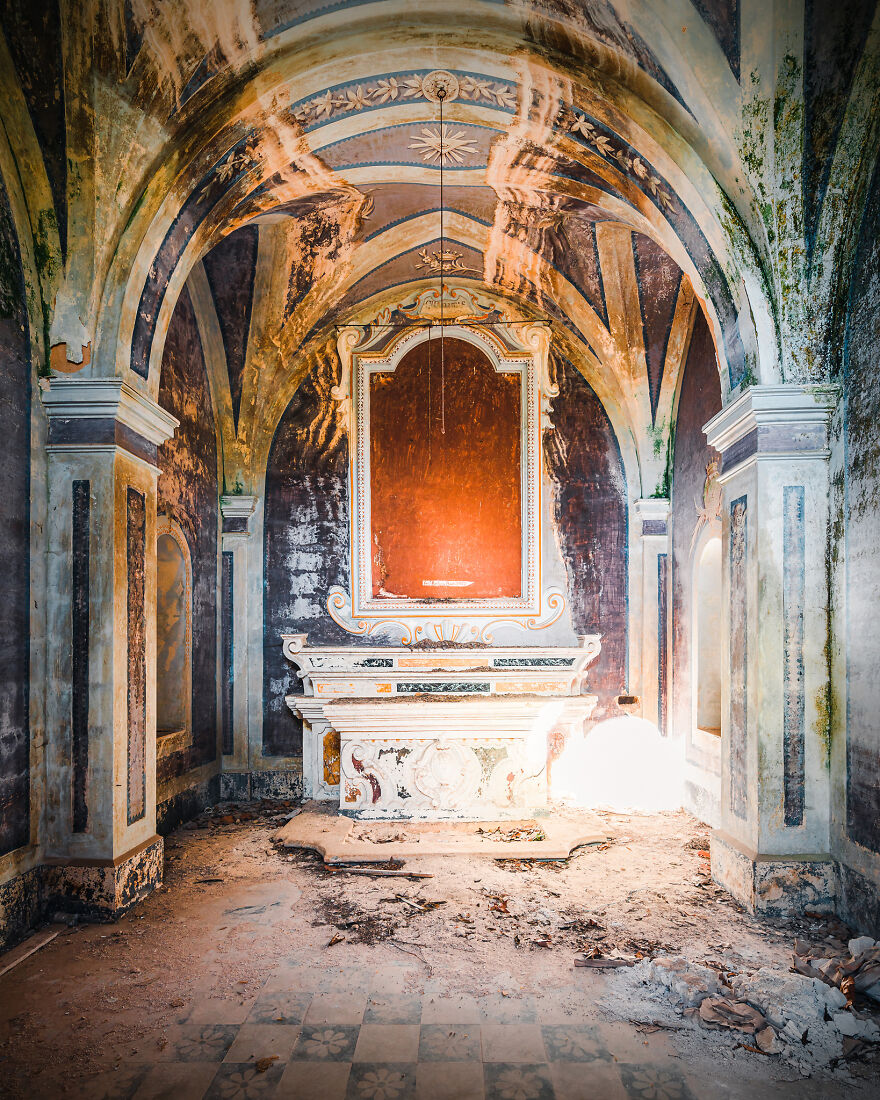
“It’s quite common to find abandoned churches in smaller rural towns and countryside areas. However, the churches aren’t the only things being left behind. Entire towns are slowly but surely fading out. Smaller communities consolidate into bigger ones, as people are leaving small farming communities like Chianche, mentioned earlier, to seek better opportunities in larger cities or abroad.”
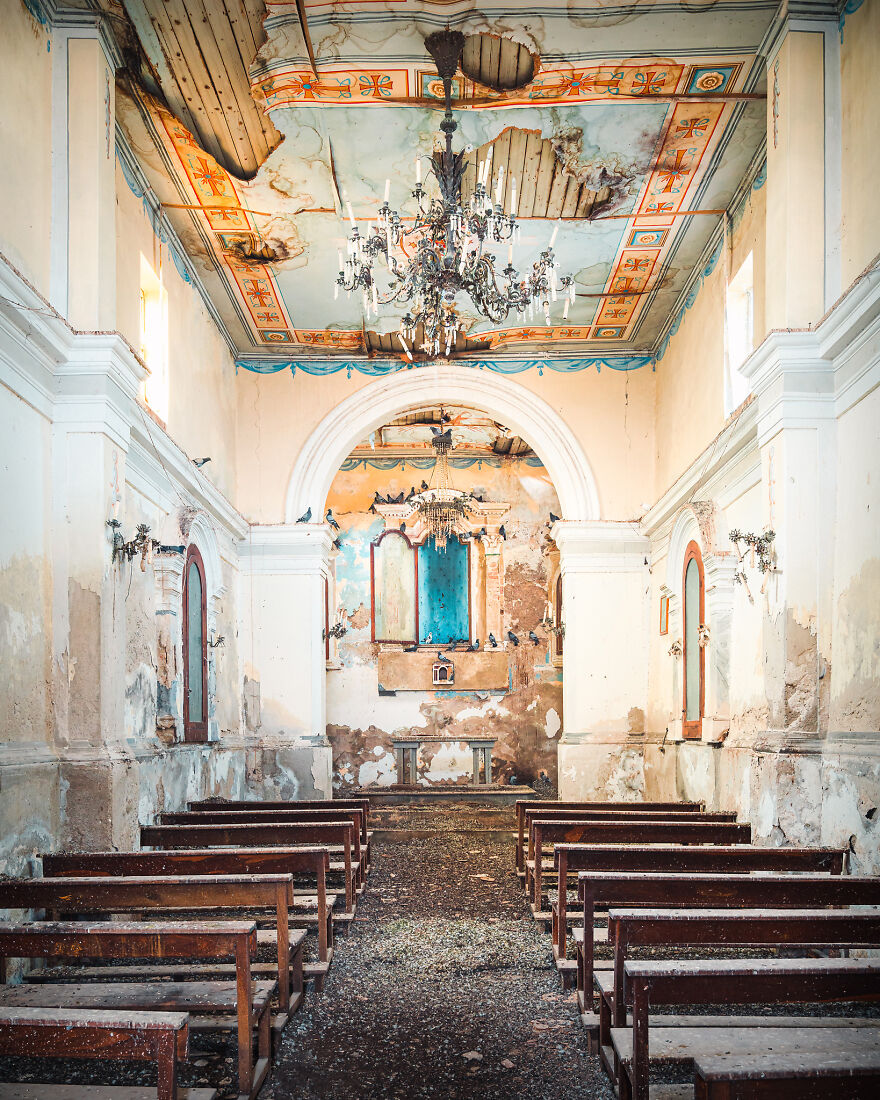
“As communities wane, job opportunities wane, administrative resources decrease, budgets plummet, and many buildings fall into disuse, and eventually, decay. This has affected schools, former public facilities, and, more importantly, churches, who simply have no reason to stay open without any community to cater to.”
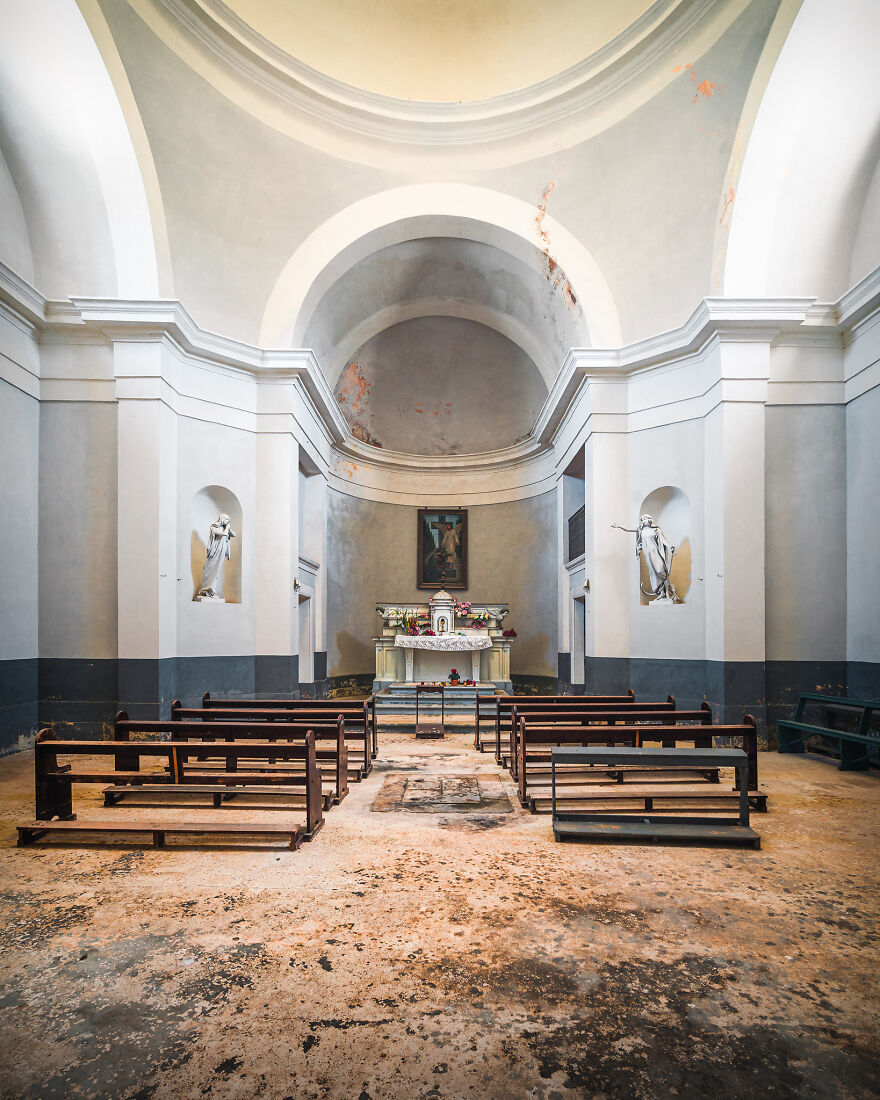
“A recent study, led by Luigi Bartolomei of the University of Bologna, focused specifically on the phenomenon of abandoned churches in Italy. The essay features data from the Church Census, comparing statistics in the Bologna area and on a national basis with various historical contexts and social landscapes. According to the study, a lack of interest in the Church isn’t the main cause of abandoned church infrastructure. The study pinpoints the exodus from smaller urban areas into big cities and the lack of plans from the Catholic Church to invest in or promote churches in larger urban areas. In other words, while churches in rural areas are simply getting abandoned due to people leaving, those who are left to their own devices in larger areas are victims of budget cuts or lack of proper management or interest in revitalizing a specific church as a place of aggregation for the community.”
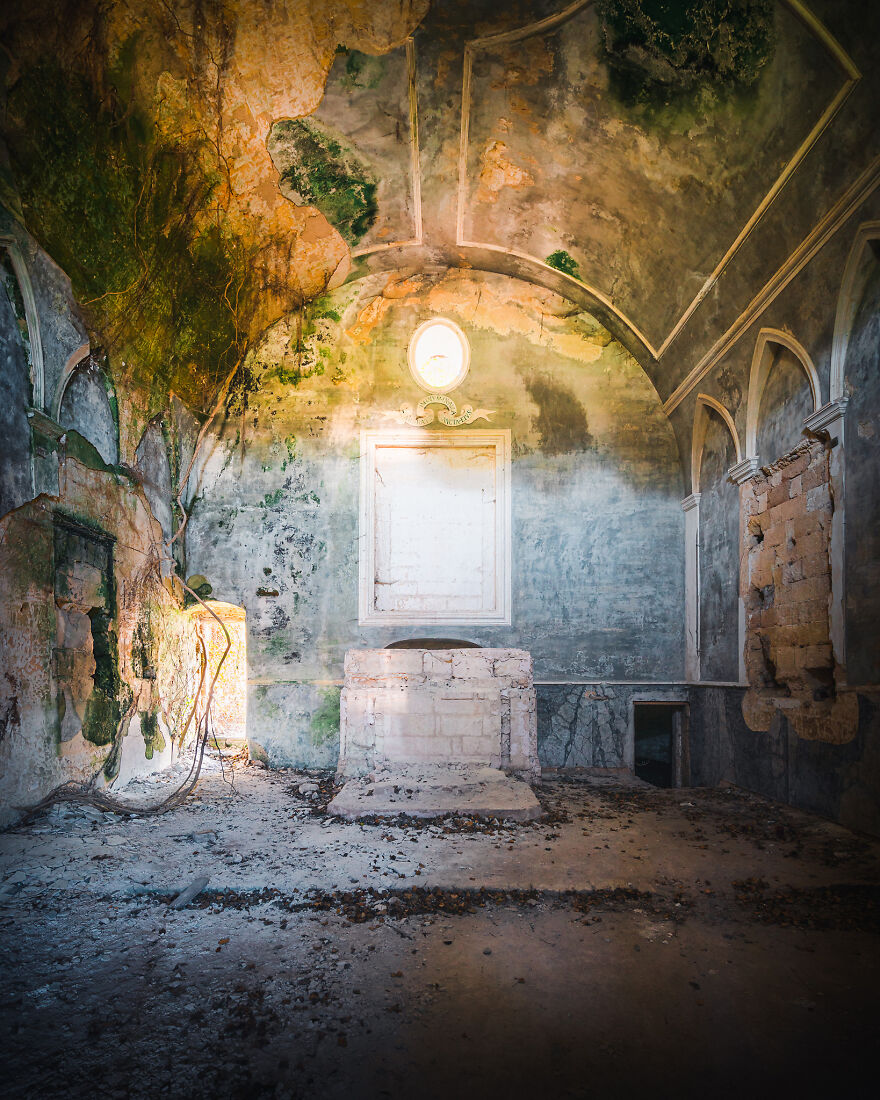
“Today, abandoned churches in Italy and elsewhere offer a unique glimpse into the past. A source of reflection, perhaps, as they prompt us to think about the future. If a church, once the most important haven in the community, can become a pile of ruins, what does that say about what we hold certain today? These are the traces of the past of many communities, and if we follow them, we can see where we all came from and perhaps where we’re going.”
